Auxier Kline, New York
March 28 - April 25, 2025

The works in this exhibition combine observational drawing with biomorphic abstraction, interlacing the kind of illustration most familiar from natural history guides with bodily shapes that hover on the edge of the appealing and the grotesque. Hovering between abstraction and figuration, many of the paintings seem caught in the process of transformation; goopy oil stick melts into thinly rendered linework, and flora and fauna waver in and out of perception. Cut with a jigsaw, the edges of the panels undulate slightly, like leaves or sheets of paper.
In the large new diptych Crypsis, a central butterfly shape lurks behind spiky jimsonweed and a tangle of branch-like tubular structures. Shading on a leaf suggests both hair and muscle, and the overall impression is of macro and micro worlds enmeshed. The small new paintings, Skipper and Brushfoot, named for local butterflies, zoom in so far that their winglike patterns become abstract texture.
For the artist, an interest in ‘nature’ as a subject comes from time spent working as a wilderness guide. For 10 years, they made a living guiding expeditions for an outdoor school. ‘Nature’, they realized, has often been weaponized to delineate the bounds of heteronormative propriety, erase Indigenous nations, and otherwise police the boundaries of the dominant culture. While they often drew directly from observation in the ‘wilderness’, they became increasingly aware that this was a fraught gesture, one which begs the question: who is seeing who, and how?
During the pandemic lockdowns of 2020, they developed a series of drawings which all featured butterflies or moths (or parts of their wings), and eyes which appeared to look back at the viewer. These have since evolved into oil paintings, and the artist talks about them as a reflection of their own experience: “during the past four years, my gender identity has been in flux and my obsession with butterflies and moths (particularly the phase of their life cycles called ‘diapause’, when they transform) reflects coming to terms with my own trans non-binary identity, transitioning, and the destabilizing experience of having to rethink much of how I define and experience the world. I have a number of questions, as I develop my ongoing project: how does biomorphism relate to queerness, transness, and painting? How can elements of body horror in my work unsettle ways of looking at them? Is there such a thing as queer abstraction, or a queer art which eschews human representation?”
—
SARAH DAVIDSON (b. 1989) is originally from Canada, where they pursued their art education, at Emily Carr University (BFA, Visual Art, 2015) and the University of Guelph (MFA, Visual Art, 2019). From 2011-2021, they worked as a hiking and climbing guide, spending months of each year in remote locations in Canada, the United States and Scandinavia. They relocated to New York in 2022, and currently live and work in Brooklyn. They have exhibited their work throughout Canada and the United States, including solo exhibitions at Shin Gallery, New York (2024), NARS Foundation, Brooklyn (2023), Wil Aballe Art Projects, Vancouver (2022), Feuilleton, Los Angeles (2021), and Erin Stump Projects, Toronto (2019). Their two person booth at NADA (presented by Wil Aballe Art Projects alongside Daniel Giordano) was named one of the ‘Best Booths of NADA’ by ARTnews in 2023, and their work has been covered by Mousse Magazine, Canadian Art, Fukt Magazine, and more. Their upcoming projects include curating a group exhibition at Springs Projects, New York (opening June 2025), which considers queer and trans ecologies and includes artists from New York, Montreal, Vancouver, and Rotterdam (NL).
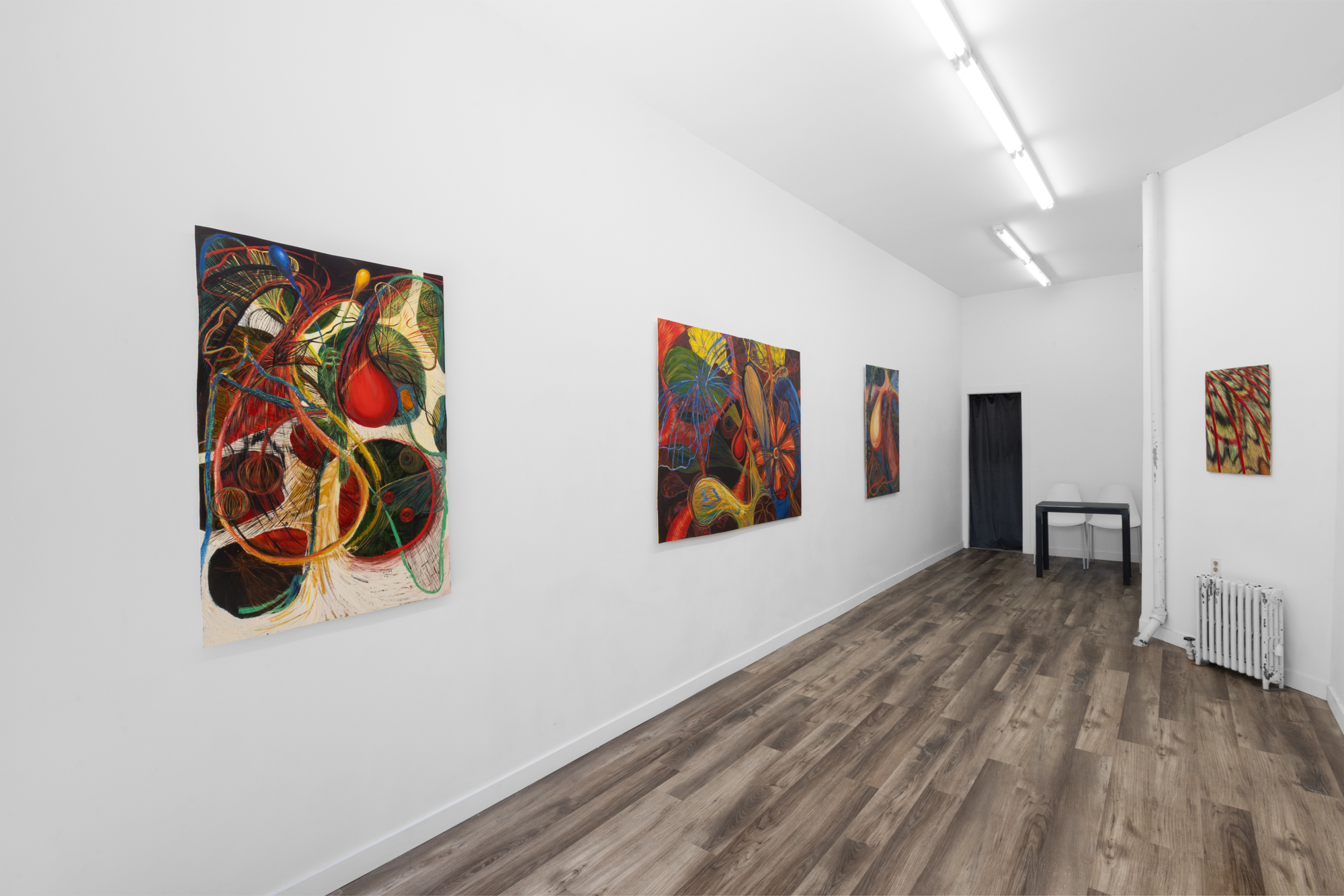
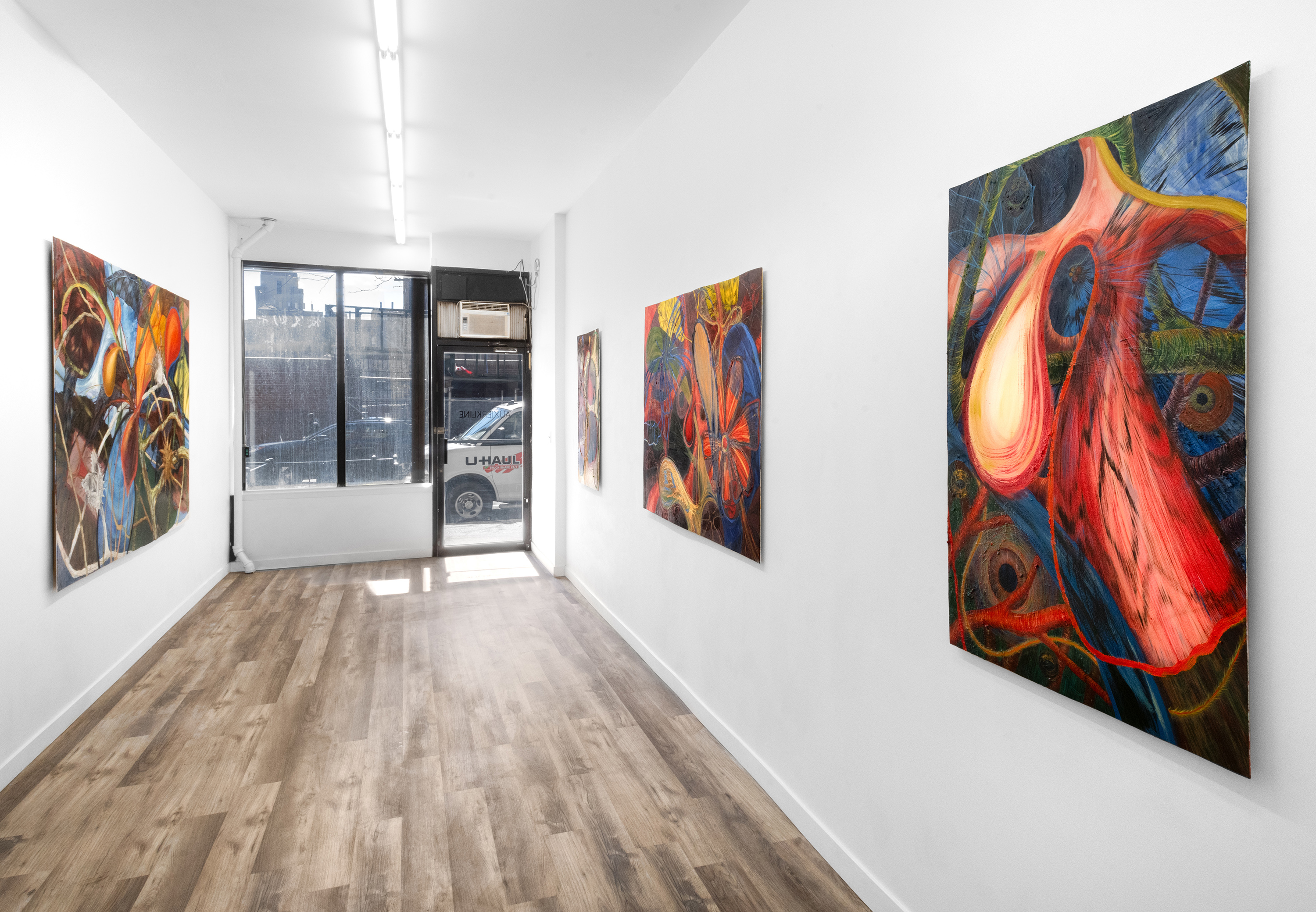
 Crypsis, oil on panel, 96 x 63 in, 2025
Crypsis, oil on panel, 96 x 63 in, 2025
Brushfoot, oil on panel, 15 x 25 in, 2025

Skipper, oil on panel, 15.5 x 24.5 in, 2025

Clearwing, oil on panel, 32 x 47 in, 2025
 Loud Flower, oil on panel, 65 x 47.5 in, 2024
Loud Flower, oil on panel, 65 x 47.5 in, 2024
Transboundary butterfly, oil on panel, 30 x 47 in, 2024
NARS Foundation, Brooklyn
Oct 6 – November 1, 2023
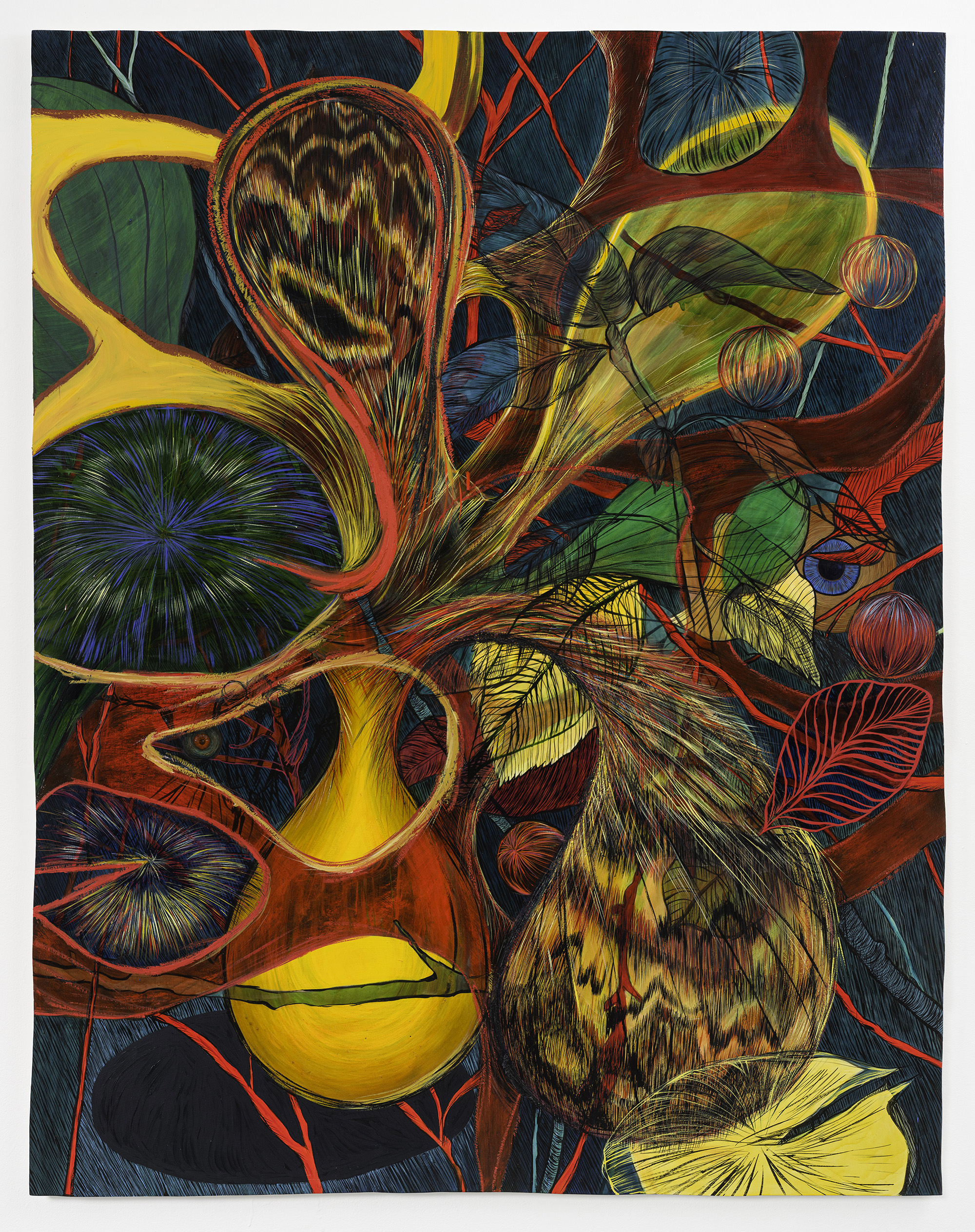
The Gynandromorph, oil on panel, 46 x 59 in, 2023
While they often draw directly from ‘nature’, Sarah Davidson’s works diffract distinctions between embodied self and other through a queer ecological lens: critters and space collapse into one another, suggesting a permeable web. Both the eye and the mind work towards the known--animals, plants, brush marks, lines--but are caught in a space of undoing. A question floats among the forms: who’s seeing who, and how?
Fingery Eyes references a term coined by writer Eva Hayward as a means through which species perceive each other via sensuous manifesting; “a queer reading of how making sense and sensual meaning are produced through determinable and permeable species boundaries.”
In this new series of paintings and drawings, the intricate linework of scientific illustration tangles with uncanny biomorphic form. Meshes of hatching reveal glimpses into a jumble of images, and eyes peer out from within. The works weave together observational drawing and an abstract vocabulary of shapes to evoke bodies (human and otherwise) and suggest an ambiguous interiority. In the world of these images, looking and other forms of sensing disintegrate into each other, revealing something porous, strange and seductive.
The painting The Gynandromorph seems caught in the process of transformation; goopy oil stick melts into thinly rendered linework, and flora and fauna waver in and out of perception, while a central blob either emerges from or is digested by a mesh-like web of red-brown. To the upper right a plant growing through the sidewalk outside the artist's studio is rendered in delicate black; elsewhere recognizable lily pads, clover, and insects peek out from within the fray. The image reveals itself to be composed of equal parts local observation and poetic license. The edges of the panel waver slightly, like a leaf or a sheet of paper, a plein air study with a life of its own.
Sarah Davidson (they/them, b.1989, Canada) lives and works in New York, NY. Recent solo exhibitions include NARS Foundation, Brooklyn, NY (2023), Wil Aballe Art Projects, Vancouver, Canada (2022), Feuilleton, Los Angeles, CA (2021), and Erin Stump Projects, Toronto, Canada (2019). Recent group exhibitions include NADA NY, Wil Aballe Art Projects, New York, NY (2023), PASSE-PARTOUT, Luxembourg Institute for Artistic Research, New York, NY (2023), BLOOMDOOMROOM, the plumb, Toronto, Canada (2021), Deep Vision, Cassandra Cassandra, Toronto, Canada (2020), SUPER, NATURAL, Unit 17, Vancouver, Canada (2019) and many more. Their work is included in the collections of the Royal Bank of Canada and Burnaby Art Gallery, Burnaby, Canada. They received an MFA from the University of Guelph (2019), and a BFA from Emily Carr University of Art & Design (2015).
Fingery Eyes references a term coined by writer Eva Hayward as a means through which species perceive each other via sensuous manifesting; “a queer reading of how making sense and sensual meaning are produced through determinable and permeable species boundaries.”
In this new series of paintings and drawings, the intricate linework of scientific illustration tangles with uncanny biomorphic form. Meshes of hatching reveal glimpses into a jumble of images, and eyes peer out from within. The works weave together observational drawing and an abstract vocabulary of shapes to evoke bodies (human and otherwise) and suggest an ambiguous interiority. In the world of these images, looking and other forms of sensing disintegrate into each other, revealing something porous, strange and seductive.
The painting The Gynandromorph seems caught in the process of transformation; goopy oil stick melts into thinly rendered linework, and flora and fauna waver in and out of perception, while a central blob either emerges from or is digested by a mesh-like web of red-brown. To the upper right a plant growing through the sidewalk outside the artist's studio is rendered in delicate black; elsewhere recognizable lily pads, clover, and insects peek out from within the fray. The image reveals itself to be composed of equal parts local observation and poetic license. The edges of the panel waver slightly, like a leaf or a sheet of paper, a plein air study with a life of its own.
Sarah Davidson (they/them, b.1989, Canada) lives and works in New York, NY. Recent solo exhibitions include NARS Foundation, Brooklyn, NY (2023), Wil Aballe Art Projects, Vancouver, Canada (2022), Feuilleton, Los Angeles, CA (2021), and Erin Stump Projects, Toronto, Canada (2019). Recent group exhibitions include NADA NY, Wil Aballe Art Projects, New York, NY (2023), PASSE-PARTOUT, Luxembourg Institute for Artistic Research, New York, NY (2023), BLOOMDOOMROOM, the plumb, Toronto, Canada (2021), Deep Vision, Cassandra Cassandra, Toronto, Canada (2020), SUPER, NATURAL, Unit 17, Vancouver, Canada (2019) and many more. Their work is included in the collections of the Royal Bank of Canada and Burnaby Art Gallery, Burnaby, Canada. They received an MFA from the University of Guelph (2019), and a BFA from Emily Carr University of Art & Design (2015).
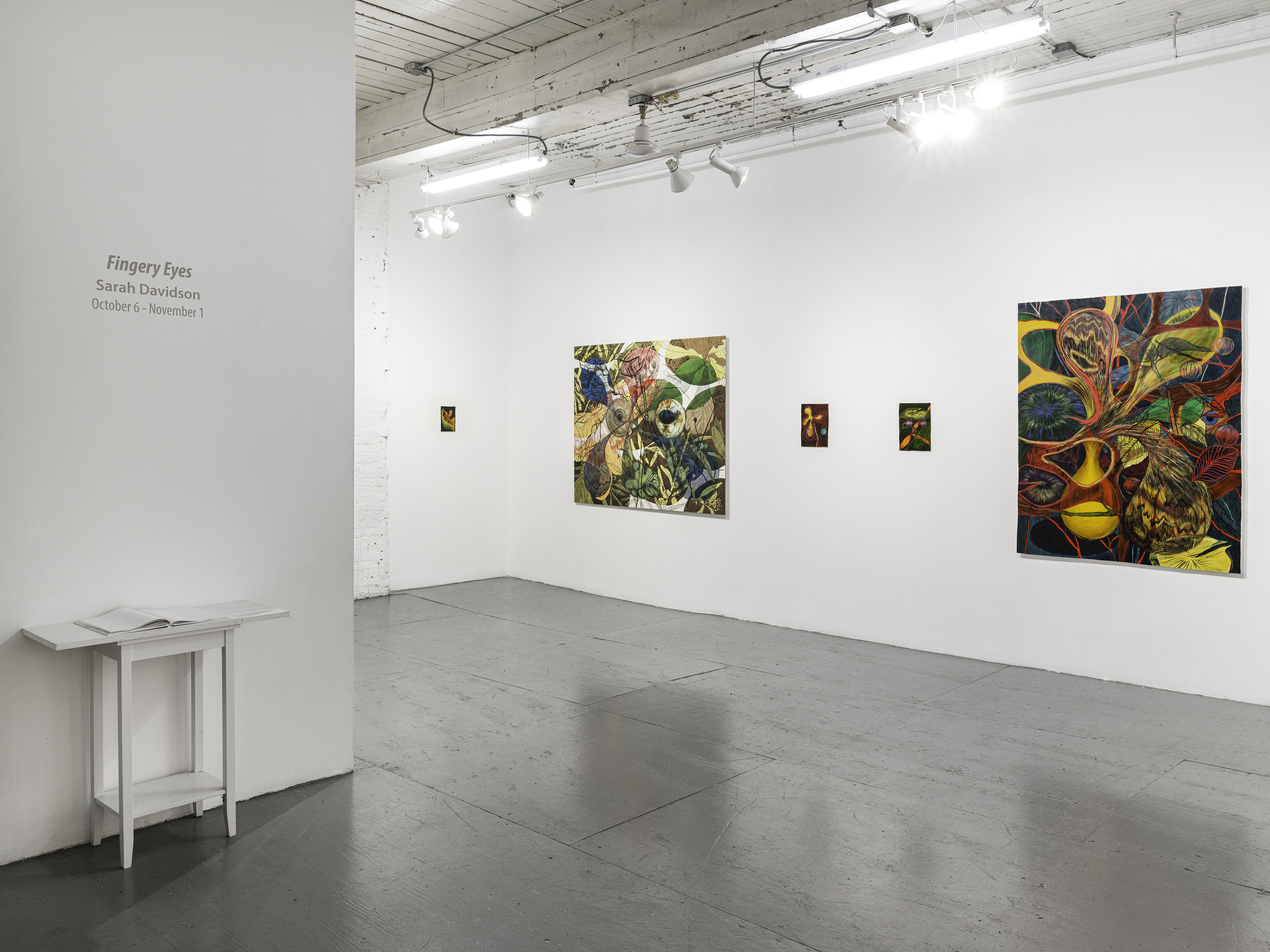
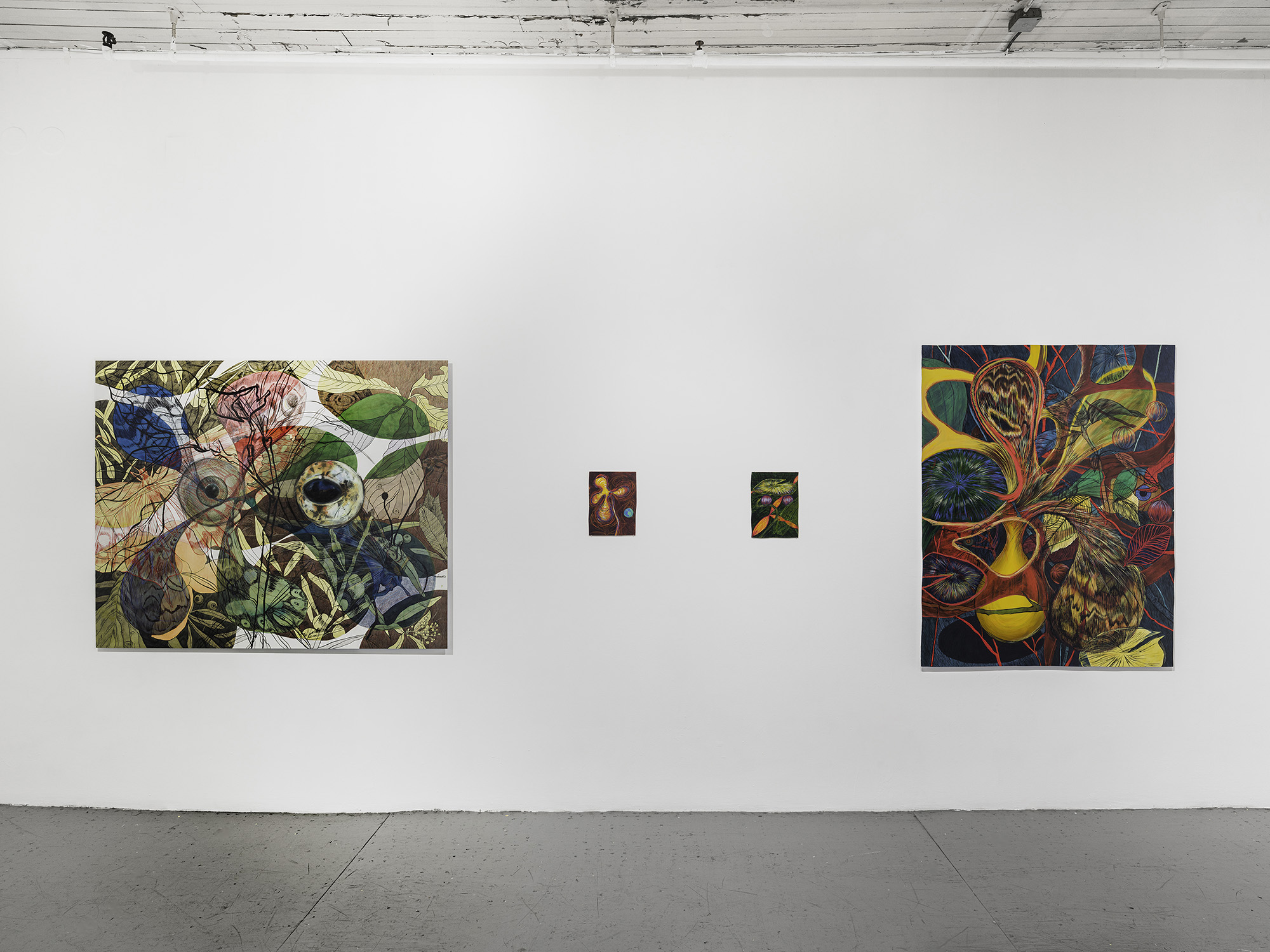

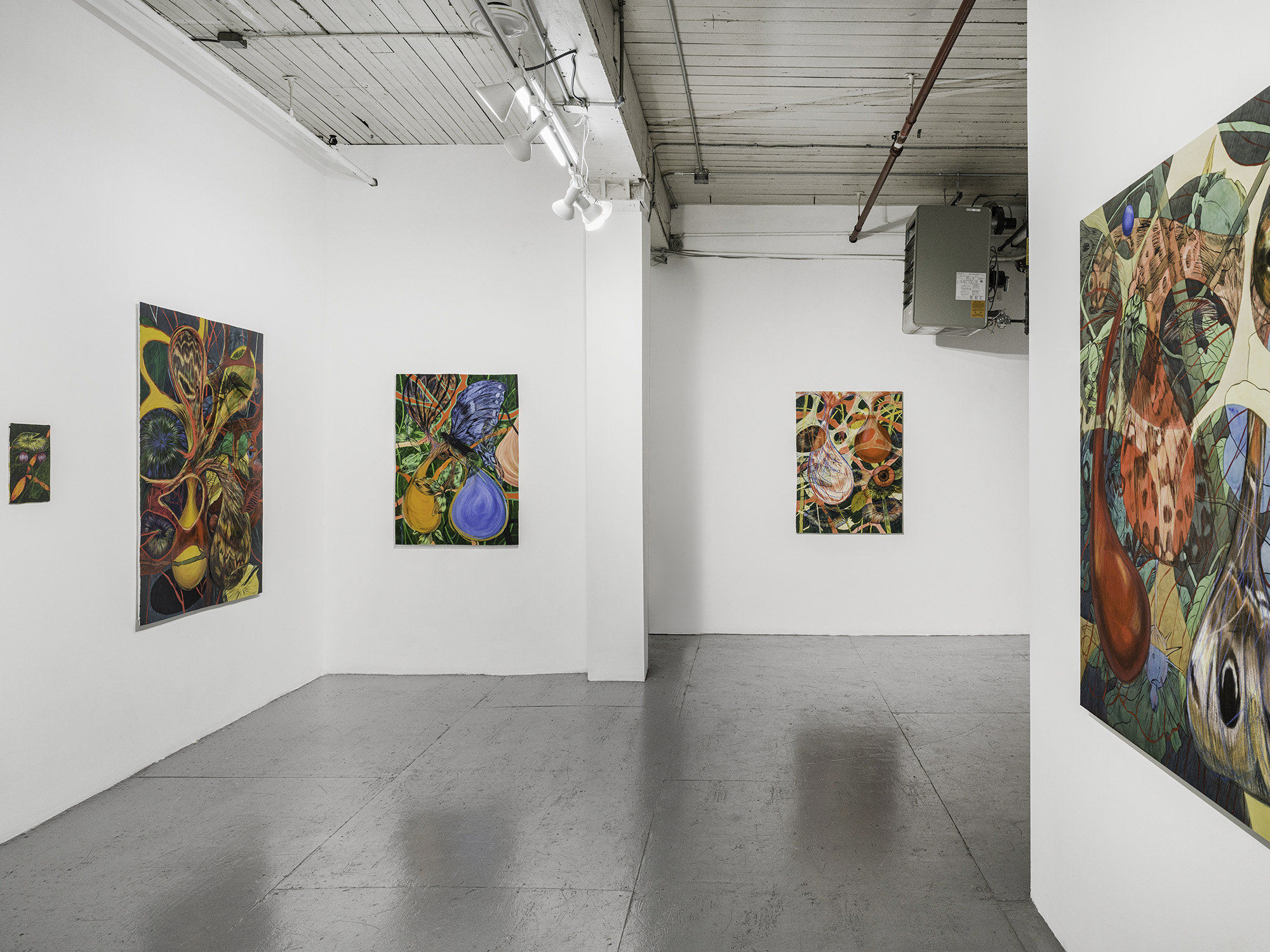
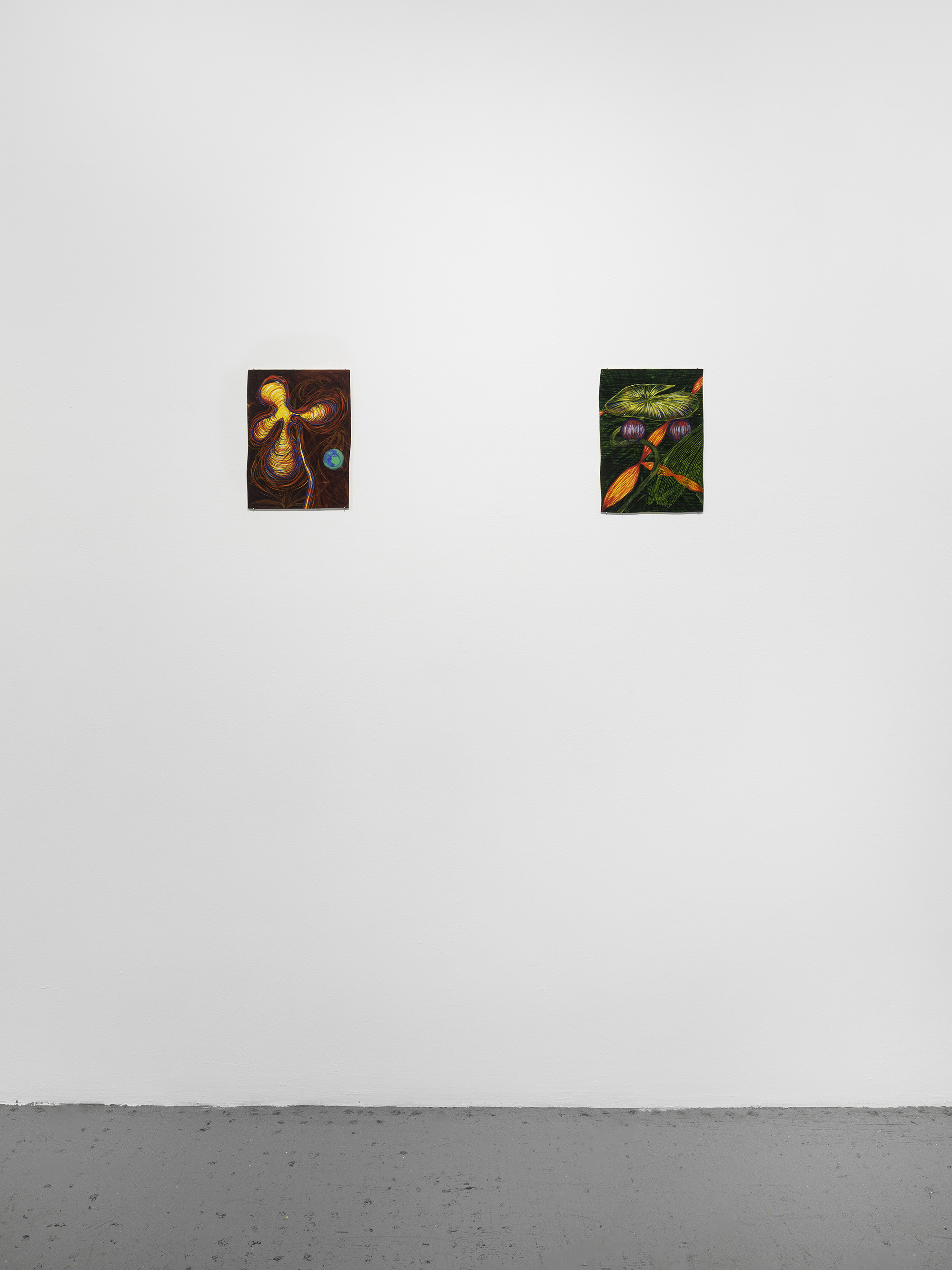
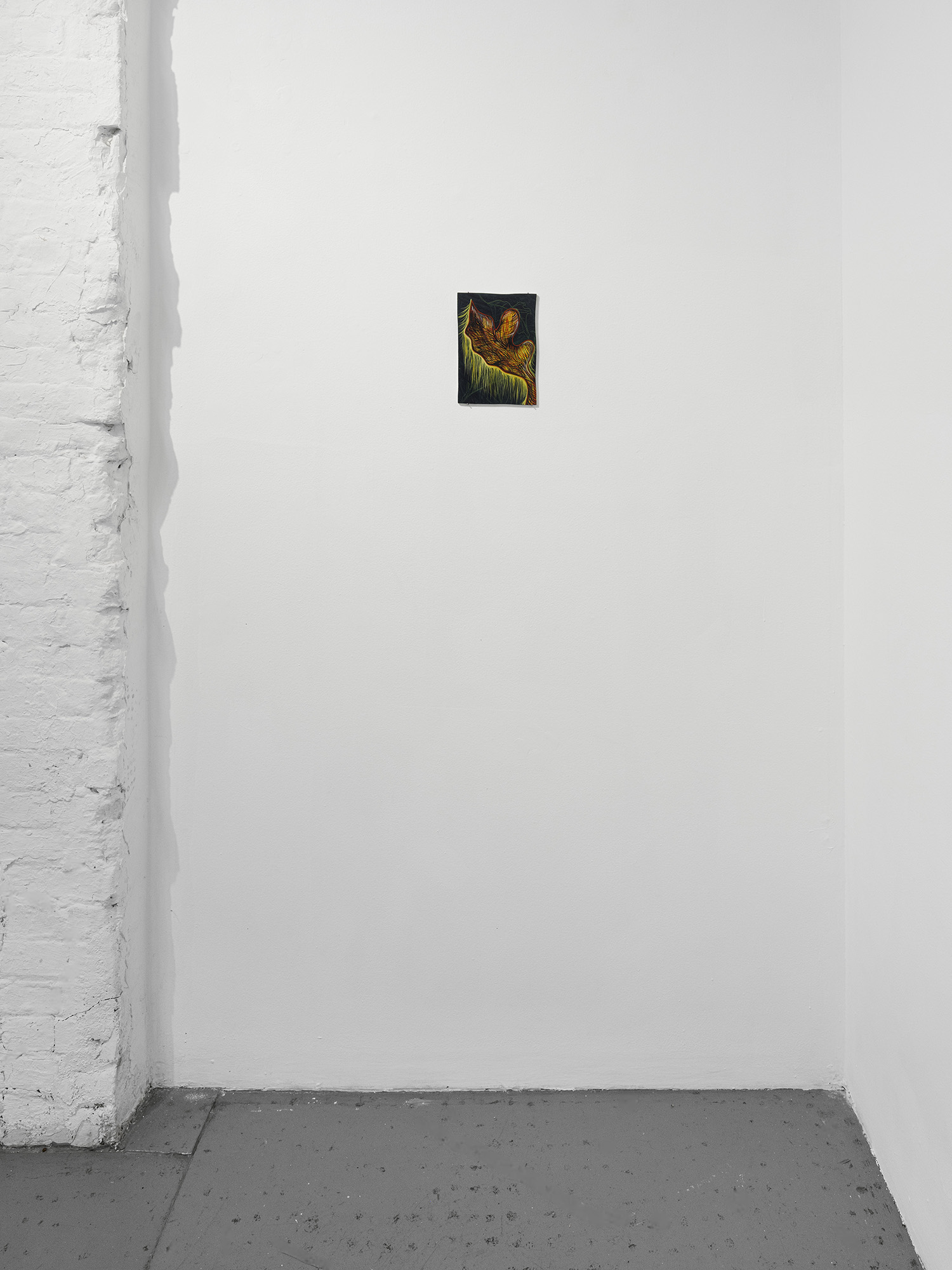

Harry, oil on panel, 6 x 8.5, 2023
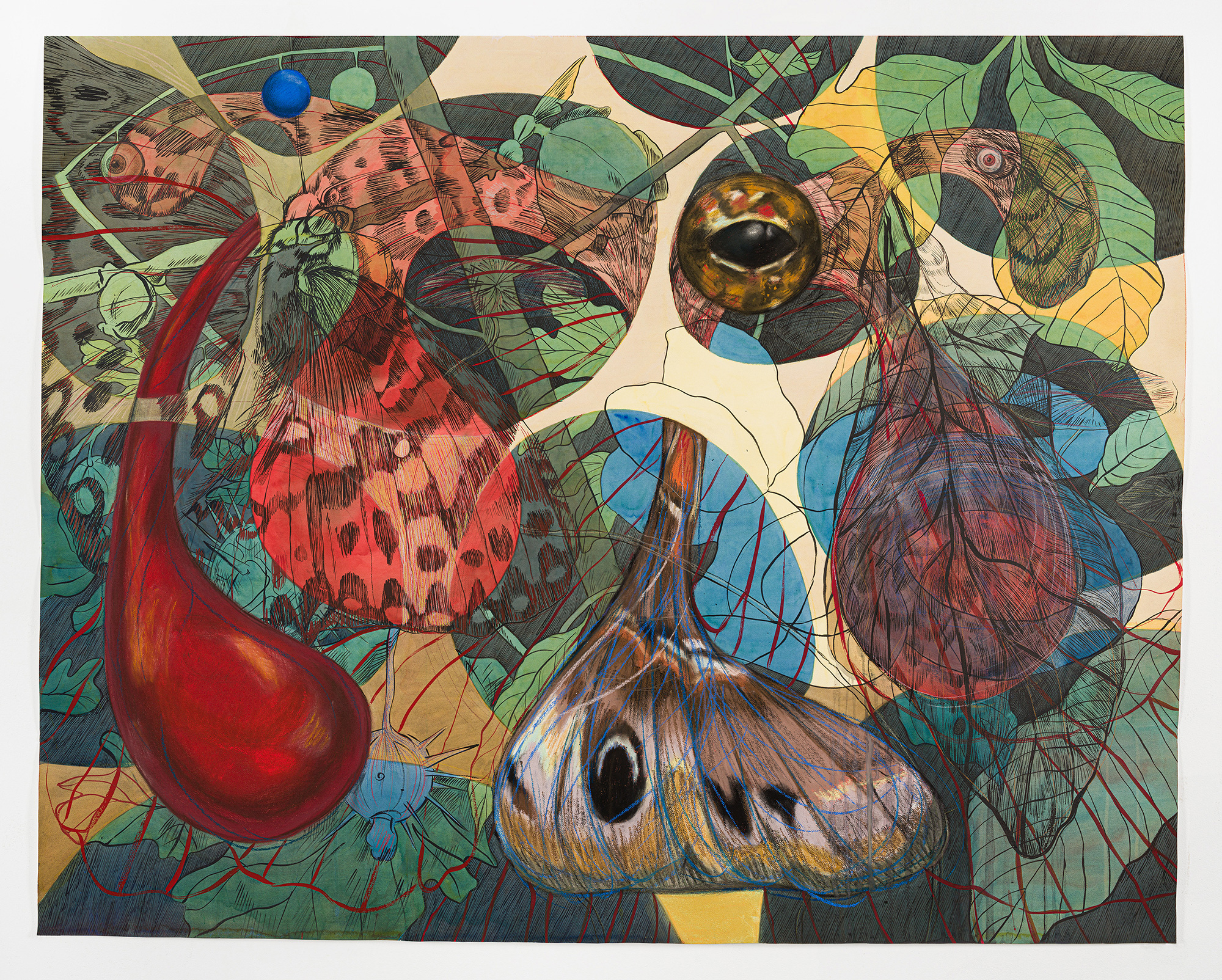
Drop In, watercolour, ink, pencil crayon and pastel on paper, mounted on dibond, 53.5 x 65 in, 2022
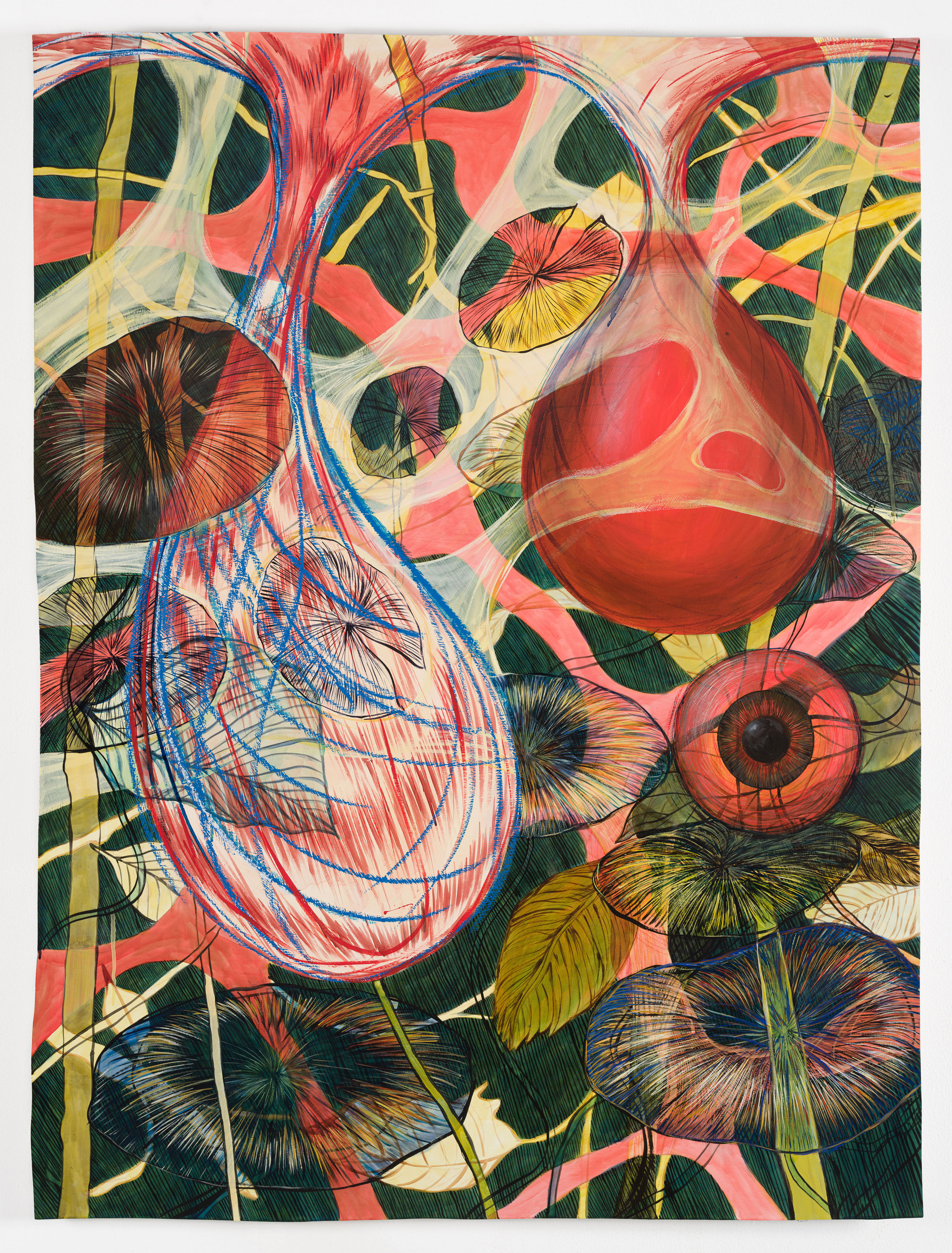
Bent Branch, oil on panel, 35 x 46.5 in, 2023
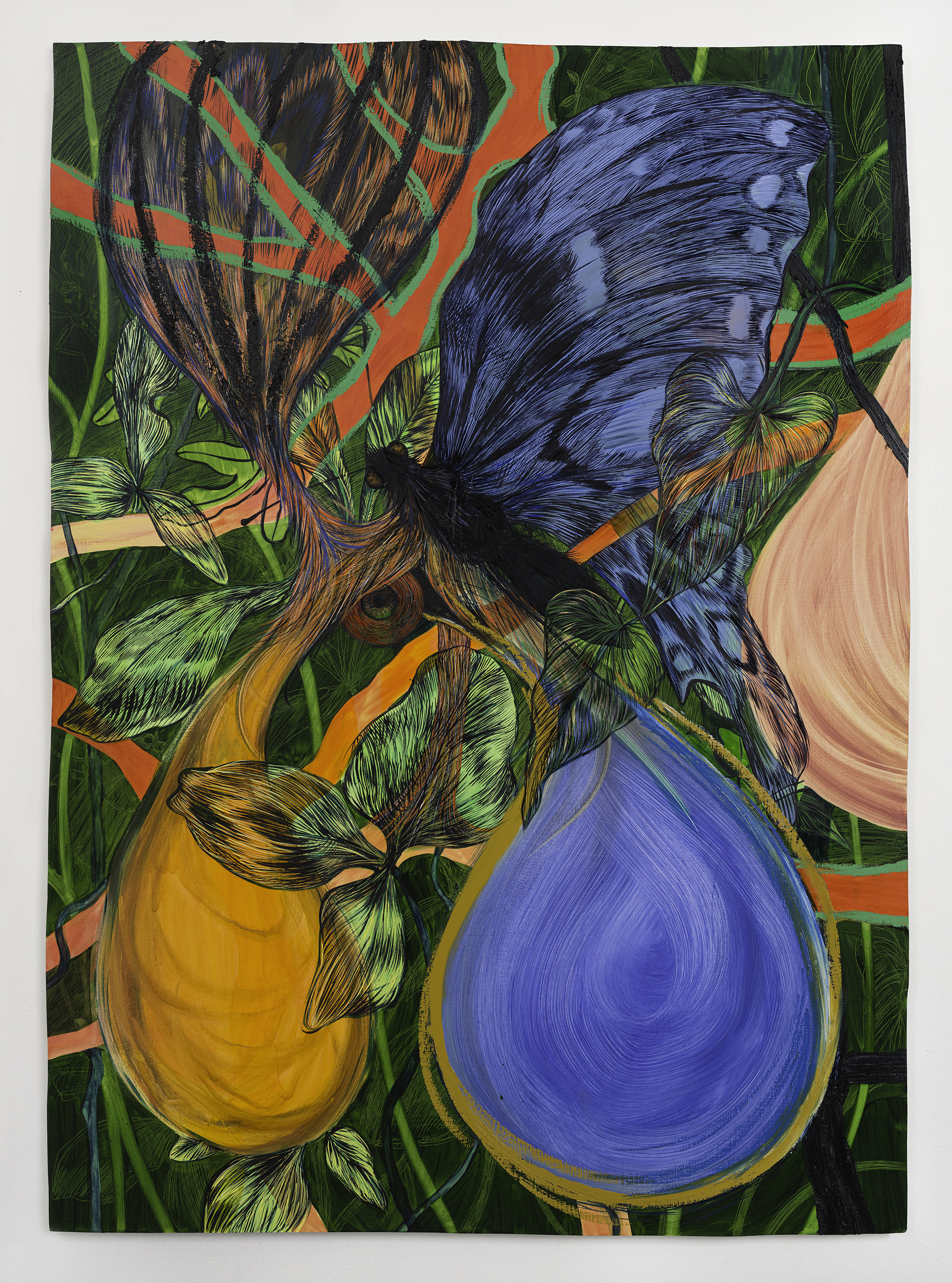
Morpho Blue, oil on panel, 32.25 x 45 in, 2023

The Gynandromorph, oil on panel, 46 x 59 in, 2023
detail:
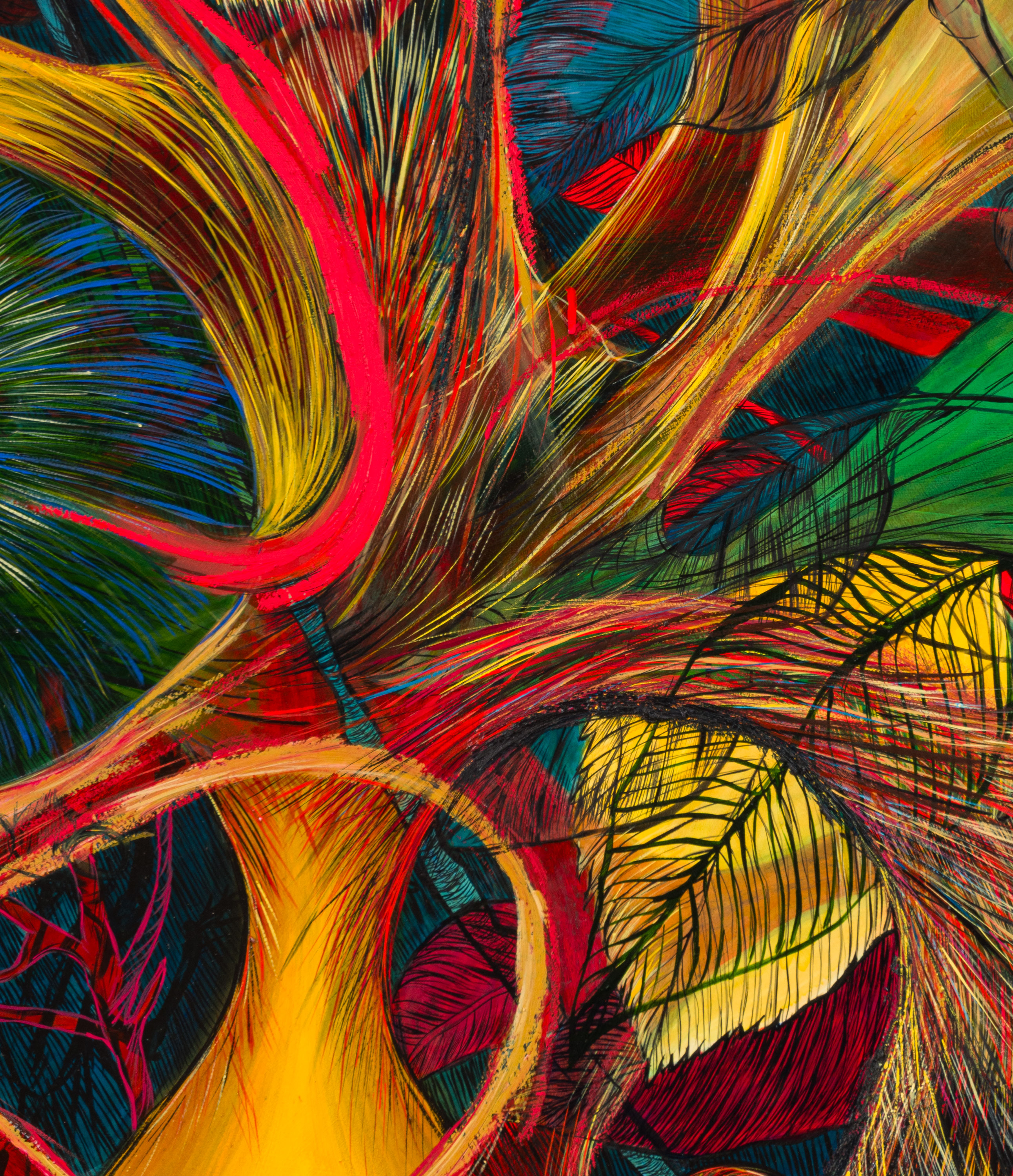
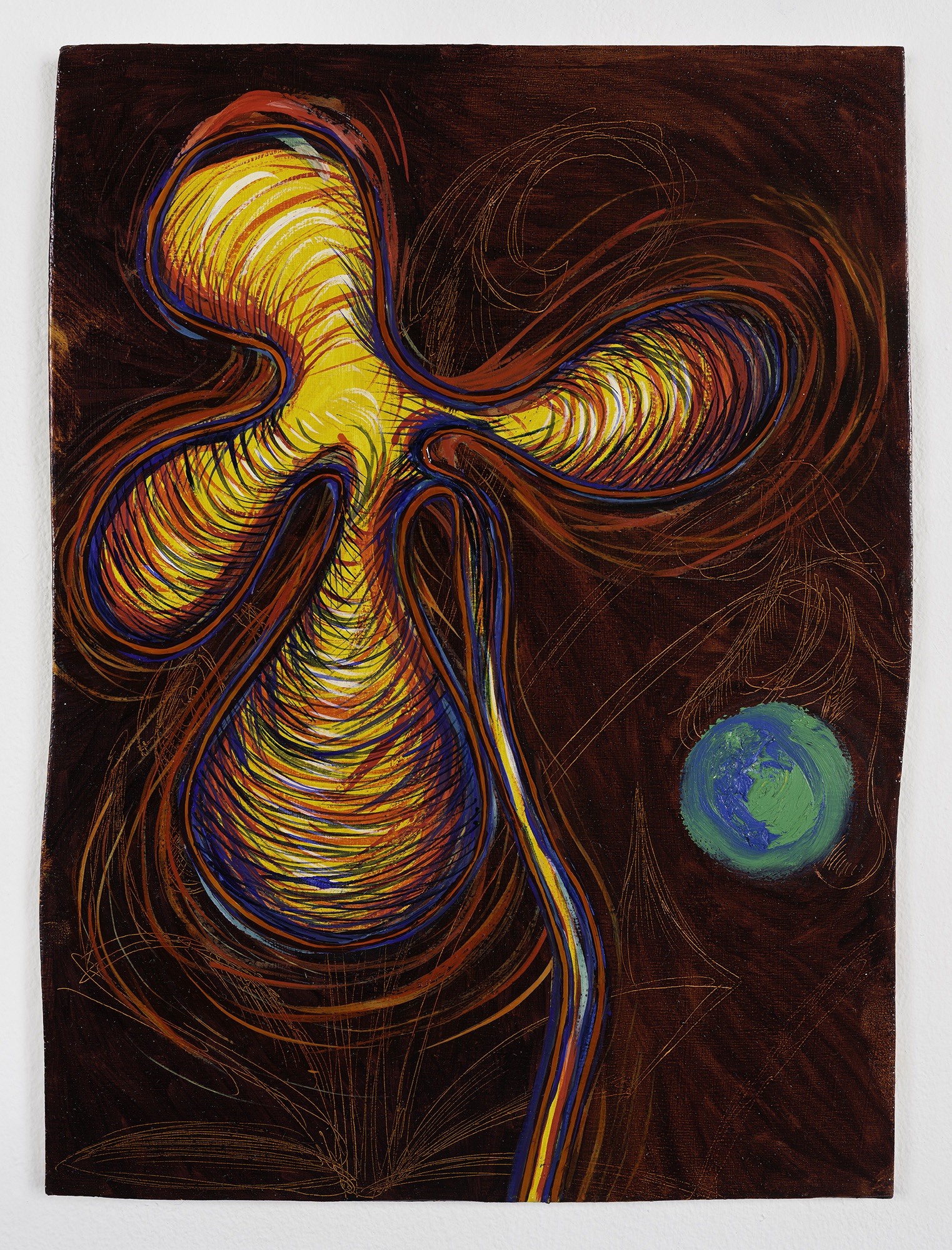
untitled, oil on panel, 8.5 x 12, 2023
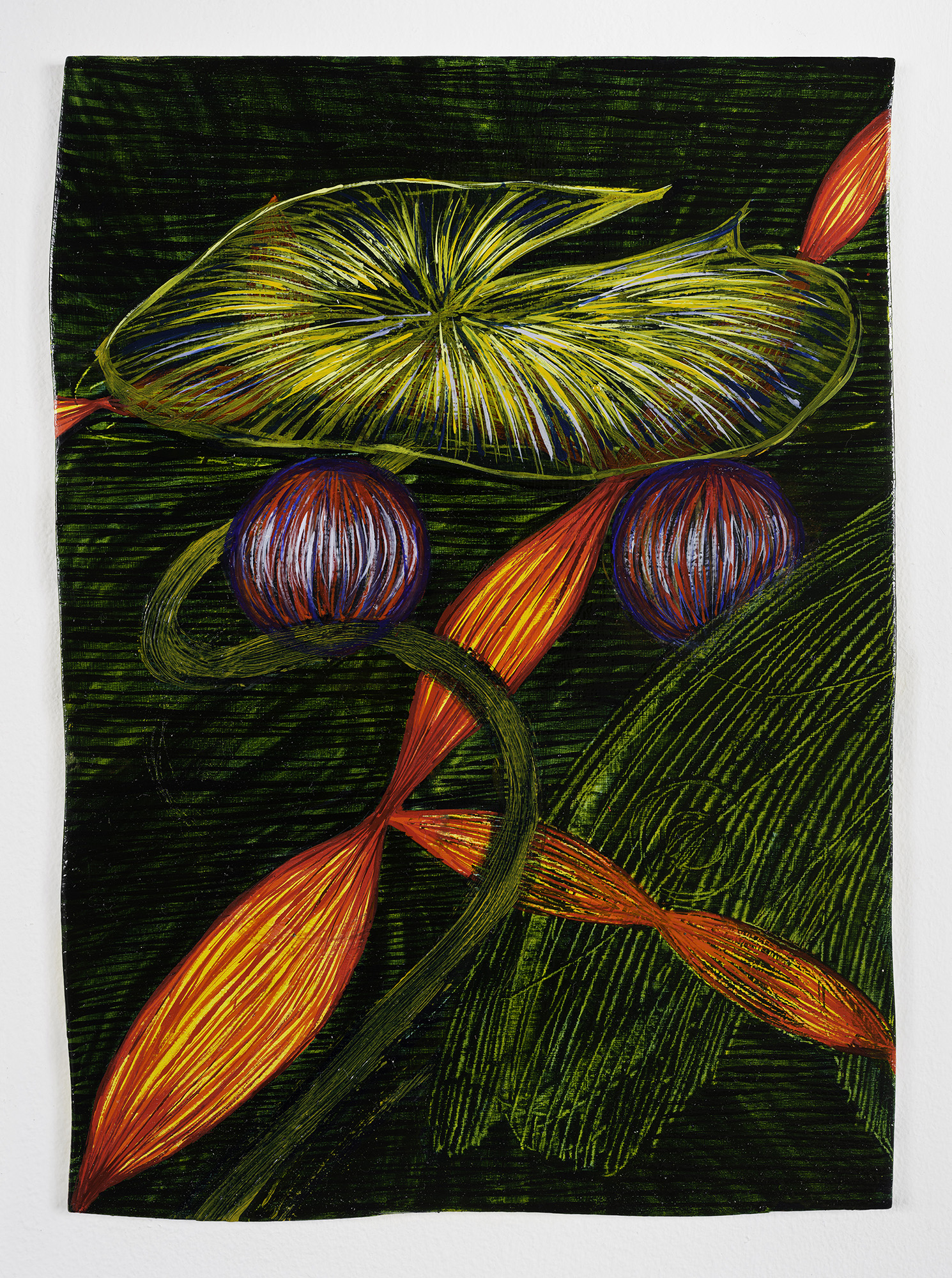
untitled, oil on panel, 8.5 x 12, 2023
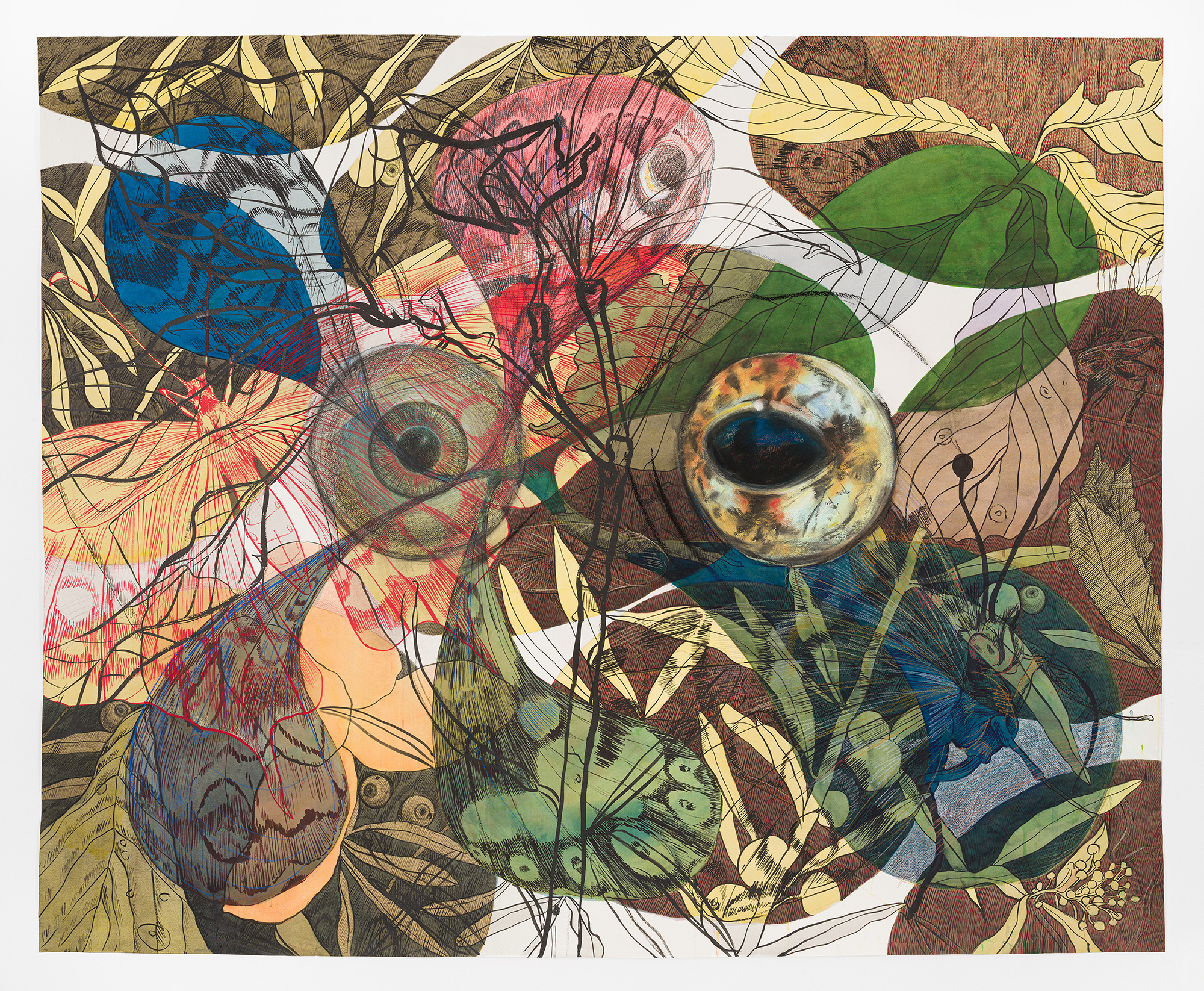
Humans Are Like Lichens, watercolour, ink, pencil crayon and pastel on paper, mounted on dibond, 53 x 65 in, 2022
Wil Aballe Art Projects,Vancouver
Jan 8 - Feb 19, 2022
Exhibition Essay by Lauren Lavery

In Swamp Sight, Davidson weaves a world of uncanny connections around the act of looking. Frog, moth, and human eyeballs all appear to regard the viewer and each other. Drawn partly from observation, these works depart from natural history illustration to swim towards a strange new form of camouflage. A question floats among the forms: who’s seeing who, and how?
Sarah Davidson (they/she, b. 1989, Ottawa) lives and works in Tkaronto/Toronto, Canada. They have exhibited their work at Feuilleton (Los Angeles), Cassandra Cassandra (Toronto), Erin Stump Projects (Toronto), Unit 17 (Vancouver), The Power Plant (Toronto), Little Sister (Toronto), Birch Contemporary (Toronto), The New Gallery (Calgary), and Audain Gallery (Vancouver), among others. They were a finalist in the 2018 RBC Canadian Painting Competition, and are the recipient of awards and residencies including the Canada Council for the Arts Research and Creation Grant (2021), The Banff Centre’s Late Winter BAiR (2020), and AiR Sandnes residency in Sandnes, Norway (2016). They hold a BFA from Emily Carr University of Art & Design (2015) and an MFA from the University of Guelph (2019).
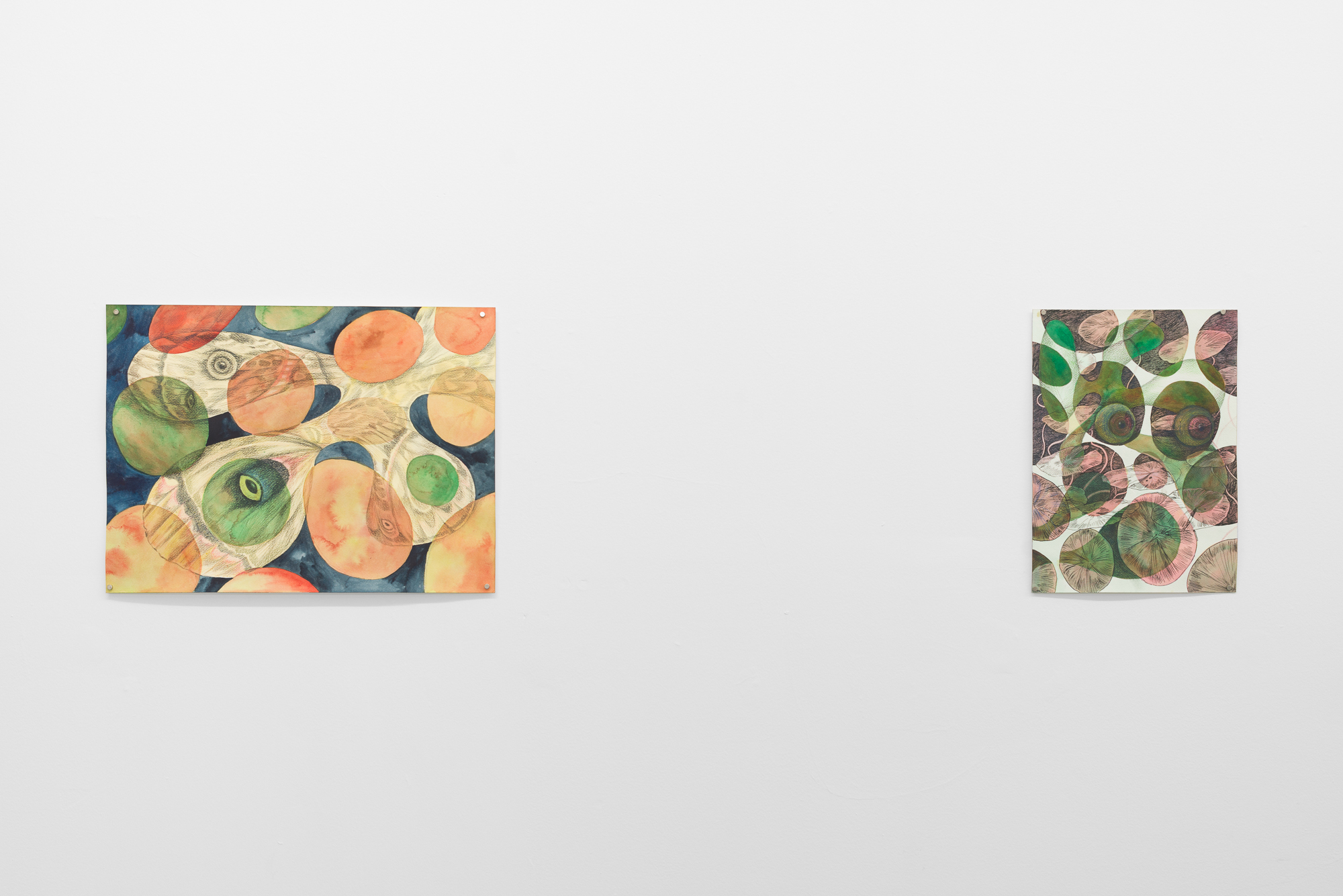
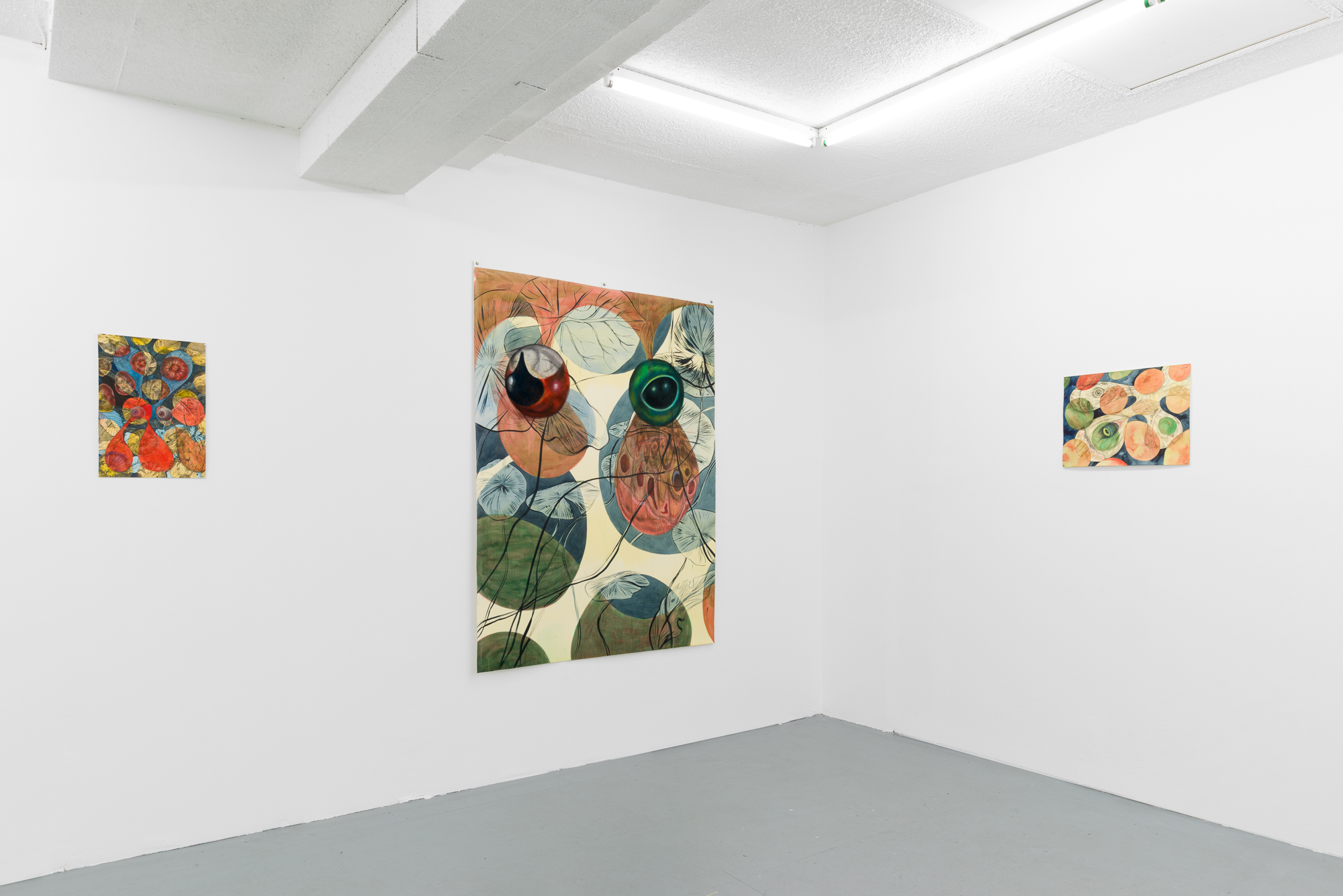
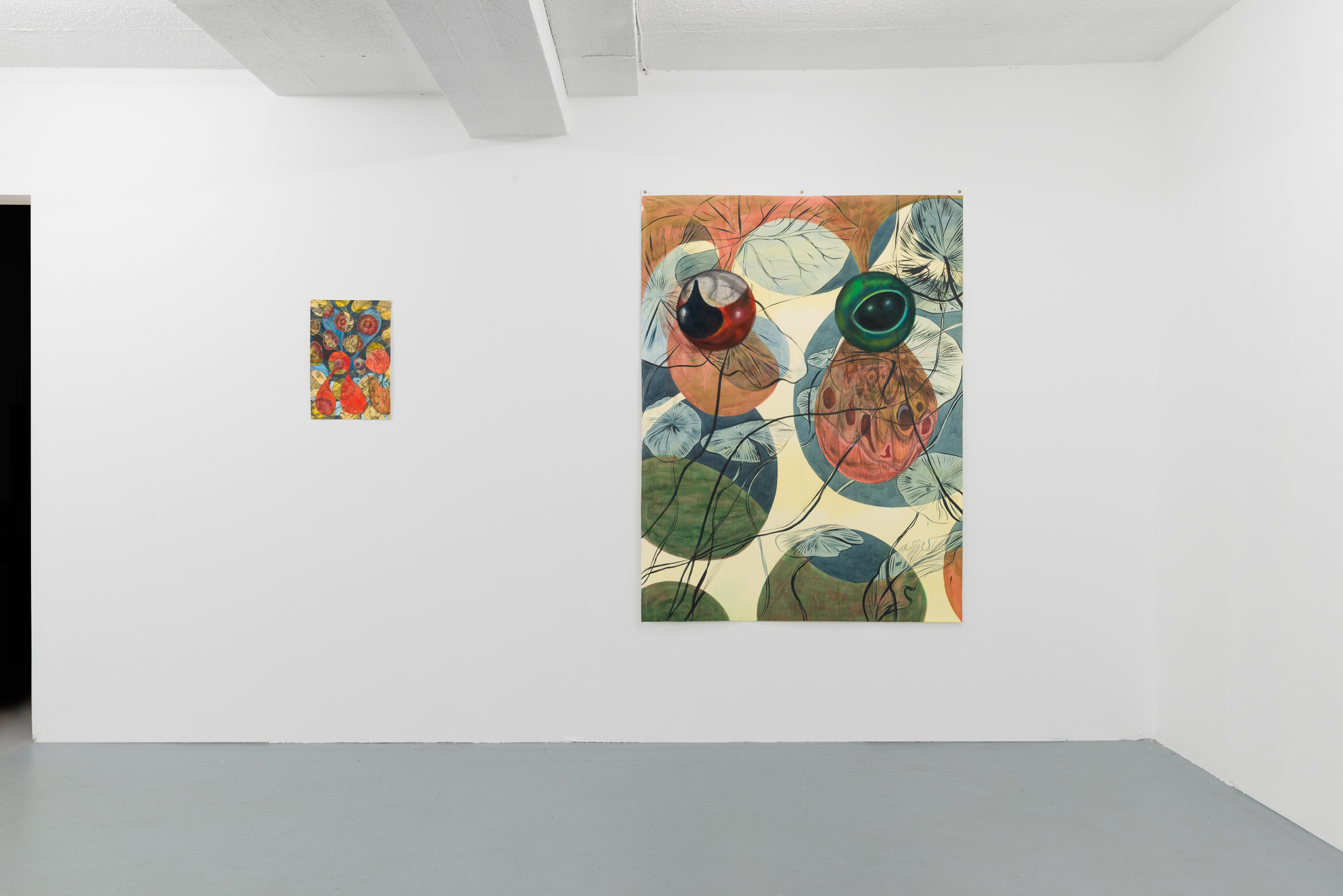
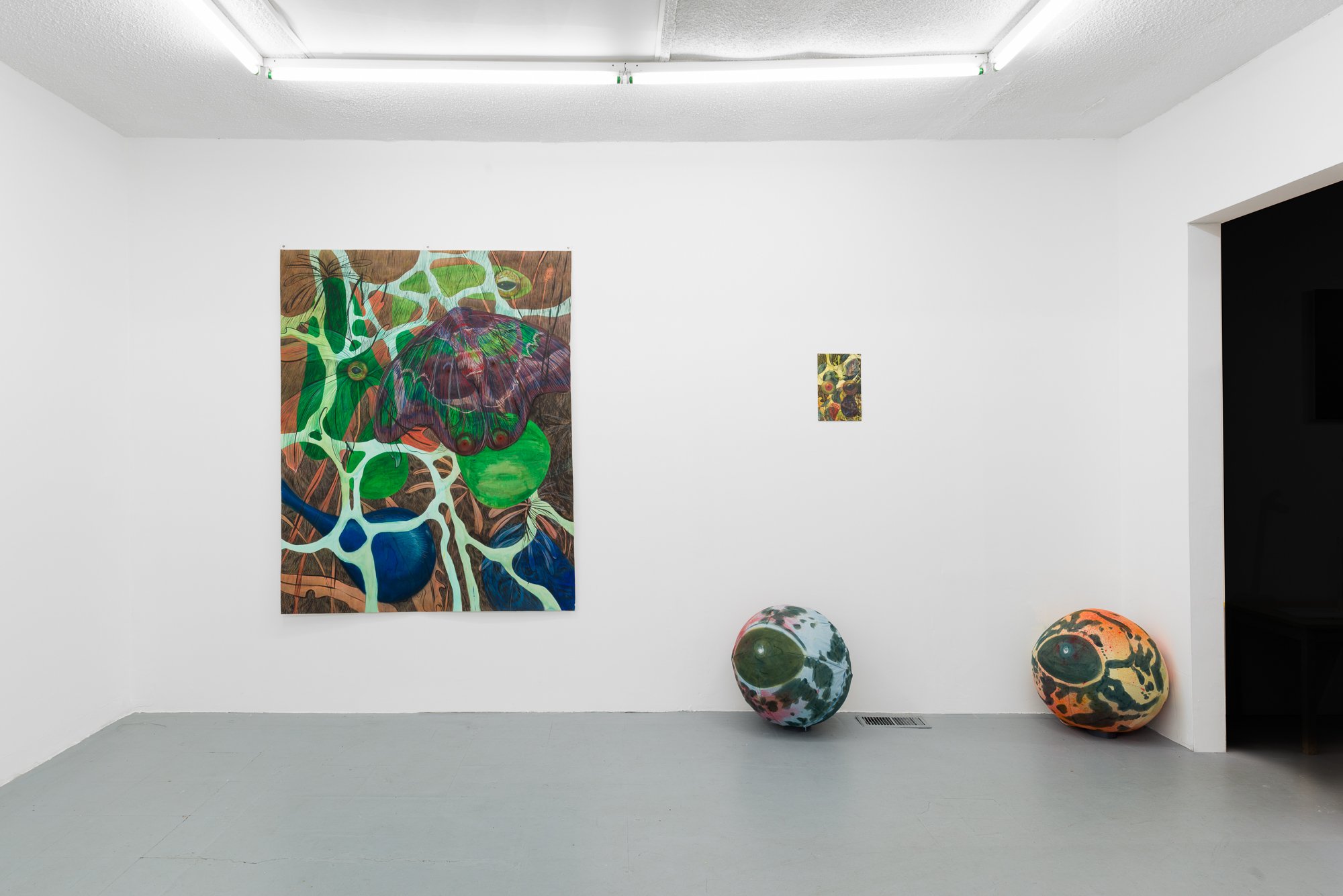
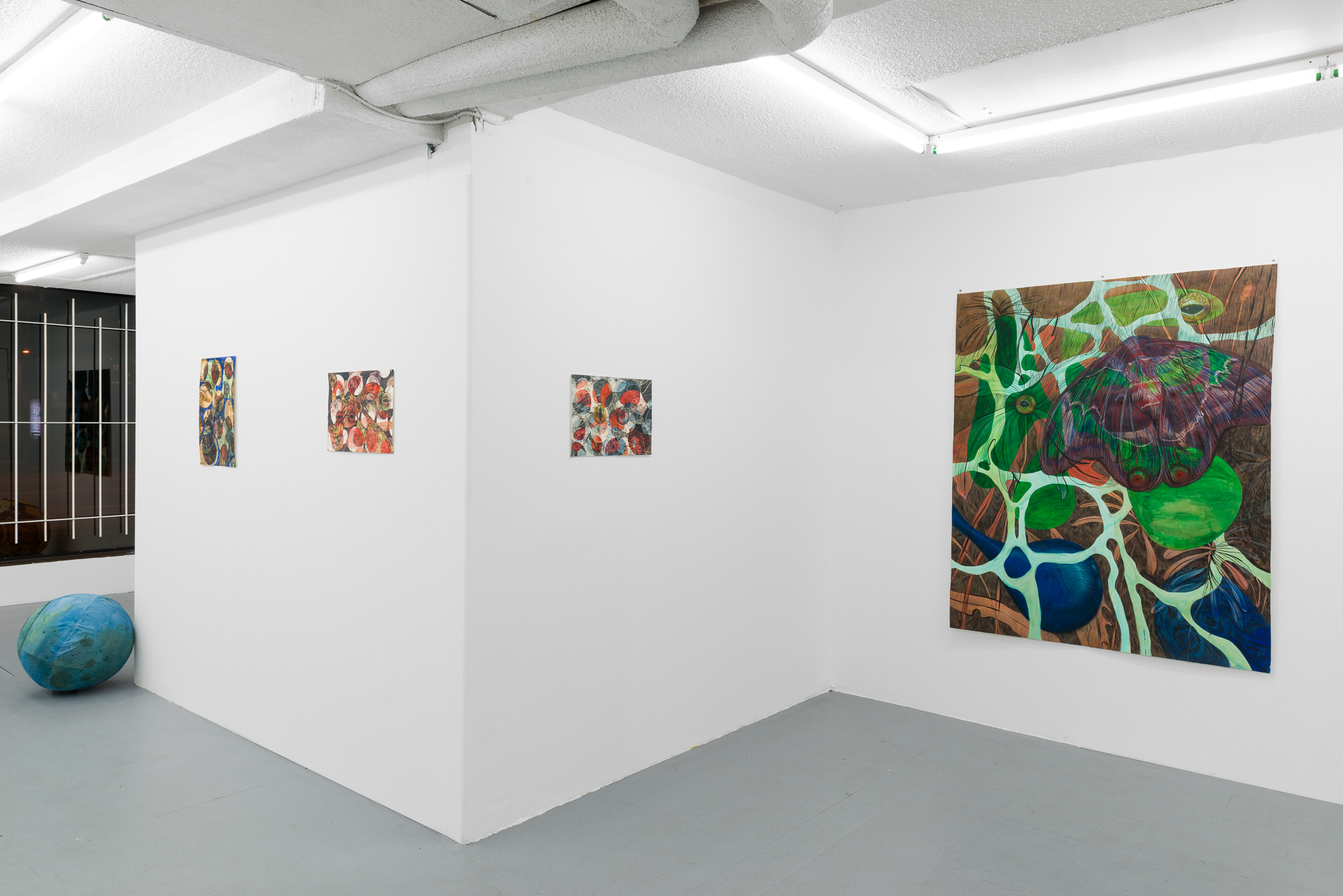
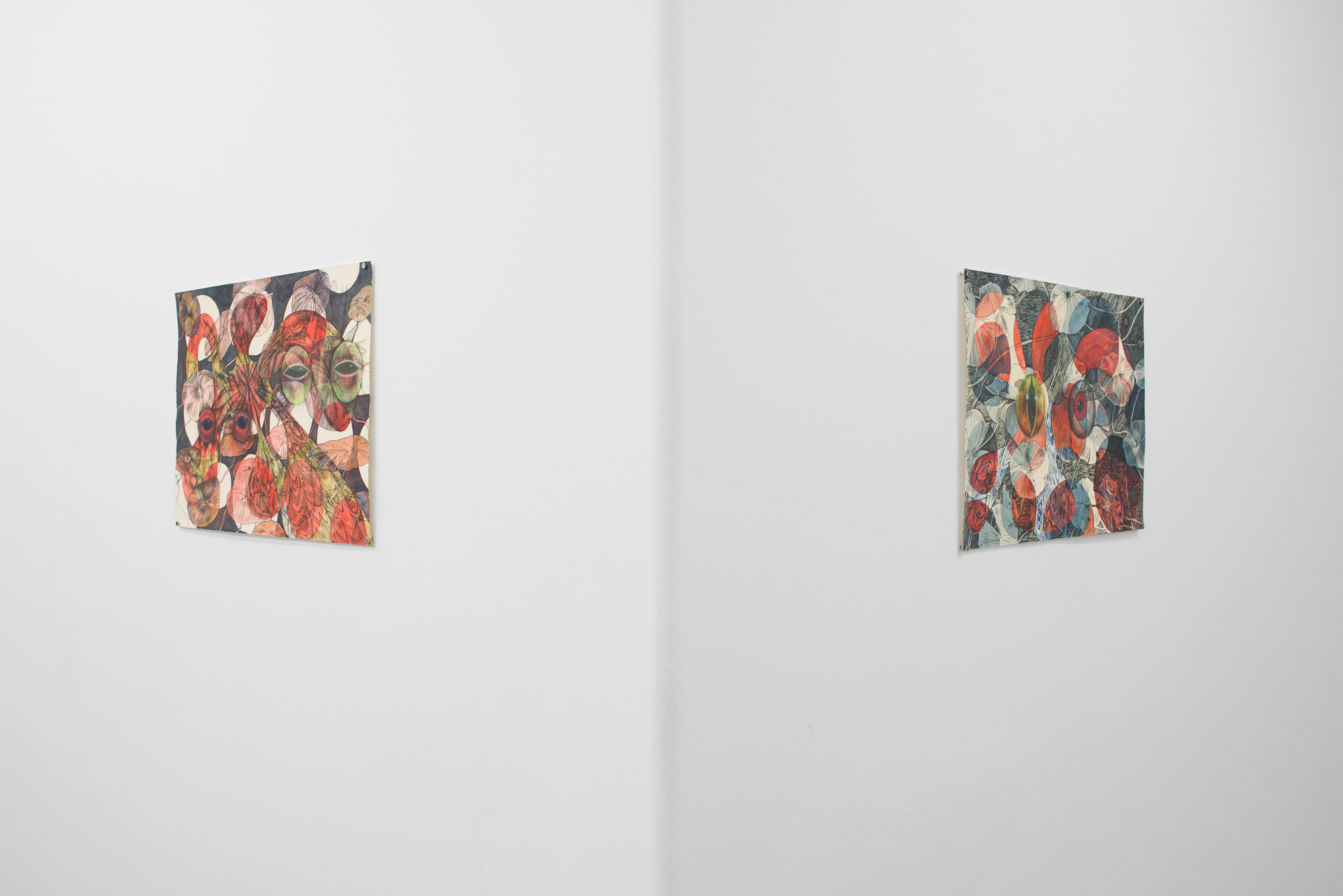
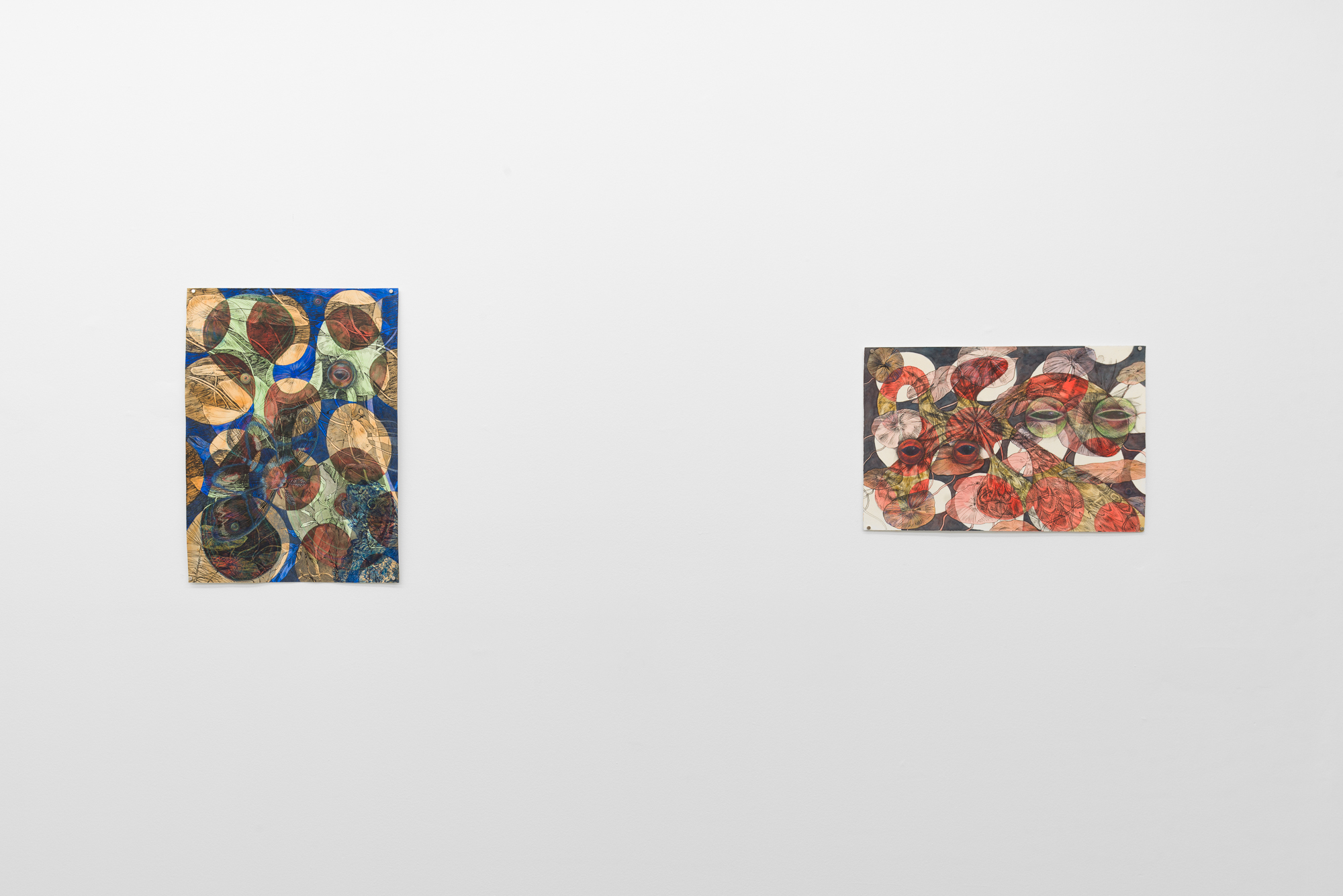
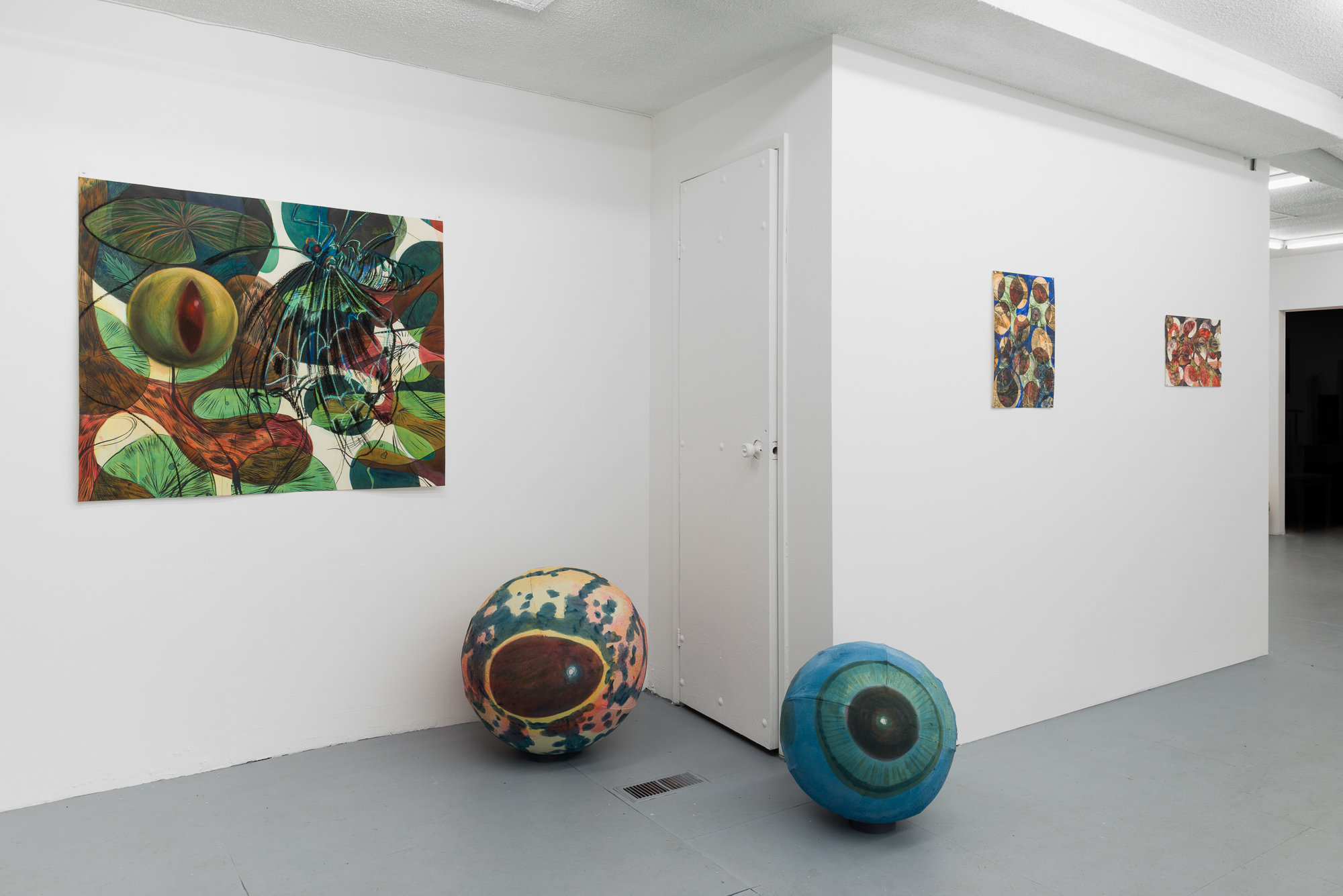
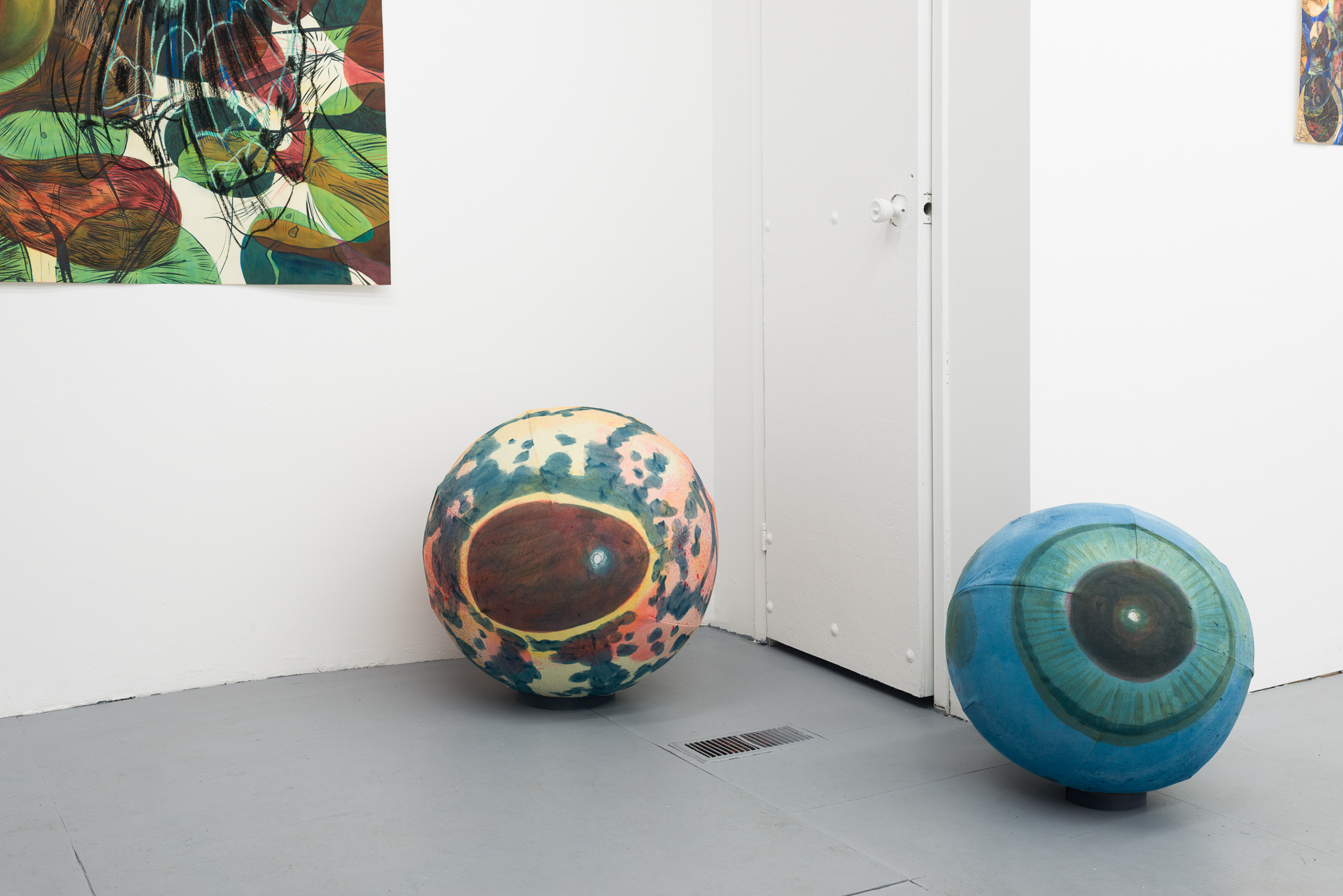
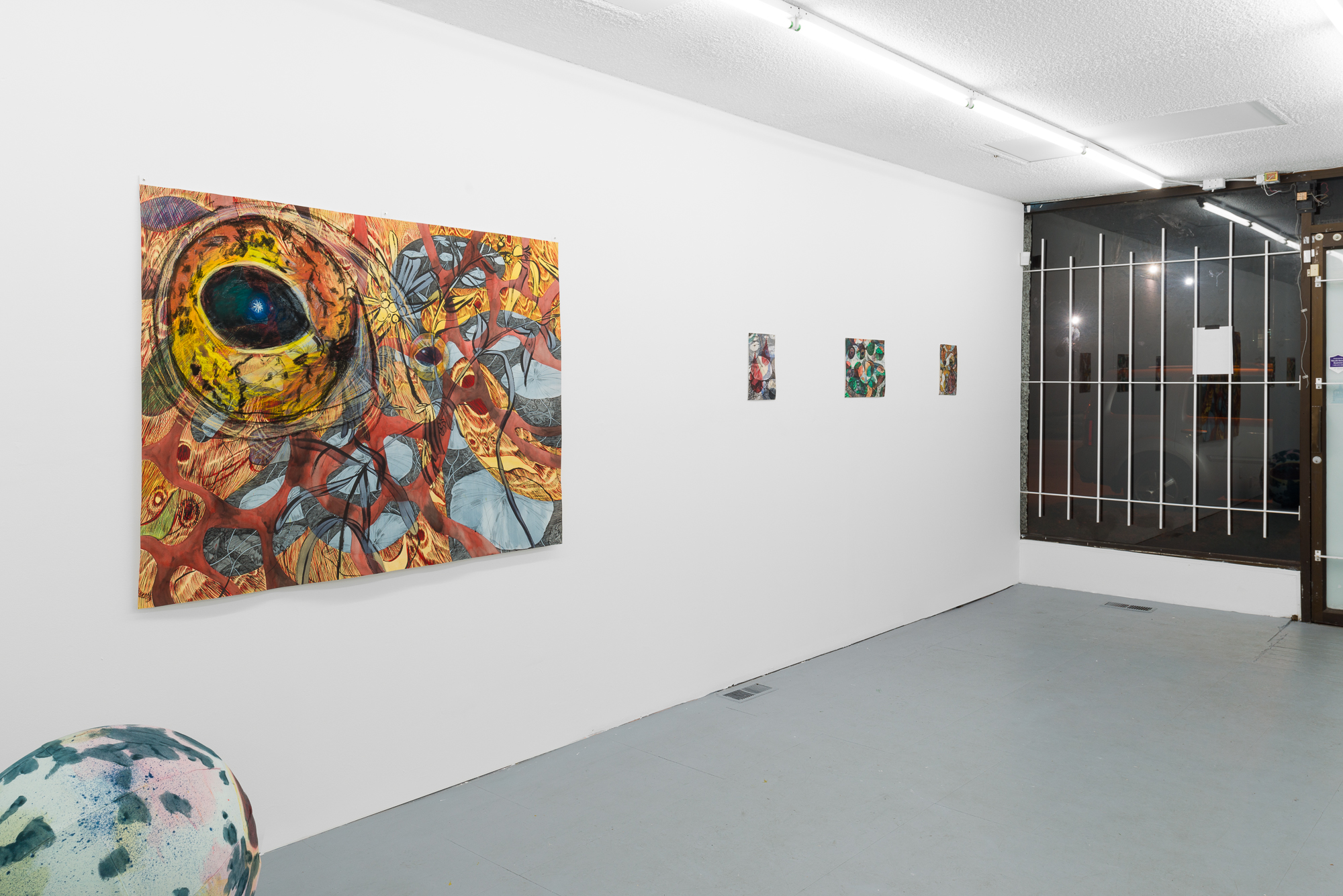
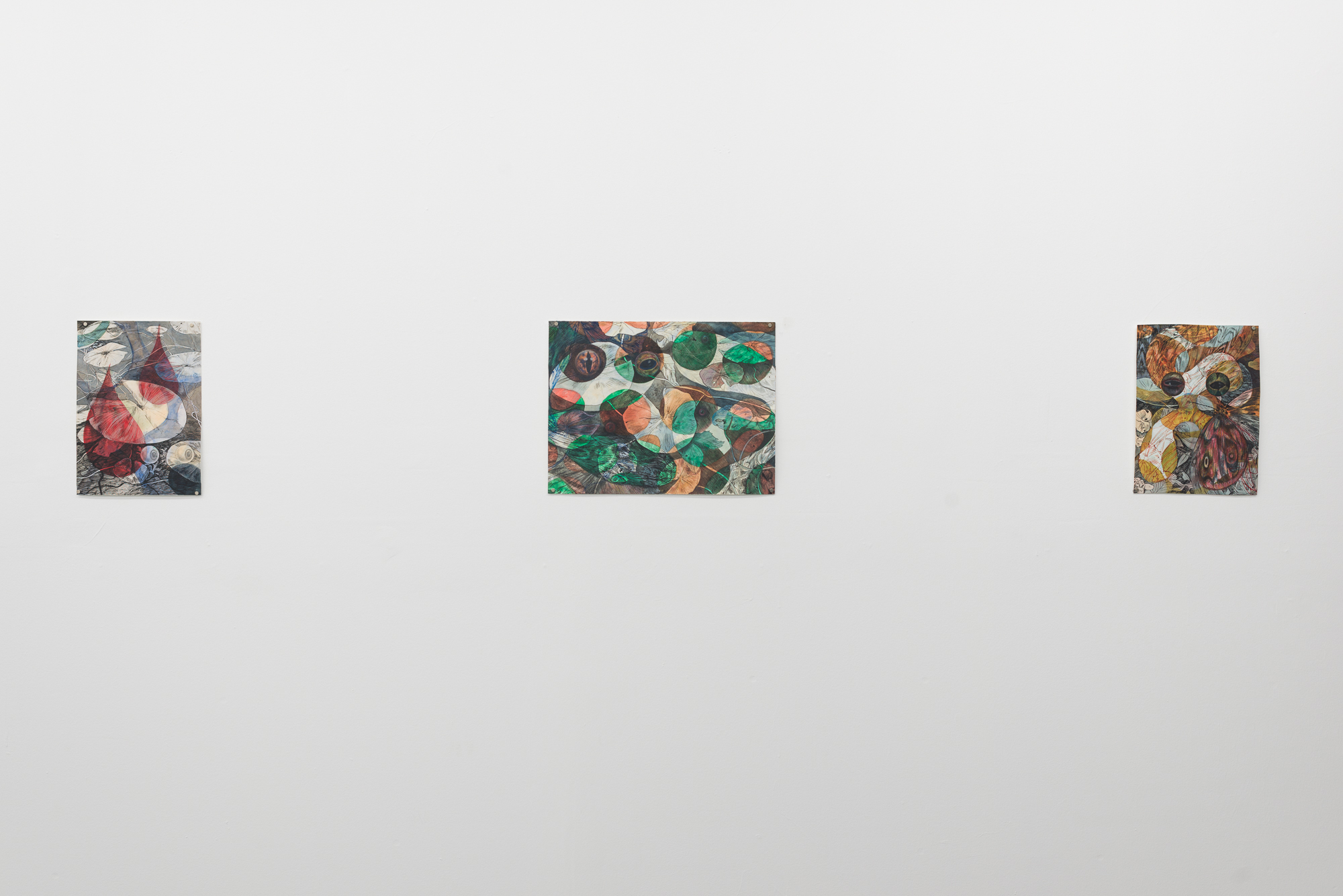
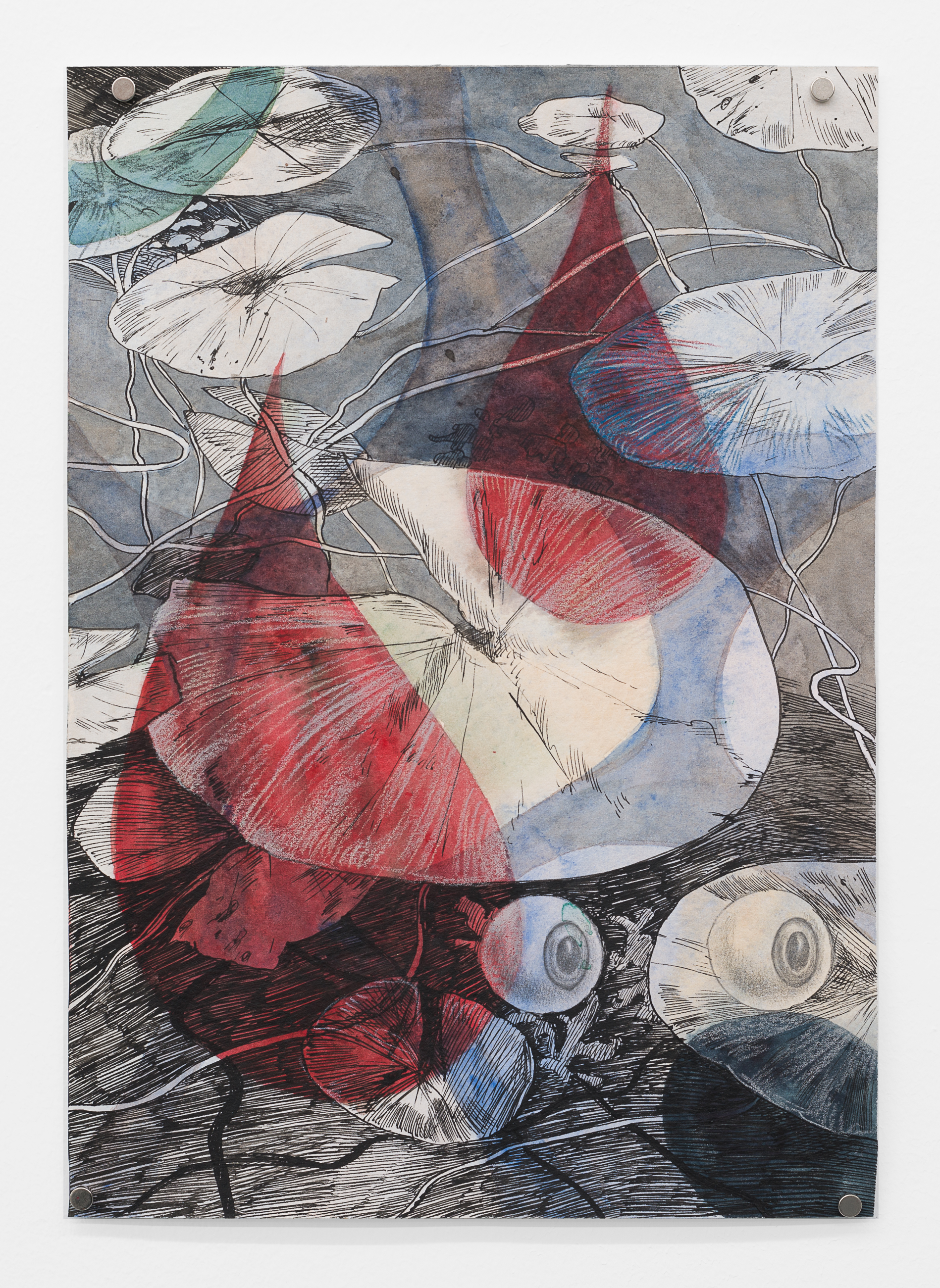
Boundary Waters, watercolour, ink, graphite and pencil crayon on paper, 8.75 x 12 in, 2020
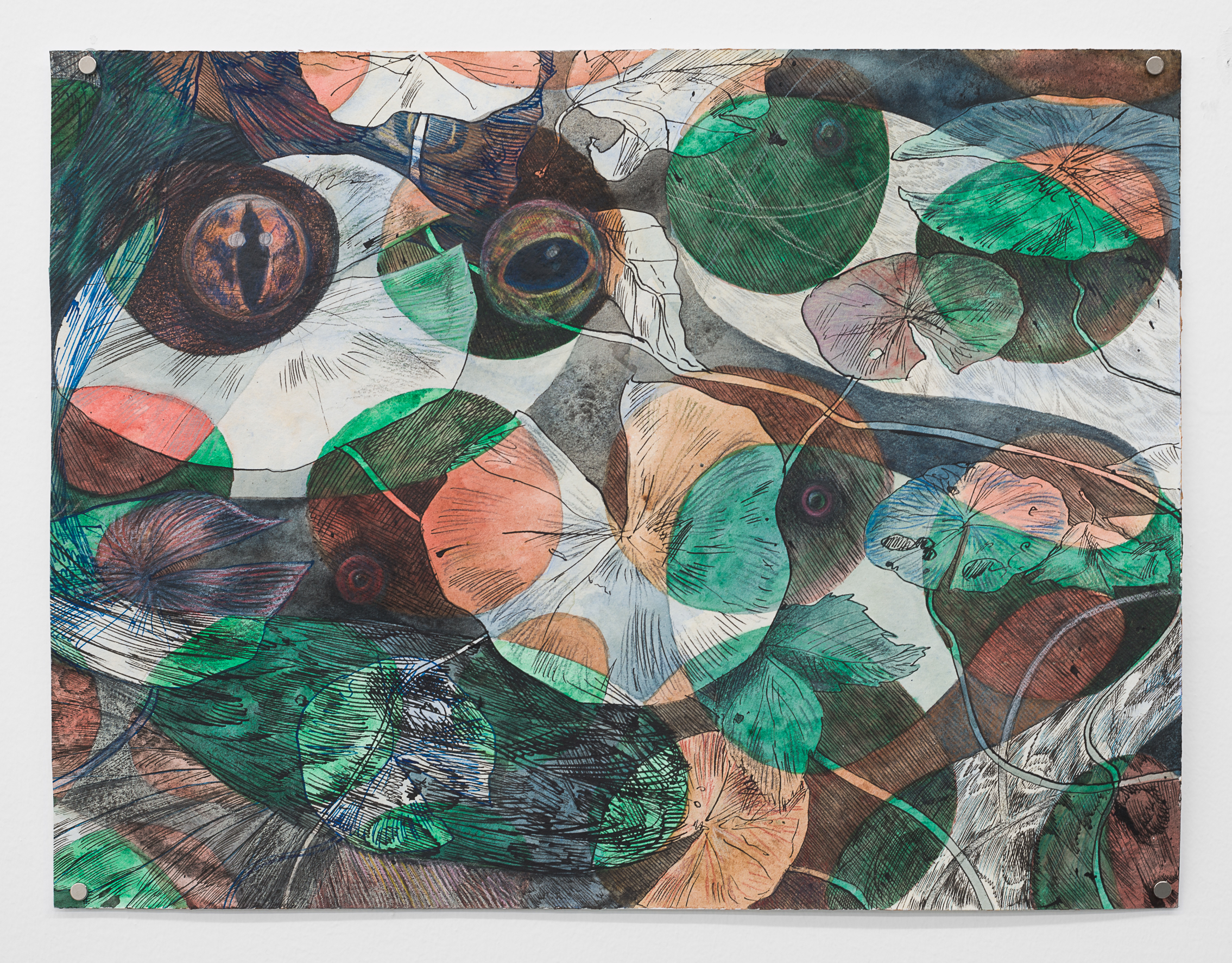
Thaw, watercolour, ink and pencil crayon on paper, 15.75 x 12 in, 2021
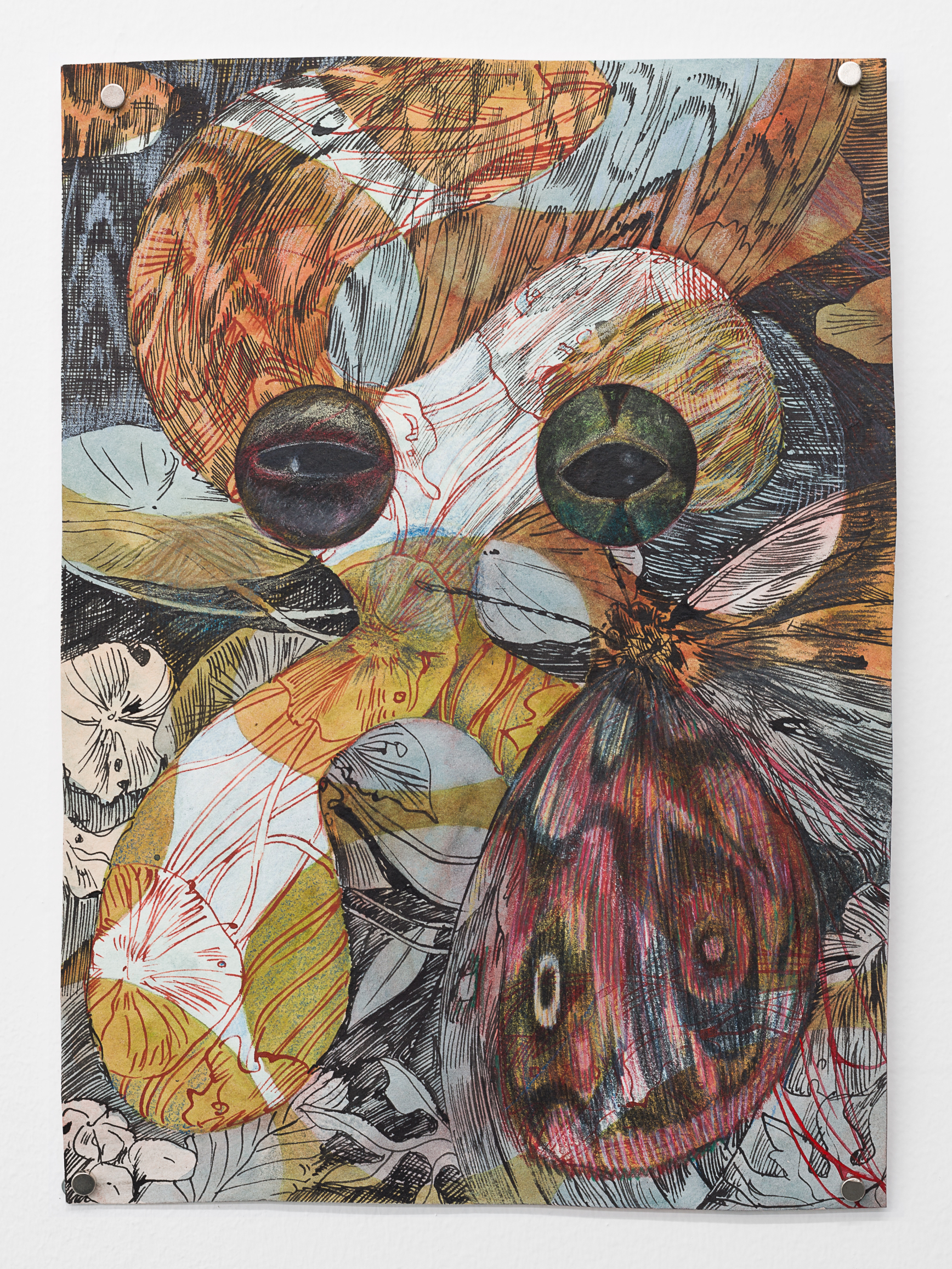
Wave, watercolour, ink, and pencil crayon on paper, 8.5 x 11.75 in, 2020
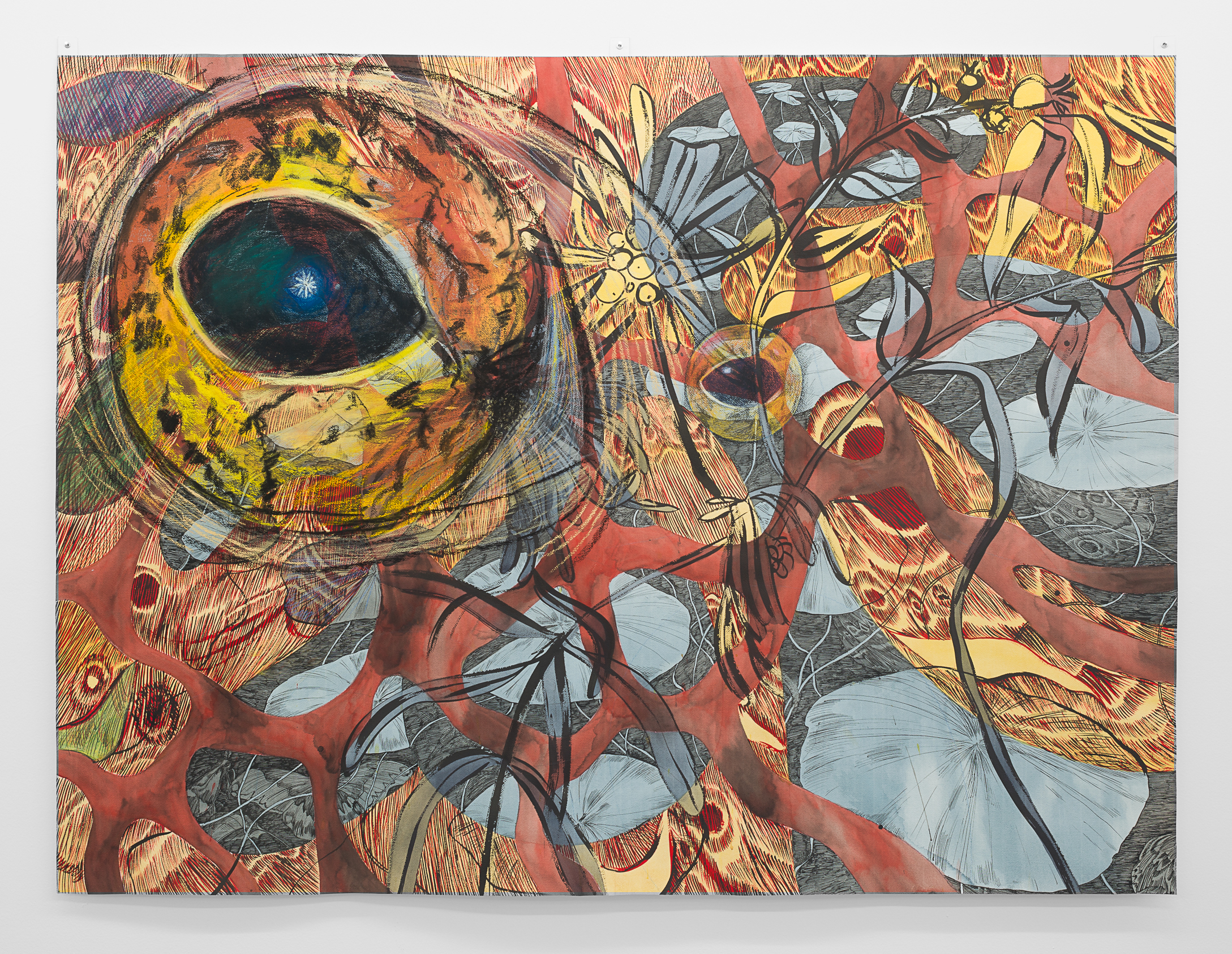 Amphibian Feeling, watercolour, ink, pencil crayon and pastel on paper, 43.5 x 58.5 in, 2021
Amphibian Feeling, watercolour, ink, pencil crayon and pastel on paper, 43.5 x 58.5 in, 2021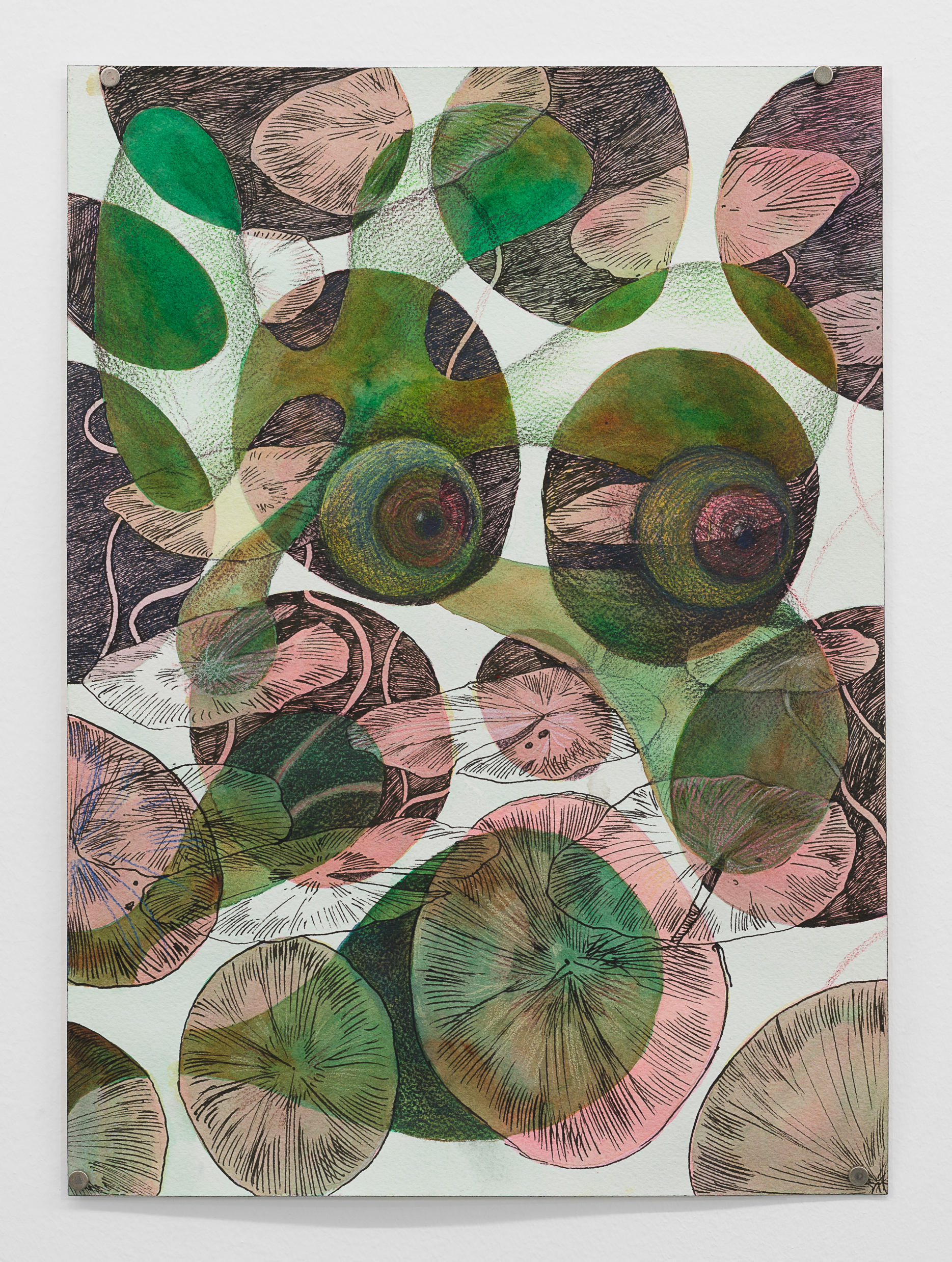
Look Left, watercolour, ink, and pencil crayon on paper, 10 x 14 in, 2021
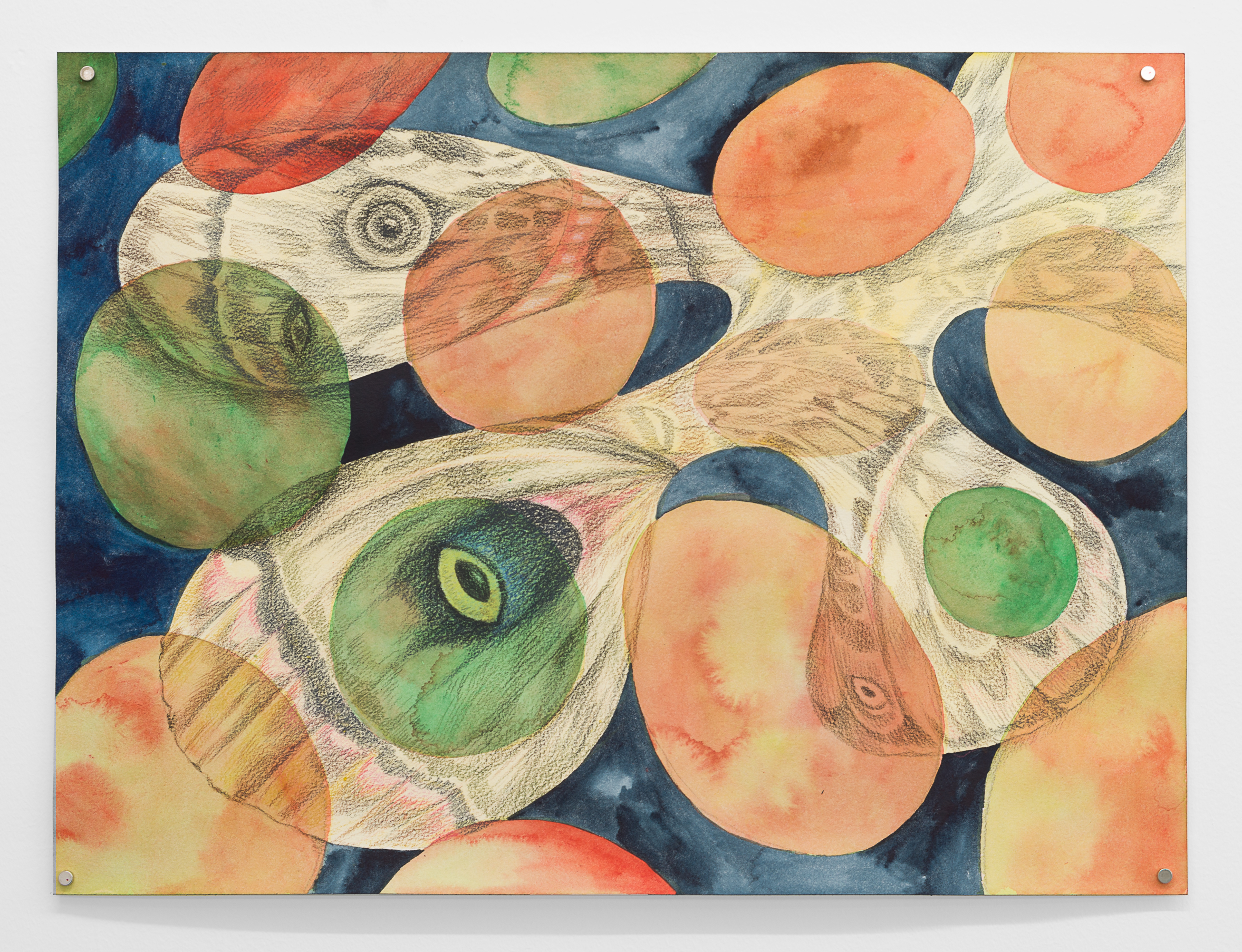
Blob Bulb, watercolour and pencil crayon on paper, 14 x 19 in, 2021
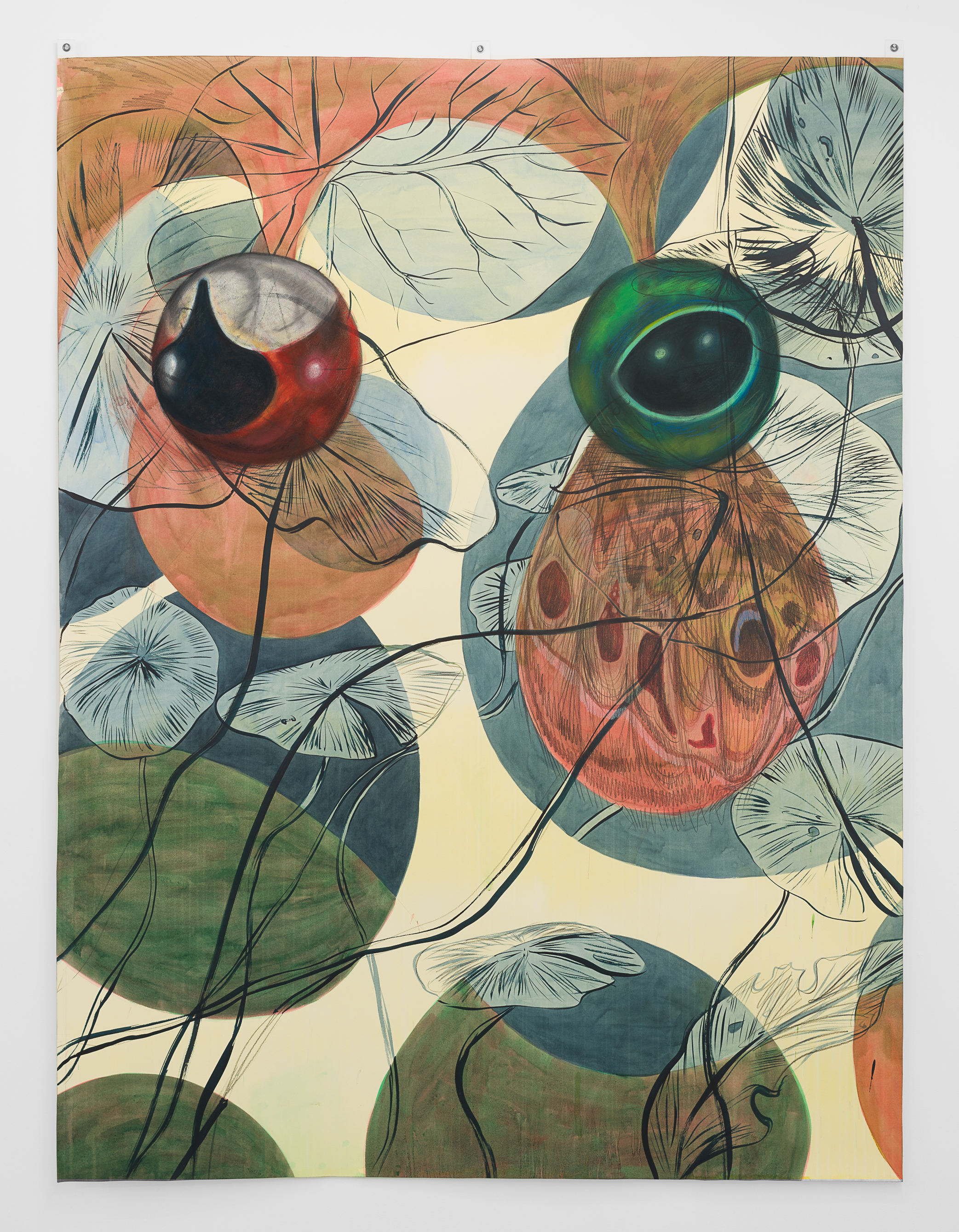
The Organism and its Surroundings, watercolour, ink, pencil crayon and pastel on pape, 63.5 x 47 in, 2021
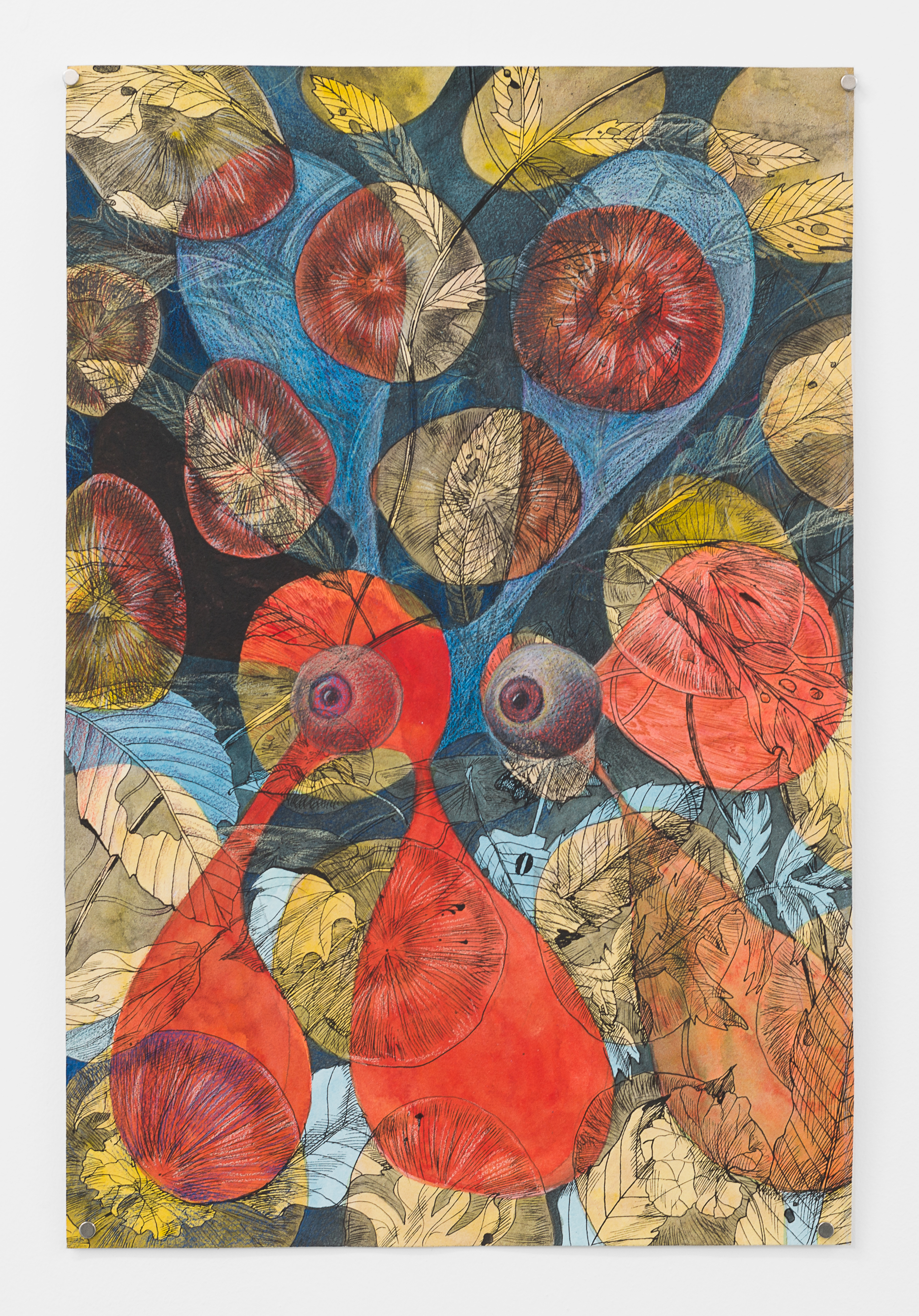
Fell, watercolour, ink, and pencil crayon on paper, 11.75 x 17.5 in, 2021
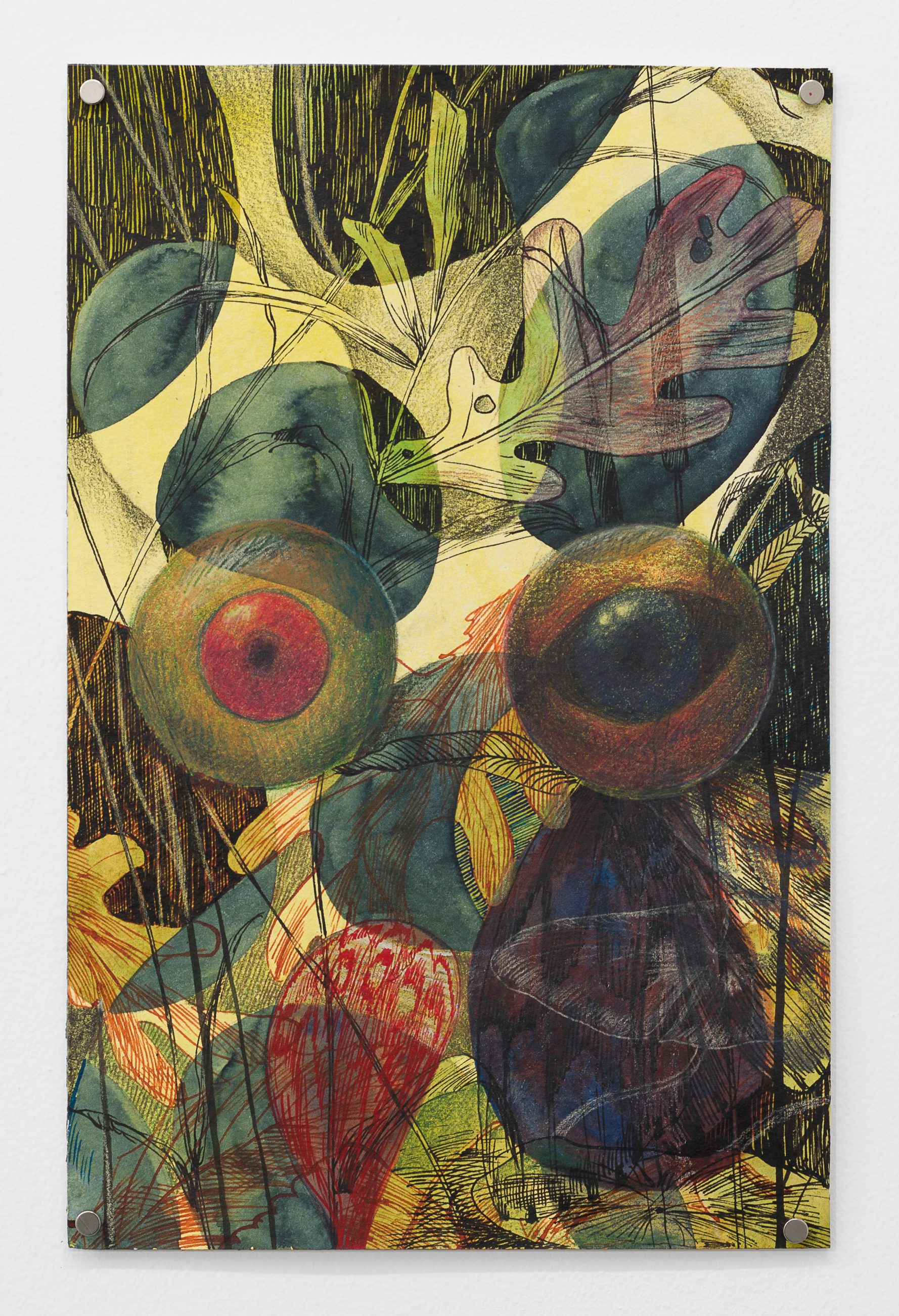
Leaf Tender, watercolour, ink, and pencil crayon on paper, 7.5 x 11.5 in, 2021
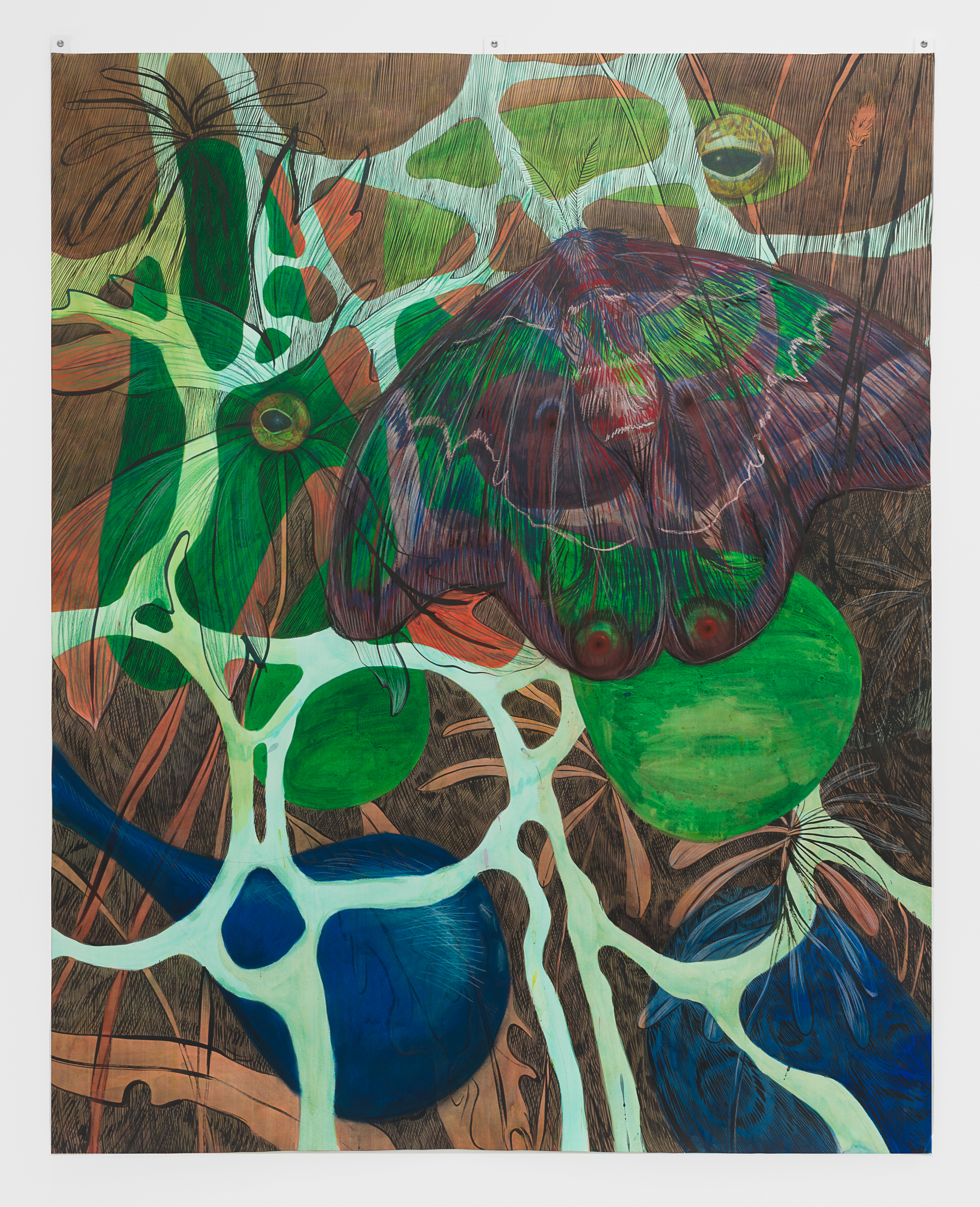
Blue Drop, watercolour, ink, pencil crayon and pastel on paper, 63 x 50 in, 2021
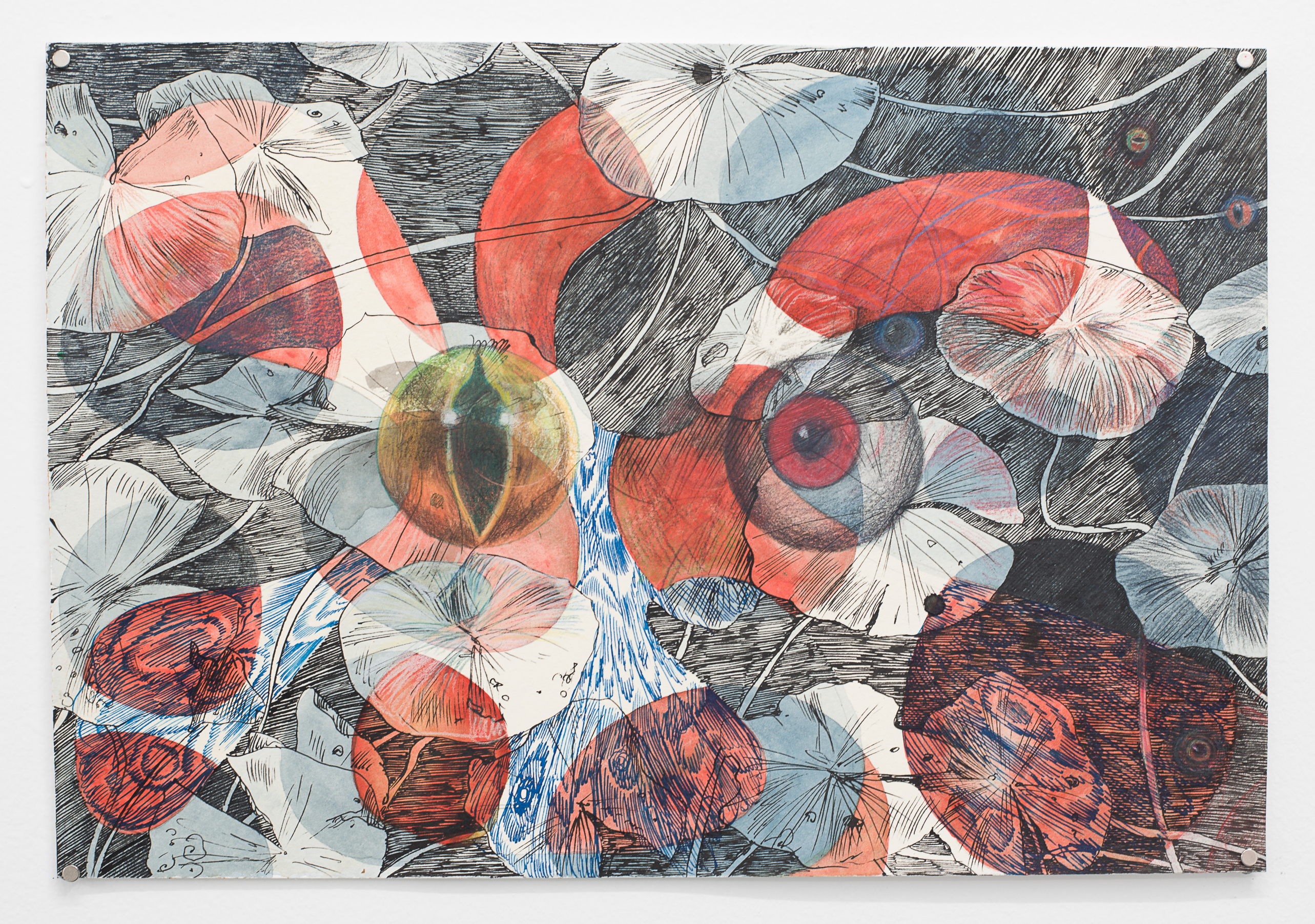 Dizziness, watercolour, ink, and pencil crayon on paper, 17.5 x 12 in, 2021
Dizziness, watercolour, ink, and pencil crayon on paper, 17.5 x 12 in, 2021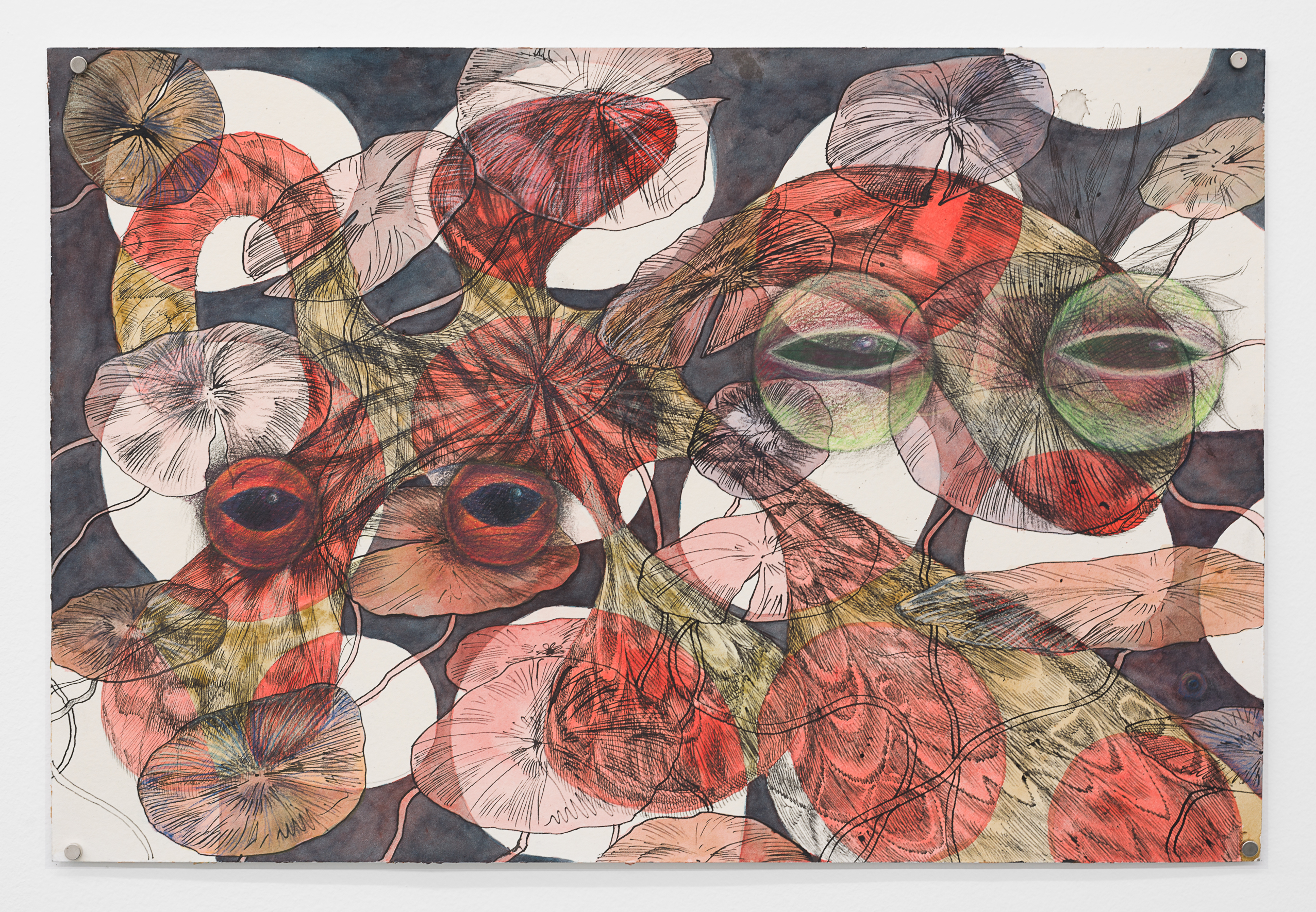 Burn, watercolour, ink, and pencil crayon on paper, 18 x 12 in, 2021
Burn, watercolour, ink, and pencil crayon on paper, 18 x 12 in, 2021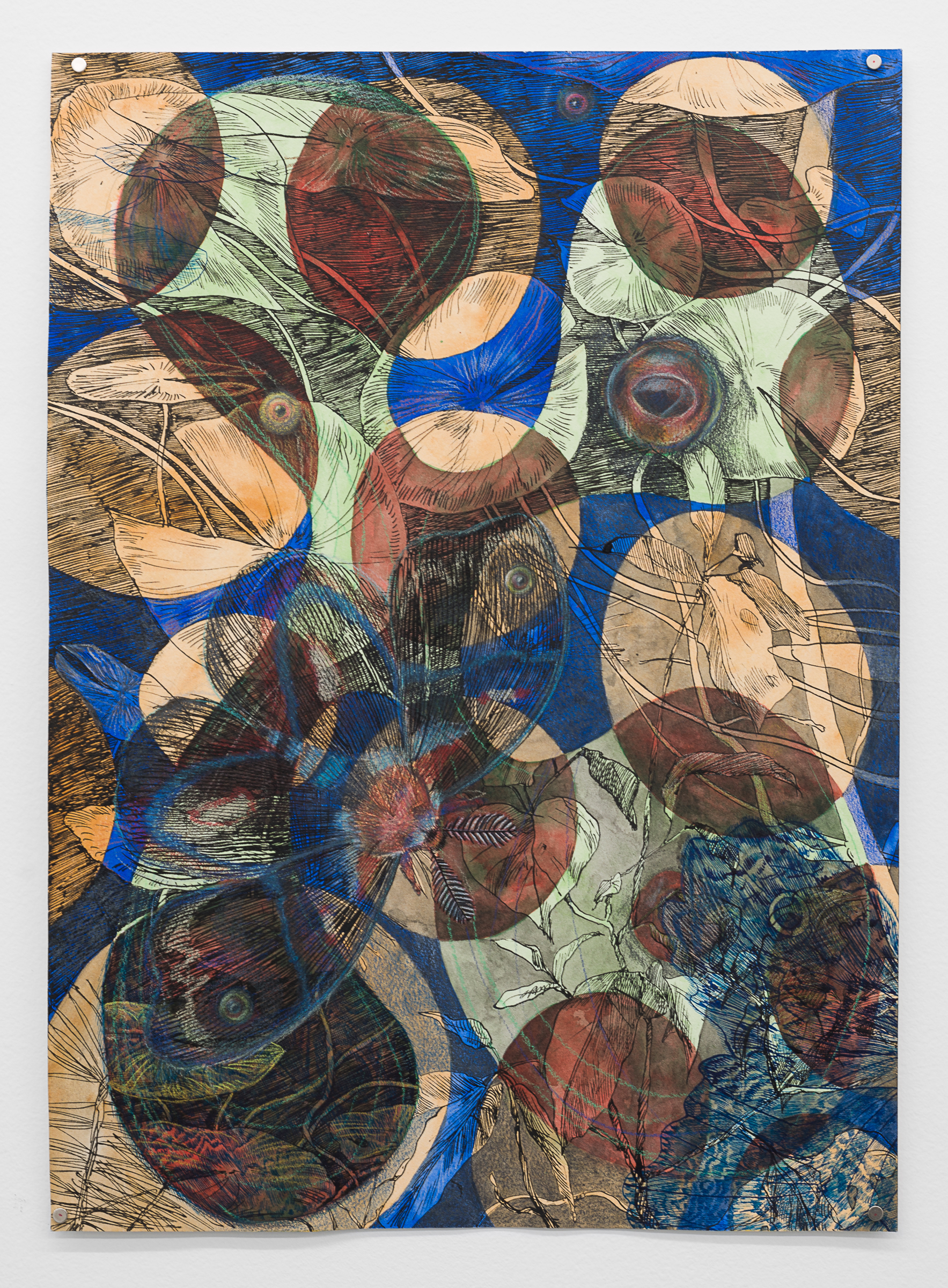
Saccade, watercolour, ink, and pencil crayon on paper, 14 x 19.5 in, 2020

Mothweb, watercolour, ink, pencil crayon and pastel on paper, 37.5 x 42.5 in, 2021
With the support of:

Feuilleton, Los Angeles
Feb 1 - 27, 2021
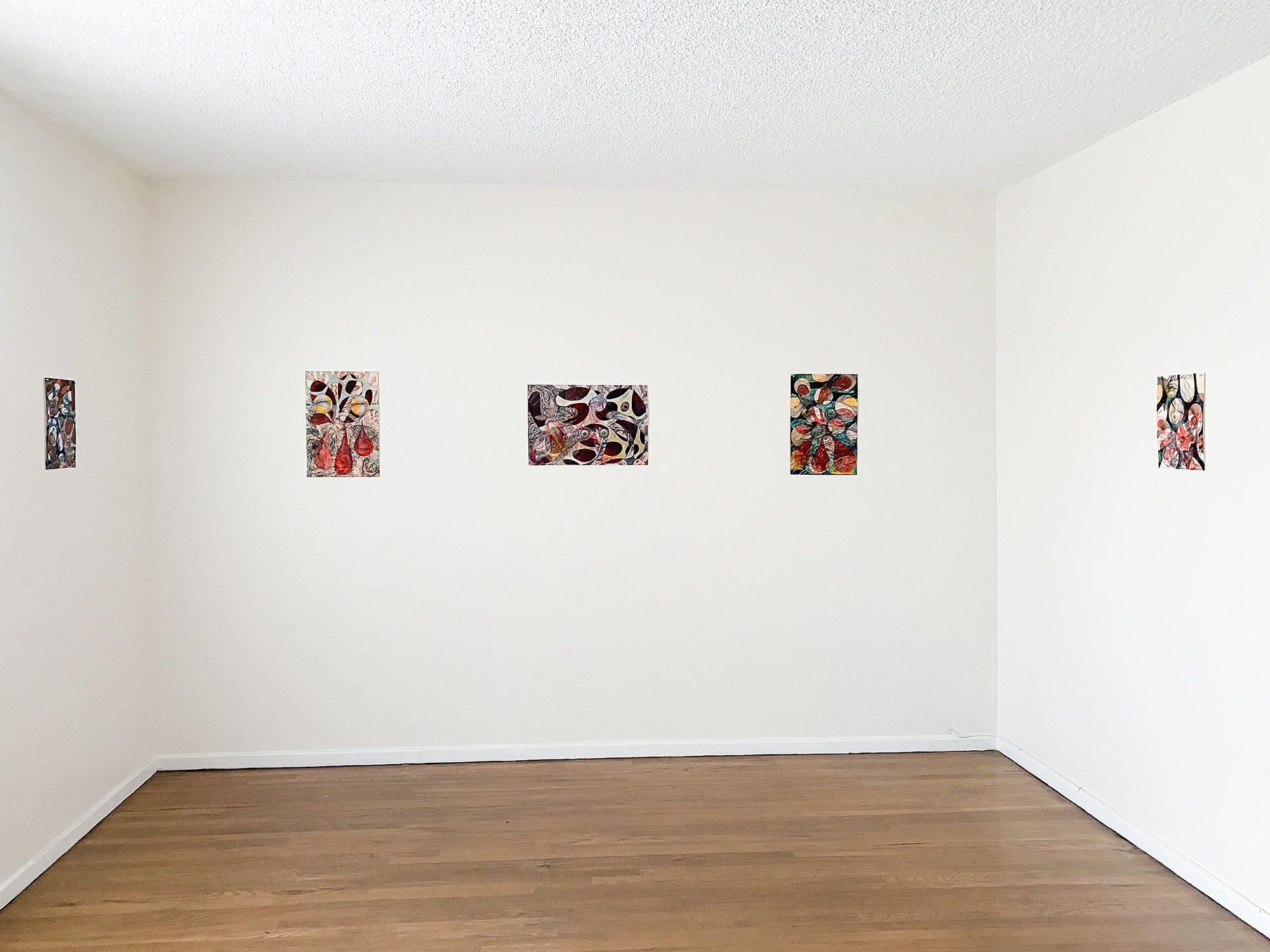
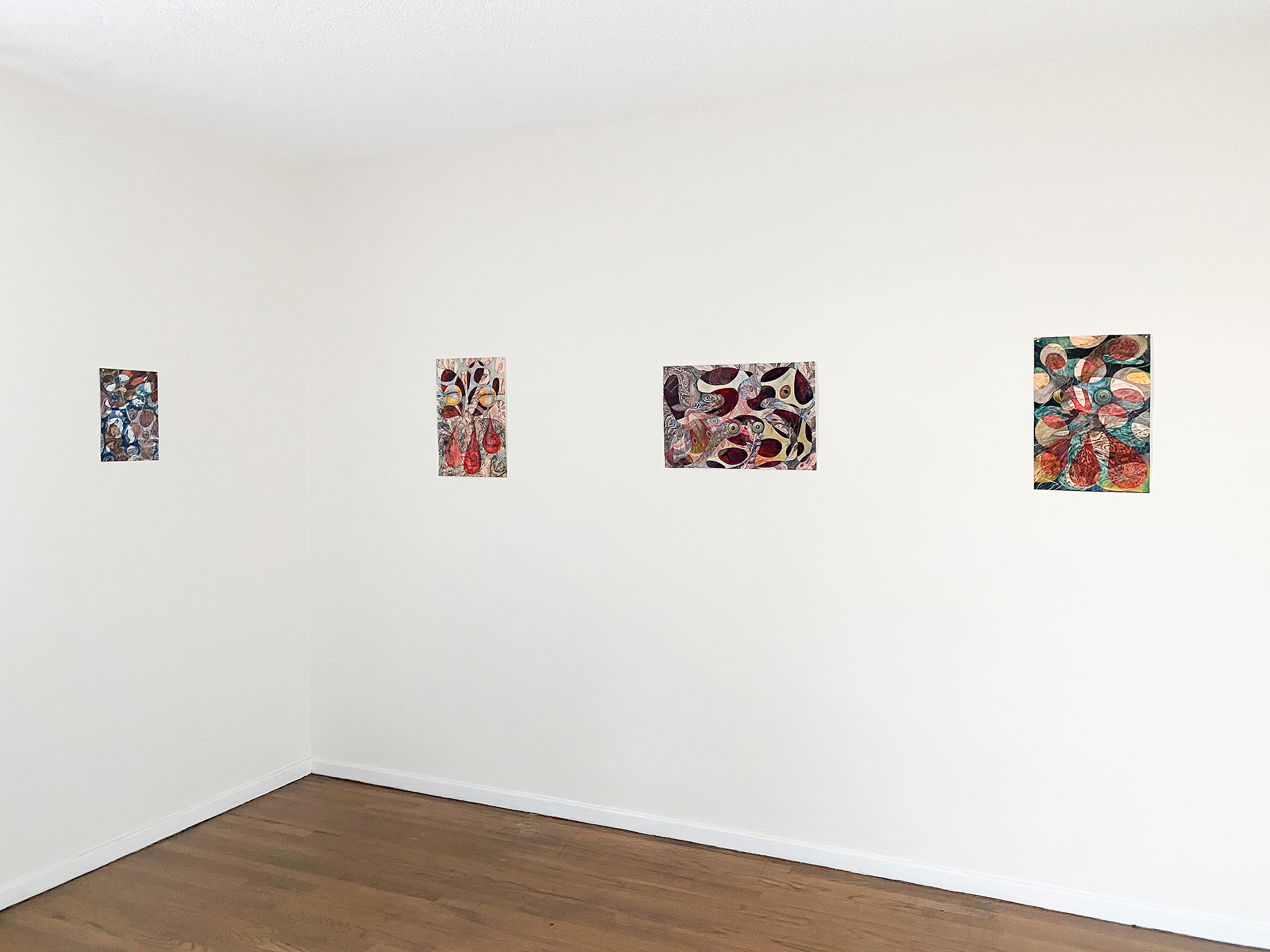

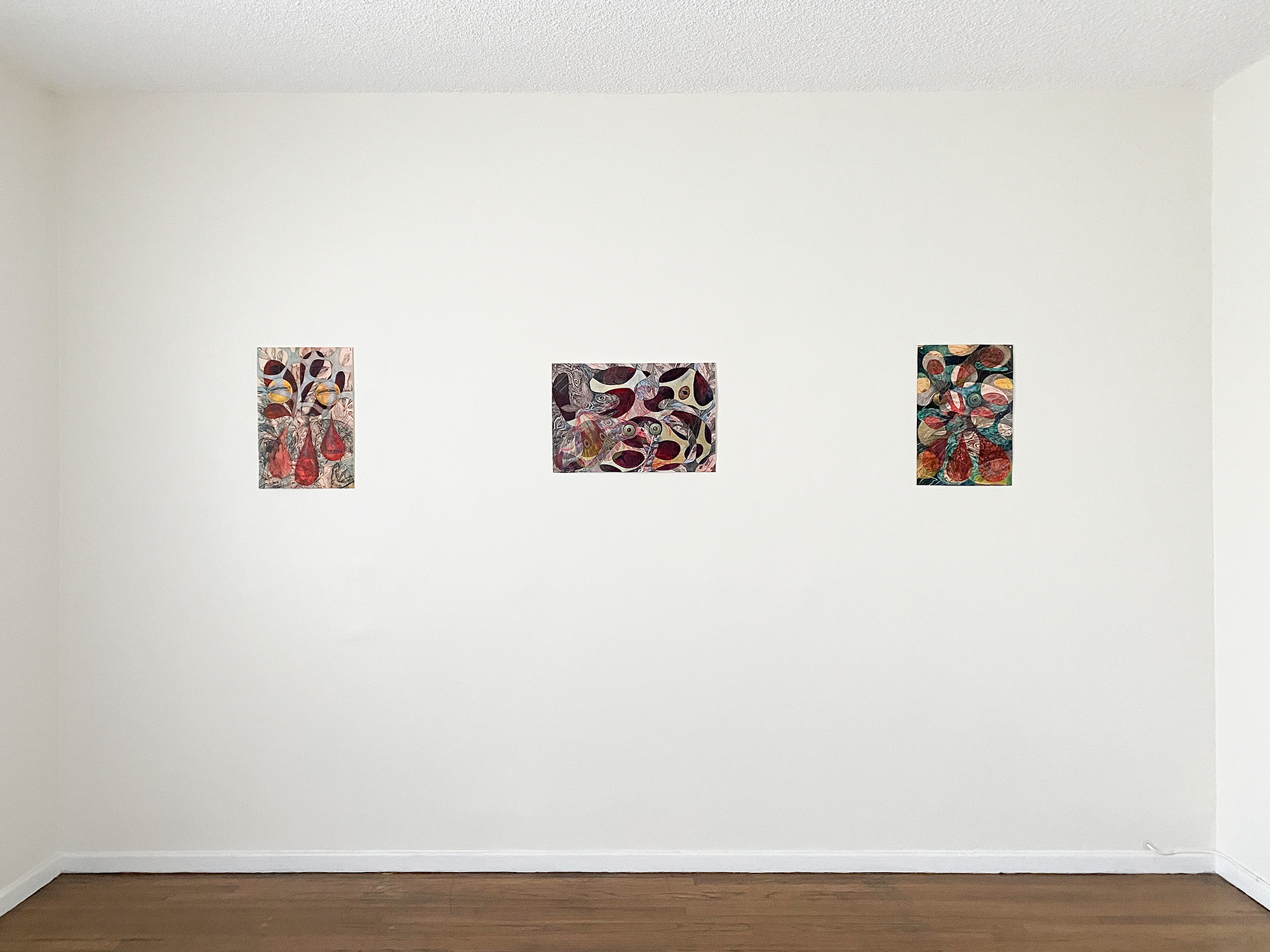
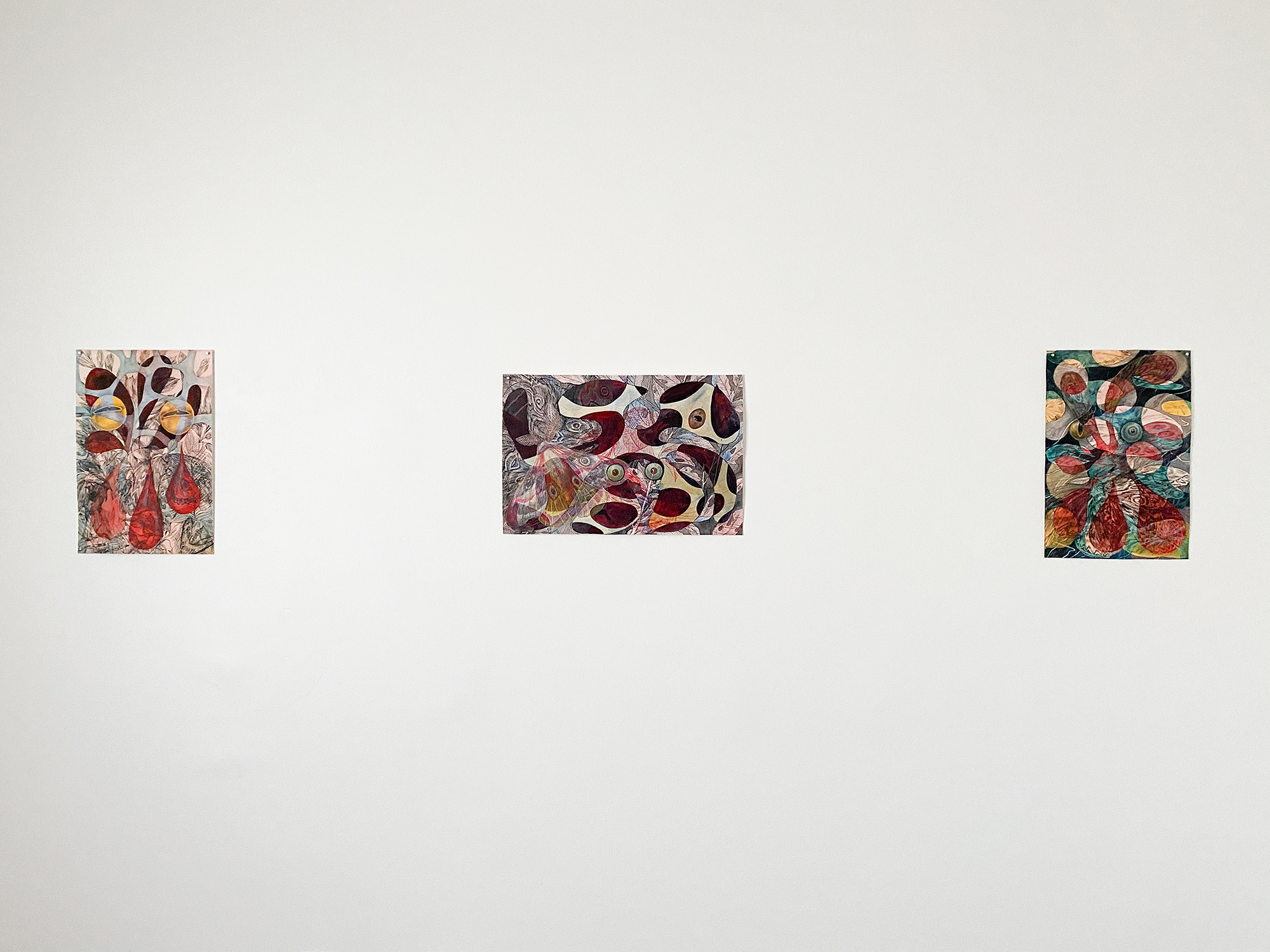
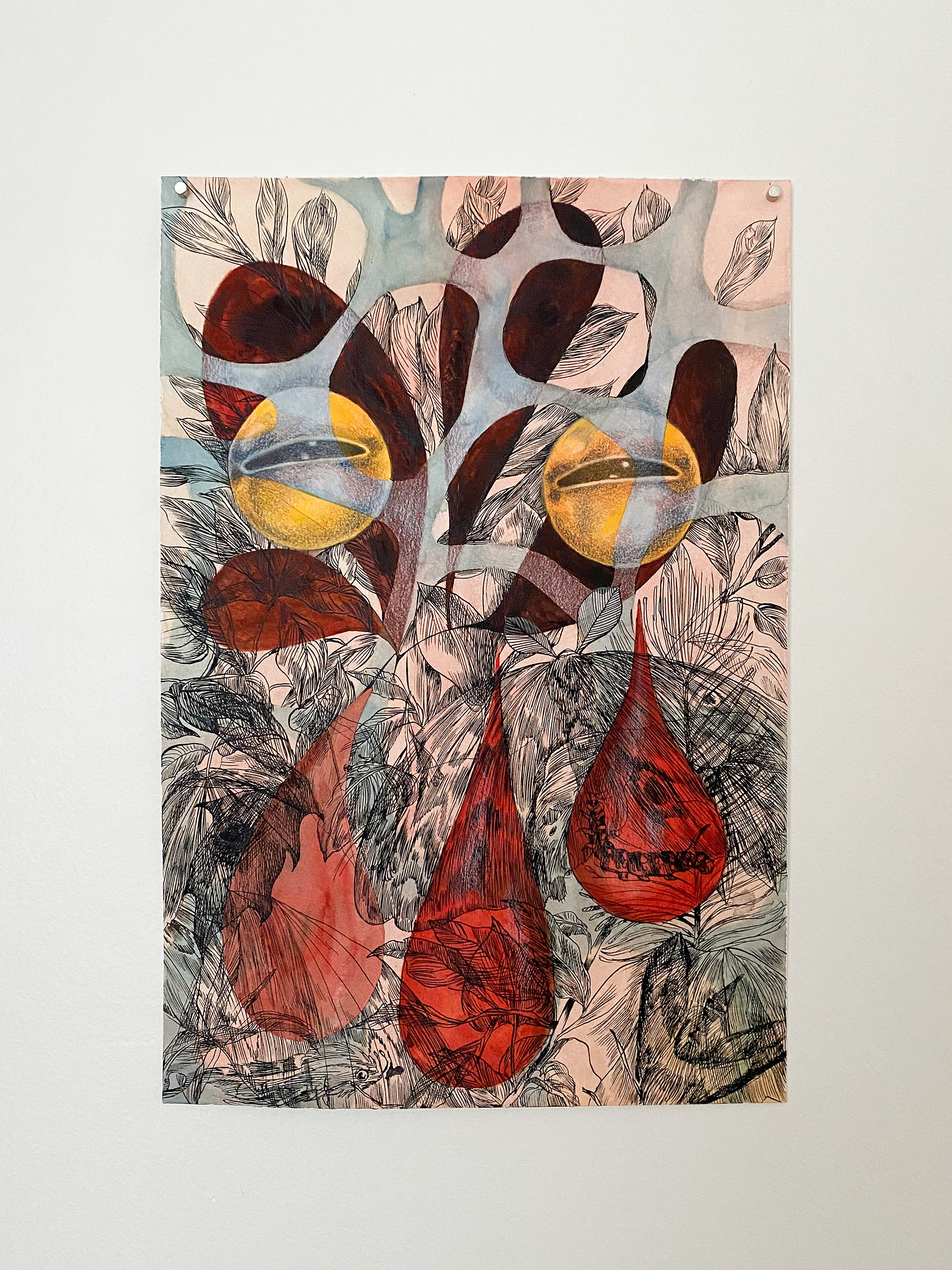
Webbed, watercolour, ink, and pencil crayon on paper, 12 x 18 in, 2020
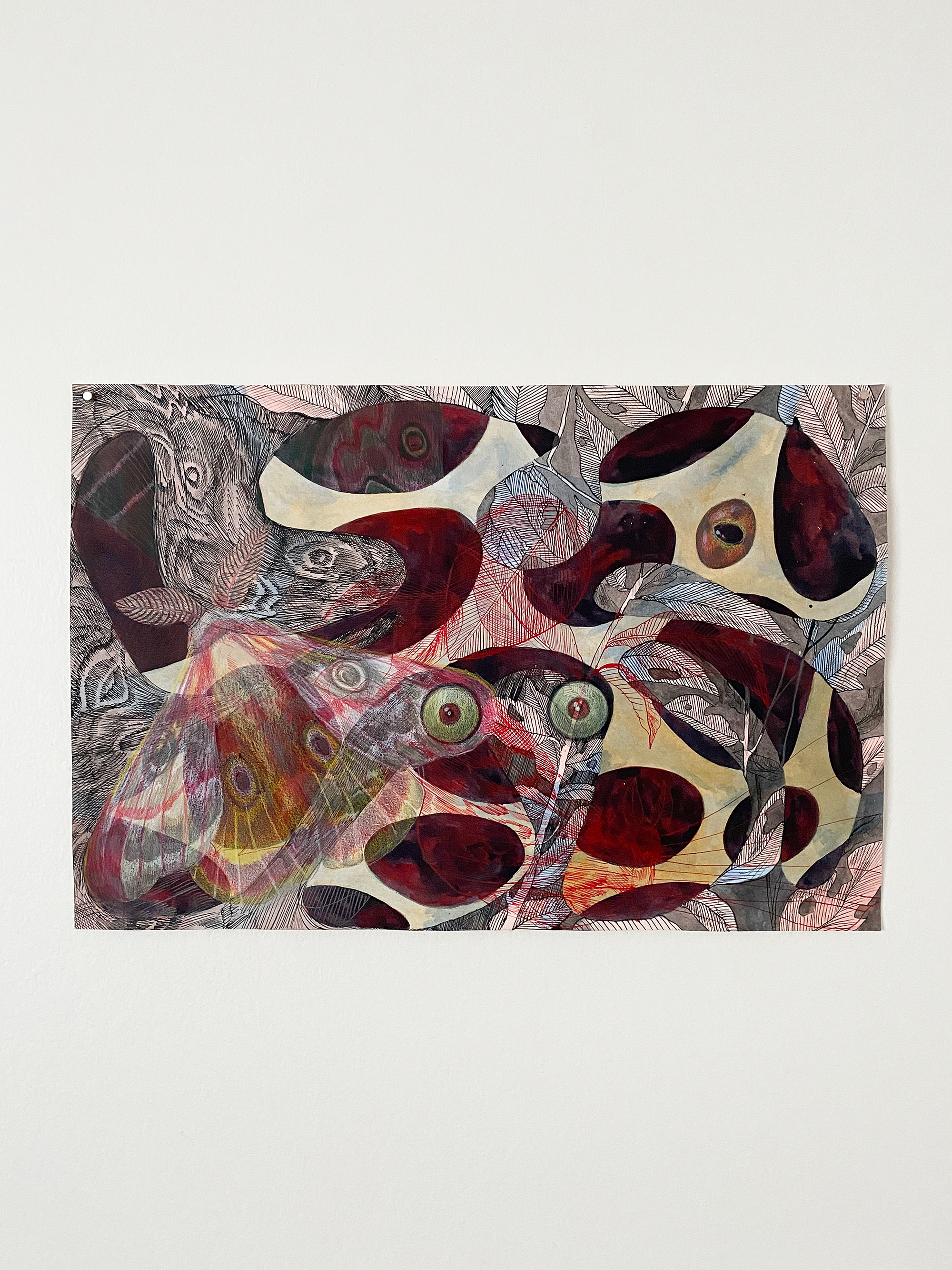
Brindled, watercolour, ink, and pencil crayon on paper, 20.75 x 13.75 in, 2020
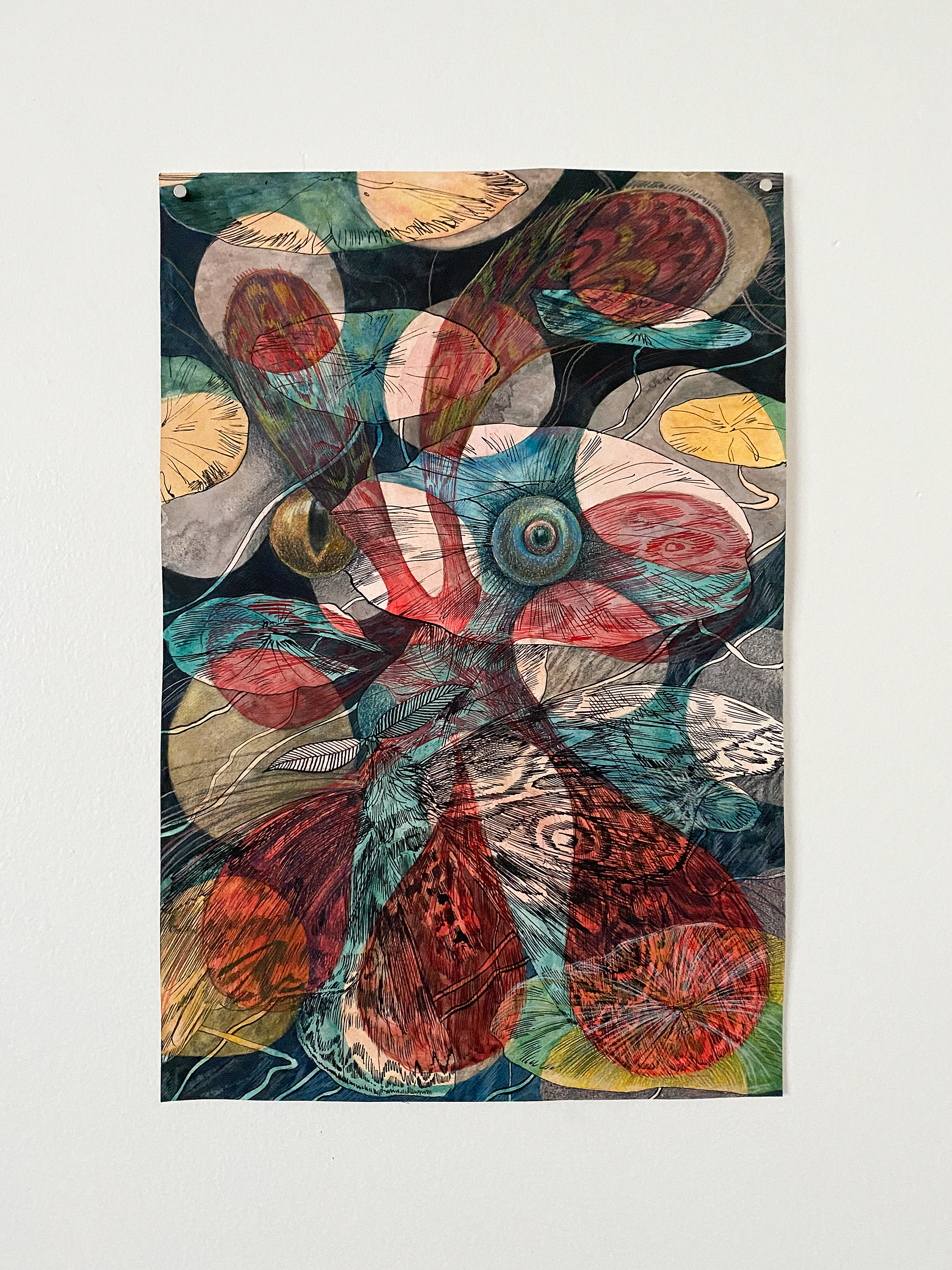
Watery World, watercolour, ink, and pencil crayon on paper, 11.75 x 17.75 in, 2021
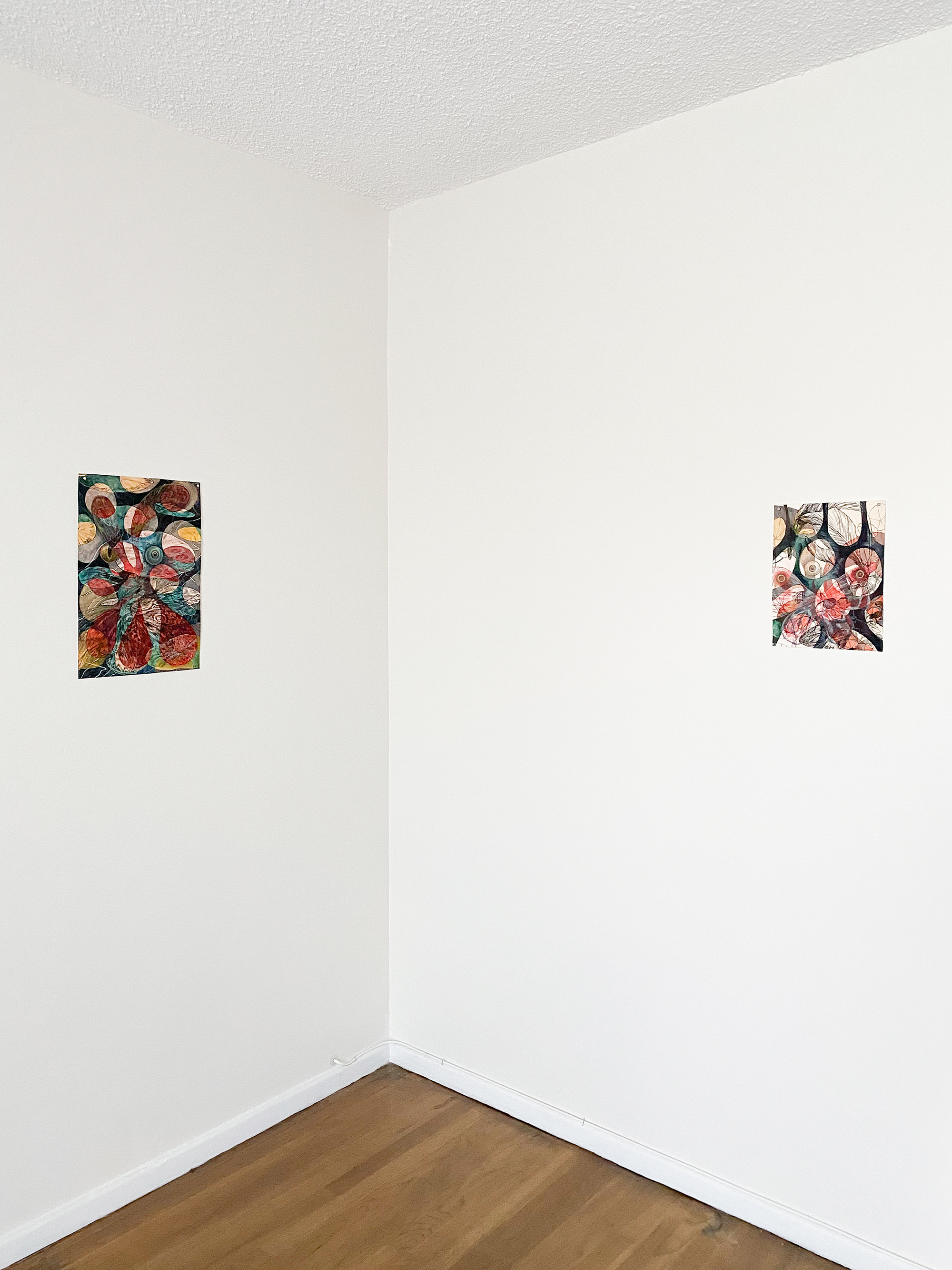
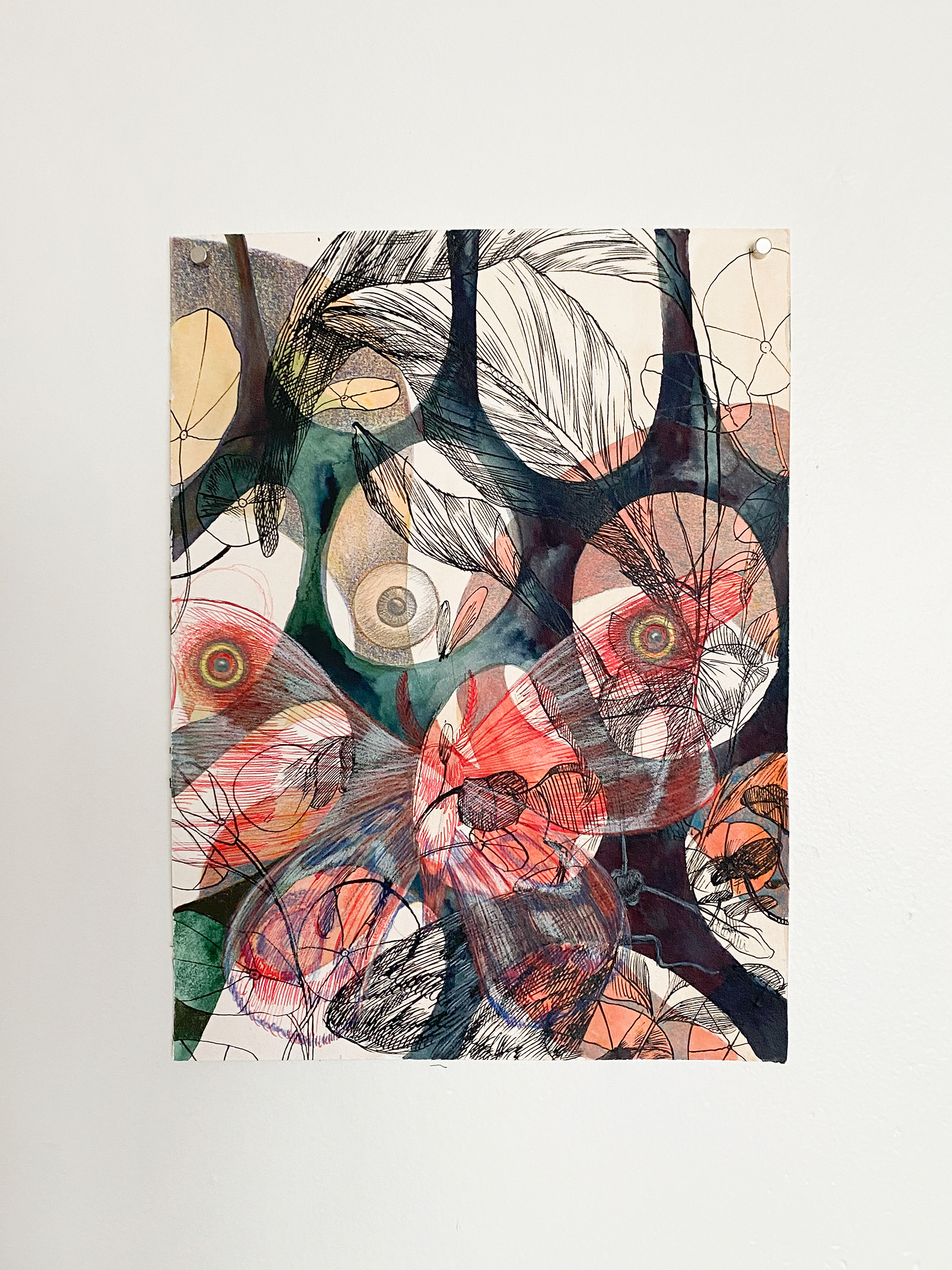
Moth Eye, watercolour, ink, and pencil crayon on paper, 12 x 9 in, 2020
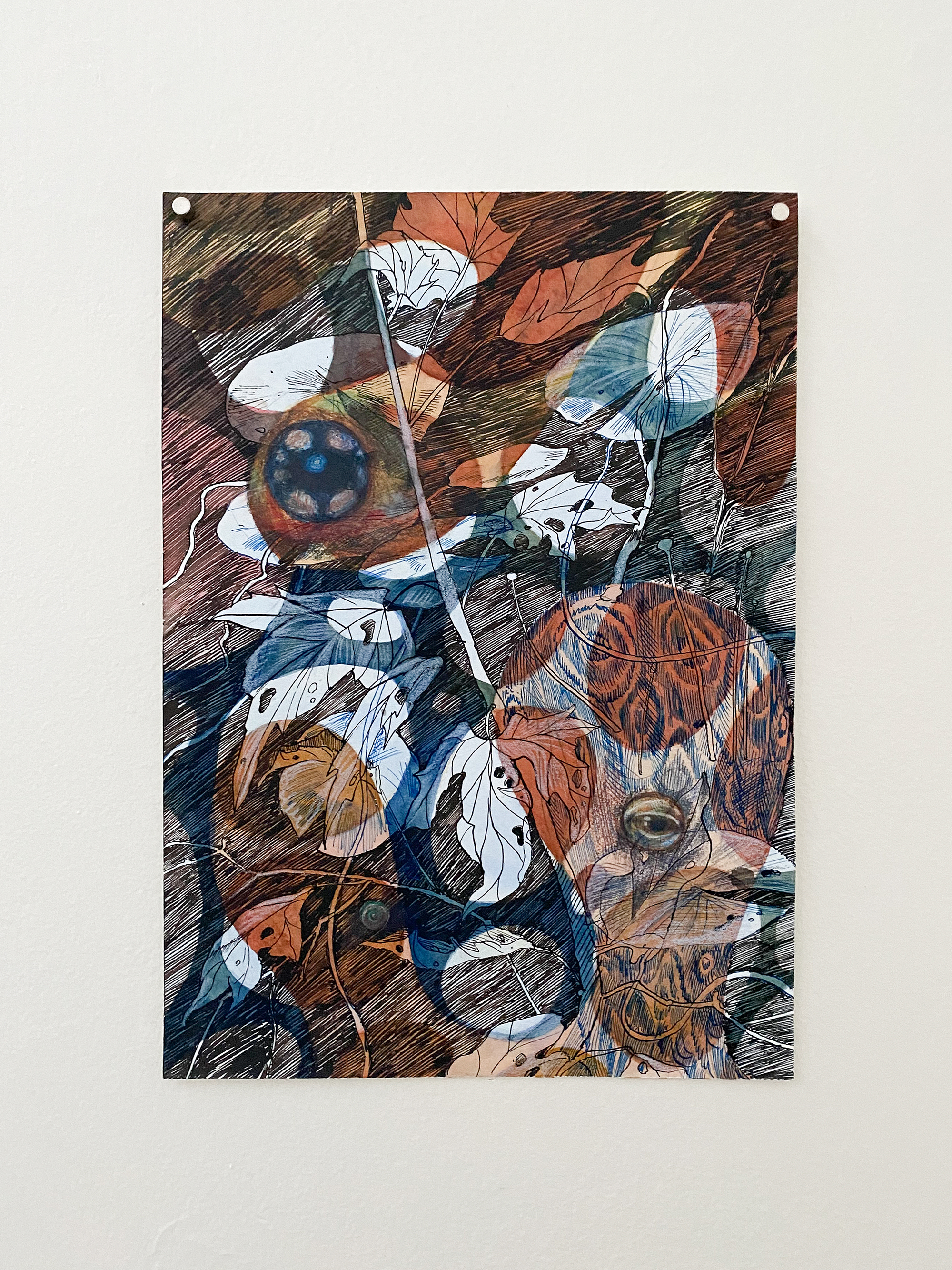
One Look, watercolour, ink, and pencil crayon on paper, 8.75 x 12 in, 2020

Feuilleton is pleased to present a solo exhibition of the Canadian, Toronto-based artist Sarah Davidson.
Of this body of work, Sarah Davidson writes:
This work was all created in the past 8 months, and I was thinking of the drawings as having a relationship to plein air observational drawing, in scale and medium, and also in process. They're all drawn at least partly from observation (also partly from historical sources, partly from intuition). The background blobs and web-like forms are drawn without any reference, and the recognizable flora and fauna is rendered partly from life. The recognizable forms in my drawings are familiar (as in they’re not exotic frogs, lily pads, etc, they’re species I might actually see around). The style owes a lot to historical ‘natural’ history drawing. For instance Maria Sibylla Merian’s drawings of the life cycles of insects. Although those evoke some ambivalence in me: they’re both beautiful and also grotesque. They’re a careful and close look at delicate lives and also a symptom of the colonial exploits of a western nation.
I like for space to function strangely in my drawings. They’re meant to do something other than what that kind of scientific observational drawing does, to be porous, to suggest connections between disparate forms. There’s something queer in that, which I’m trying to work through, which is maybe inherent in the non-specific biomorphism of the forms, and the idea of stressing connections between elements rather than distinctions between them. Maybe just in wondering who defines what is ‘natural’, and who that serves.
Of this body of work, Sarah Davidson writes:
This work was all created in the past 8 months, and I was thinking of the drawings as having a relationship to plein air observational drawing, in scale and medium, and also in process. They're all drawn at least partly from observation (also partly from historical sources, partly from intuition). The background blobs and web-like forms are drawn without any reference, and the recognizable flora and fauna is rendered partly from life. The recognizable forms in my drawings are familiar (as in they’re not exotic frogs, lily pads, etc, they’re species I might actually see around). The style owes a lot to historical ‘natural’ history drawing. For instance Maria Sibylla Merian’s drawings of the life cycles of insects. Although those evoke some ambivalence in me: they’re both beautiful and also grotesque. They’re a careful and close look at delicate lives and also a symptom of the colonial exploits of a western nation.
I like for space to function strangely in my drawings. They’re meant to do something other than what that kind of scientific observational drawing does, to be porous, to suggest connections between disparate forms. There’s something queer in that, which I’m trying to work through, which is maybe inherent in the non-specific biomorphism of the forms, and the idea of stressing connections between elements rather than distinctions between them. Maybe just in wondering who defines what is ‘natural’, and who that serves.
I
spent ten years working as a guide for an outdoor school, (which I
still do, technically, I just haven't worked during the pandemic), and
my interest in thinking about 'nature' and observation comes out of
that, in my downtime I would fill notebooks with drawings from my
surroundings, and in a more abstract sense, because I had to teach
ecology and natural history classes, I started to question the subtext
of the lessons I was passing on, and my own authority on either of those
subjects. I’ve been thinking about observation for a while, and so I
made these drawings thinking it would be productively uncanny if they
looked back at their viewers. Moths in particular were interesting to
me, because their markings mimic eyes. I guess these drawings are about
wondering: who is seeing who, and how?
Sarah Davidson (b. 1989, Ottawa) lives and works in Toronto, Canada. She has exhibited her work at Cassandra Cassandra (Toronto), Erin Stump Projects (Toronto), Unit 17 (Vancouver), The Power Plant (Toronto), Little Sister (Toronto), Birch Contemporary (Toronto), The New Gallery (Calgary), and Audain Gallery (Vancouver). She was a finalist in the 2018 RBC Canadian Painting Competition, and is the recipient of awards and residencies including the Banff Centre's Late Winter BAiR (2020), the Toronto Arts Council's Emerging Visual Artist Grant (2020), and AiR Sandnes residency in Sandnes, Norway (2016). She holds a BFA from Emily Carr University of Art & Design (2015) and an MFA from the University of Guelph (2019).
Sarah Davidson (b. 1989, Ottawa) lives and works in Toronto, Canada. She has exhibited her work at Cassandra Cassandra (Toronto), Erin Stump Projects (Toronto), Unit 17 (Vancouver), The Power Plant (Toronto), Little Sister (Toronto), Birch Contemporary (Toronto), The New Gallery (Calgary), and Audain Gallery (Vancouver). She was a finalist in the 2018 RBC Canadian Painting Competition, and is the recipient of awards and residencies including the Banff Centre's Late Winter BAiR (2020), the Toronto Arts Council's Emerging Visual Artist Grant (2020), and AiR Sandnes residency in Sandnes, Norway (2016). She holds a BFA from Emily Carr University of Art & Design (2015) and an MFA from the University of Guelph (2019).
Erin Stump Projects, Toronto
April 26 - May 25, 2019
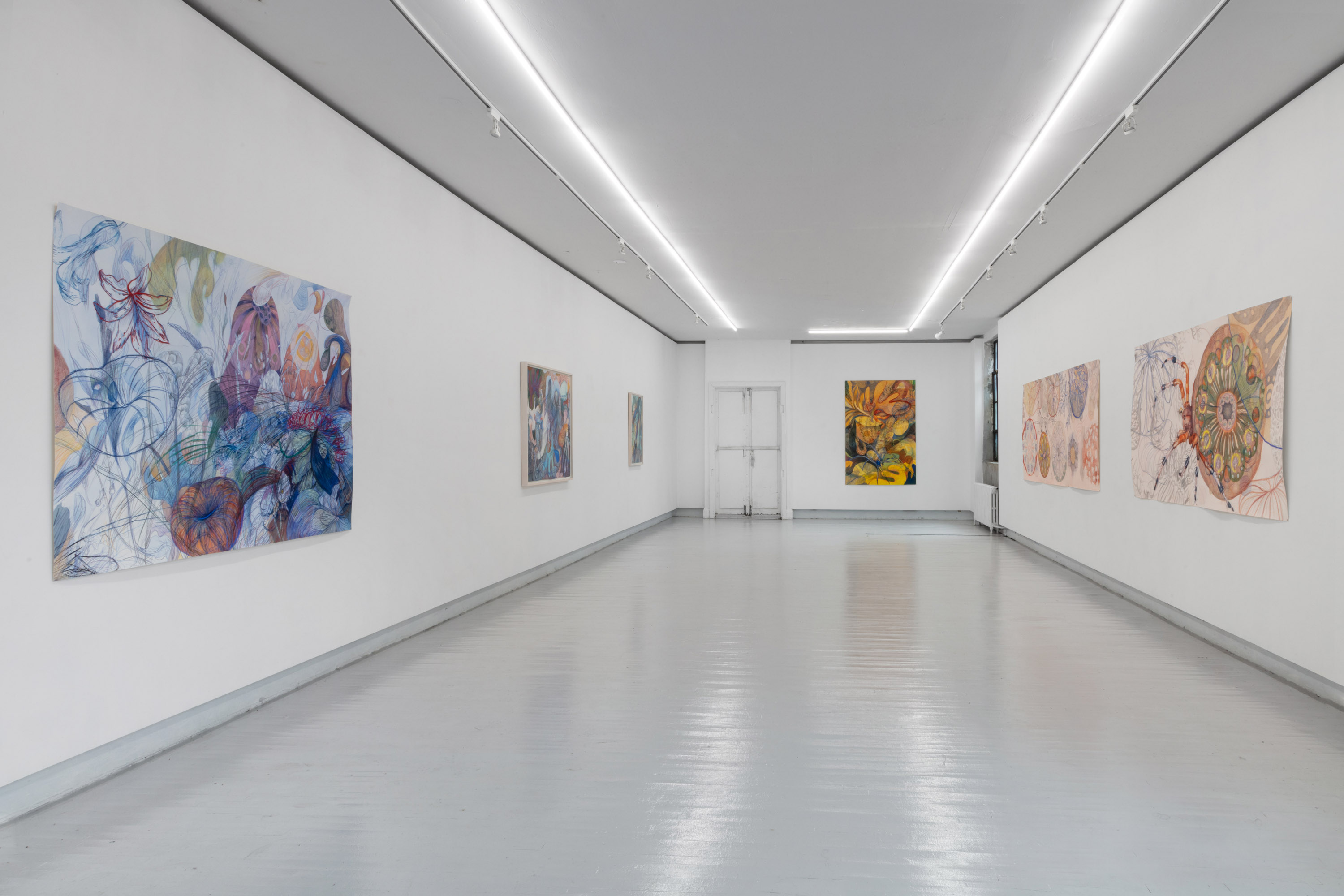
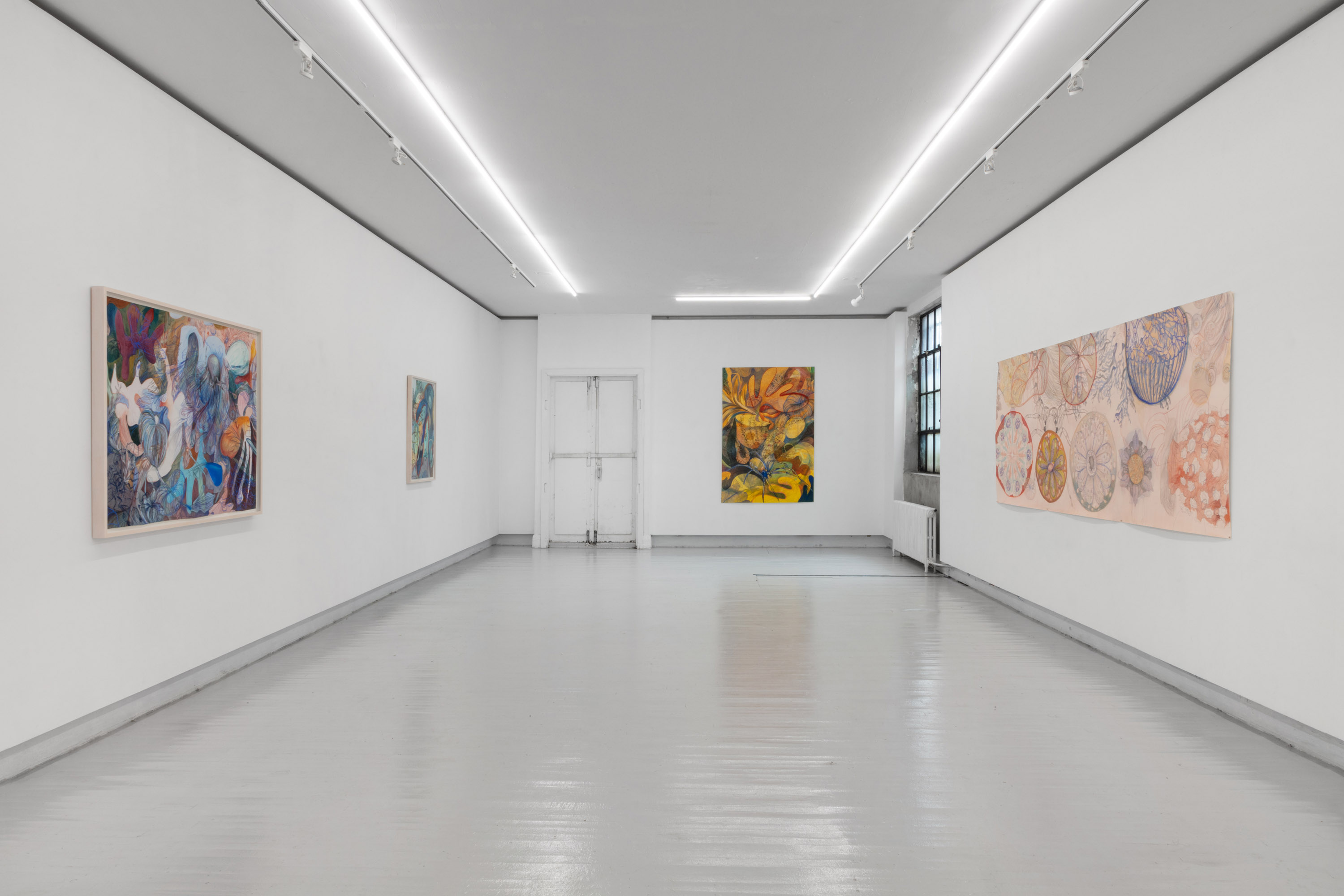
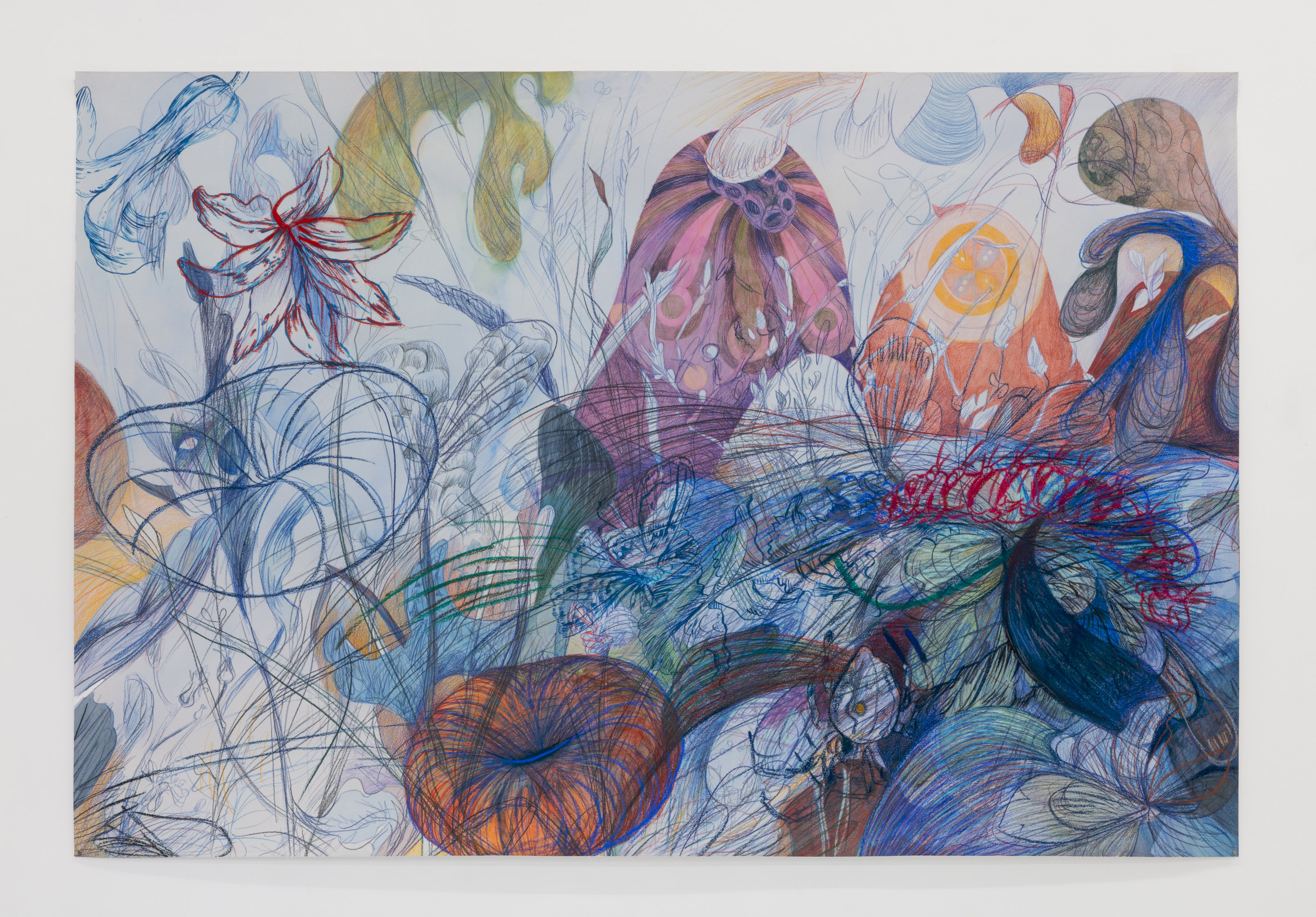
The Dappled World, watercolour, pastel, pencil and pencil crayon on paper, 50 x 72 in, 2019
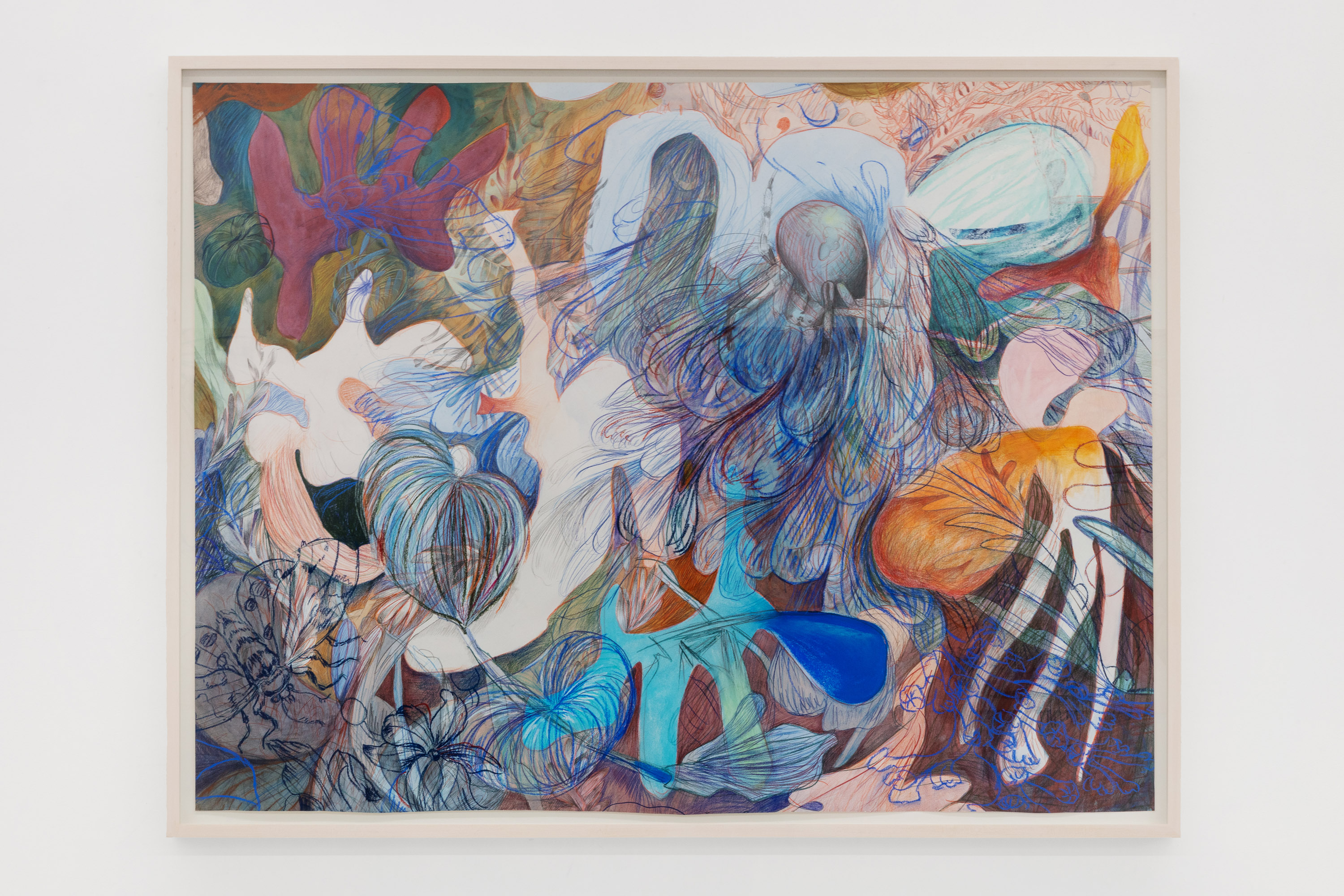
Plant Blindness, watercolour, ink, pastel, pencil and pencil crayon on paper, 38 x 50 in , 2019
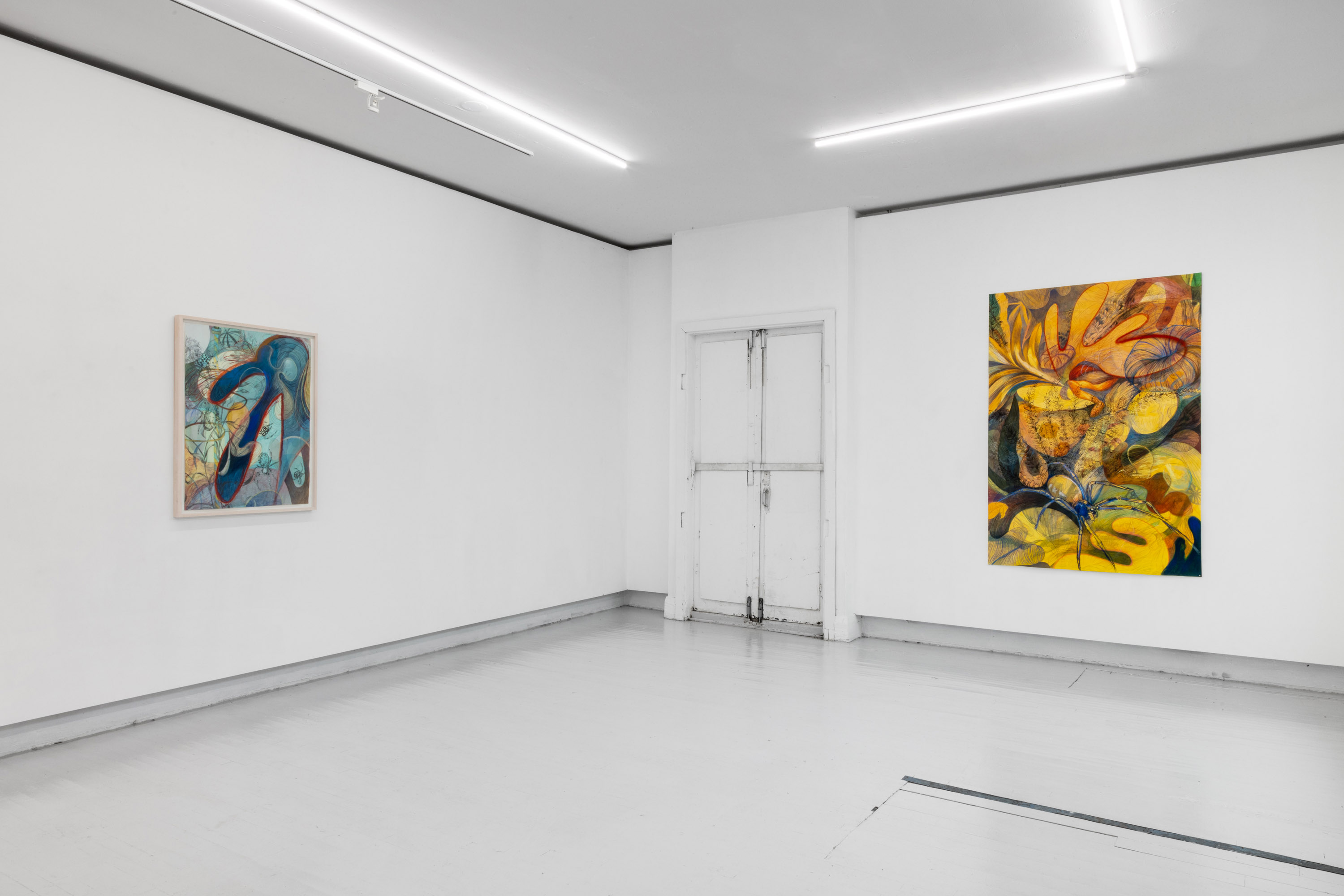
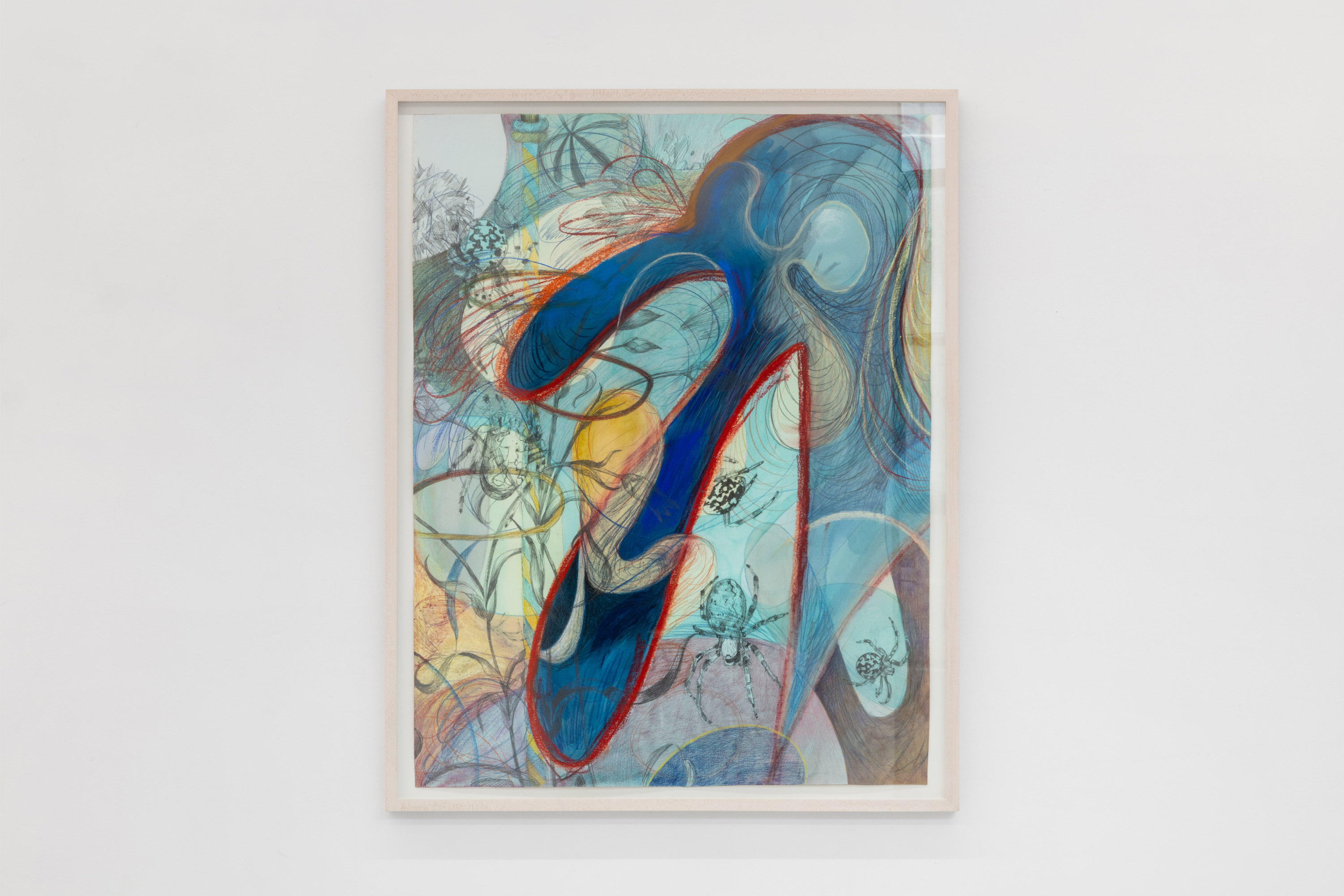
Feelers, watercolour, ink, pastel, pencil and pencil crayon on paper, 27 x 35 in, 2019
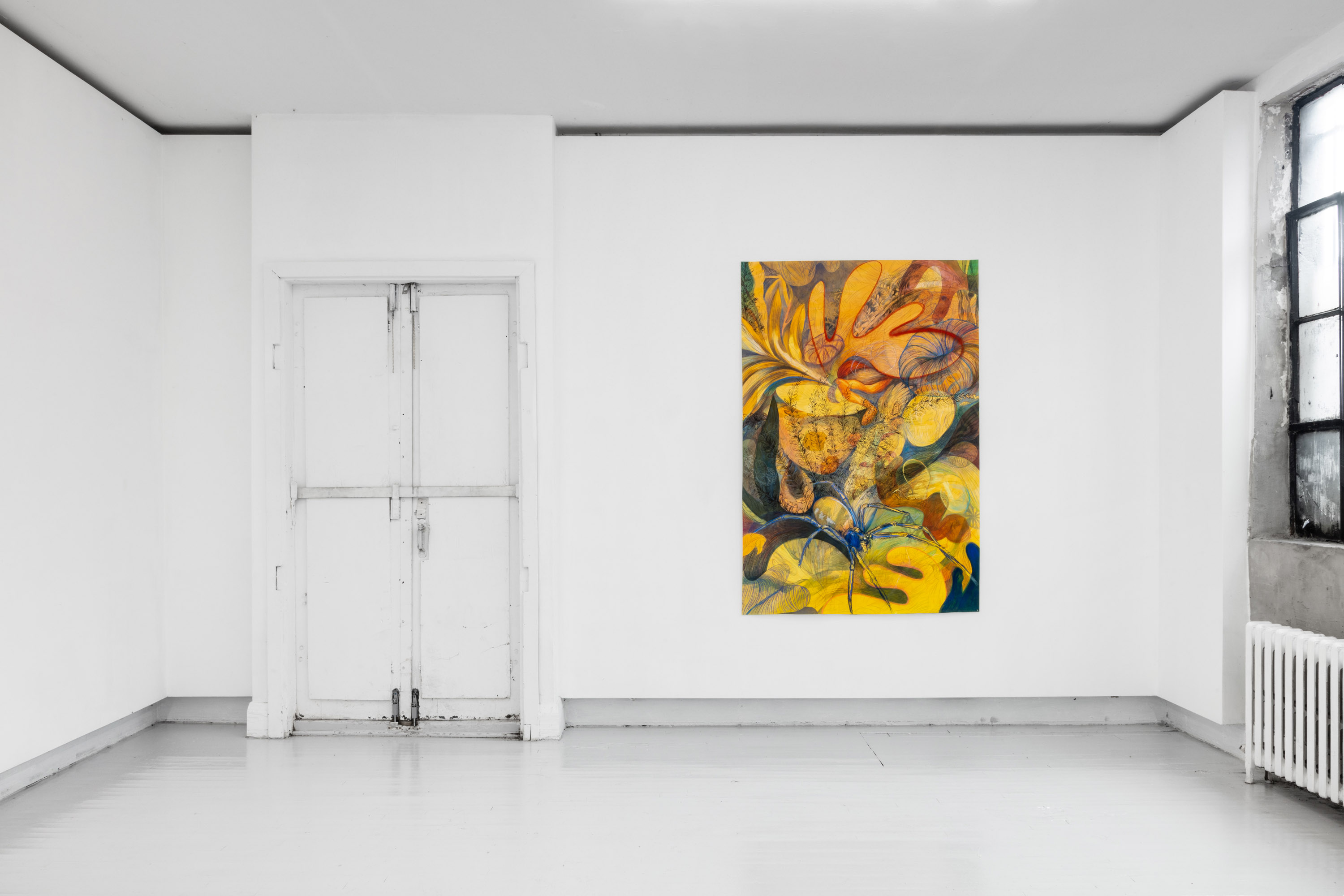
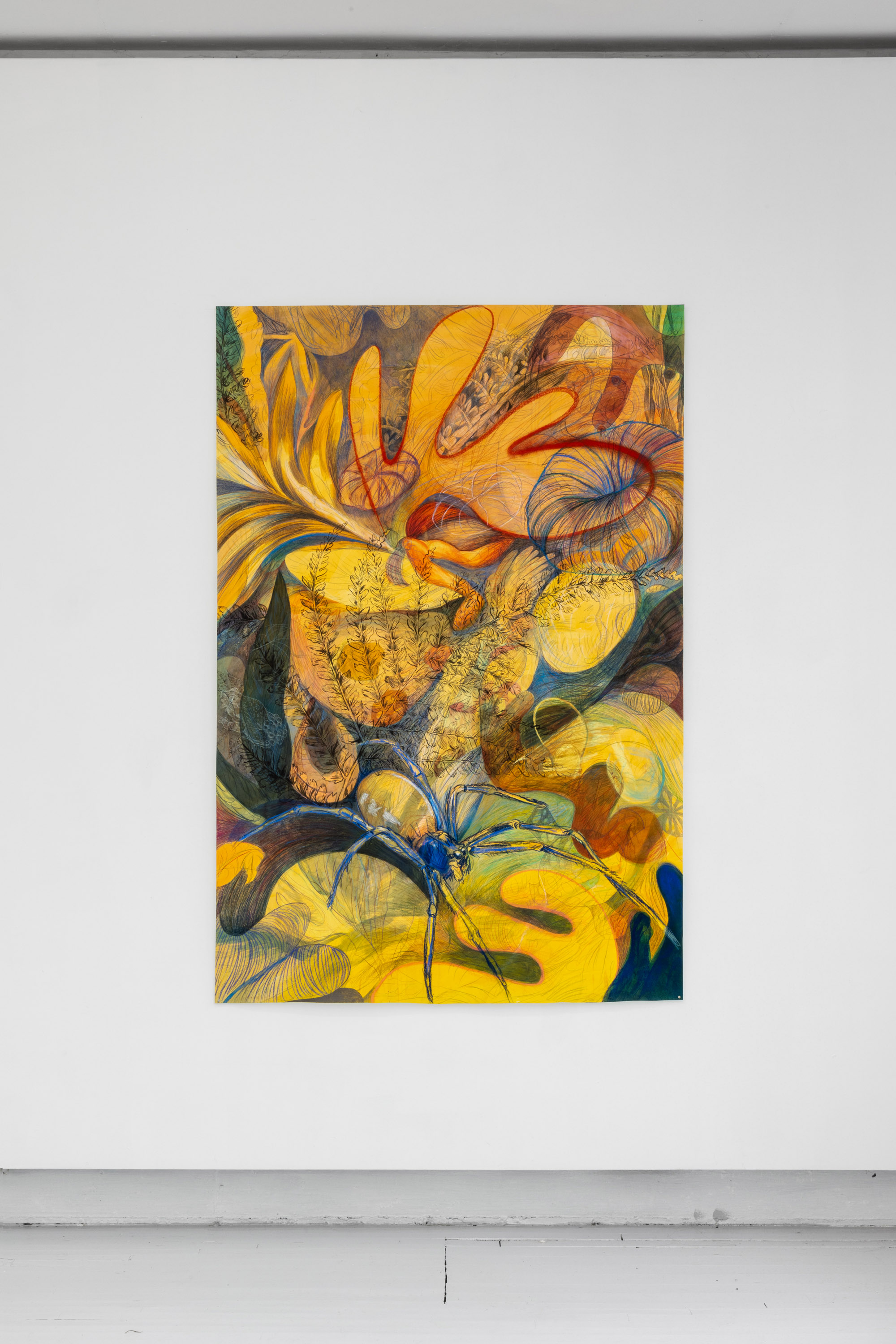
Lived Along Lines, ink, watercolour, pastel, pencil and pencil crayon on paper, 68 x 46 in, 2019
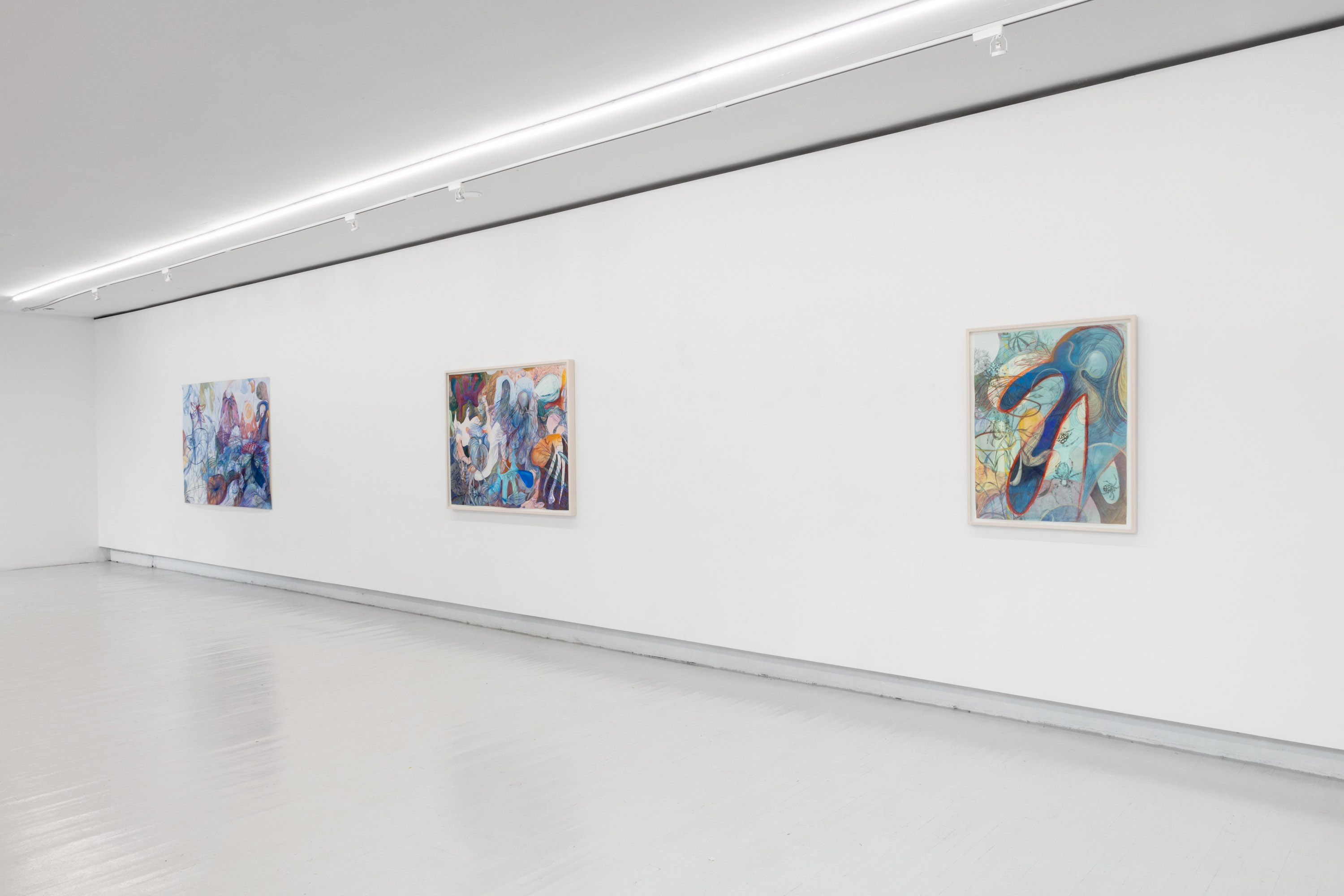
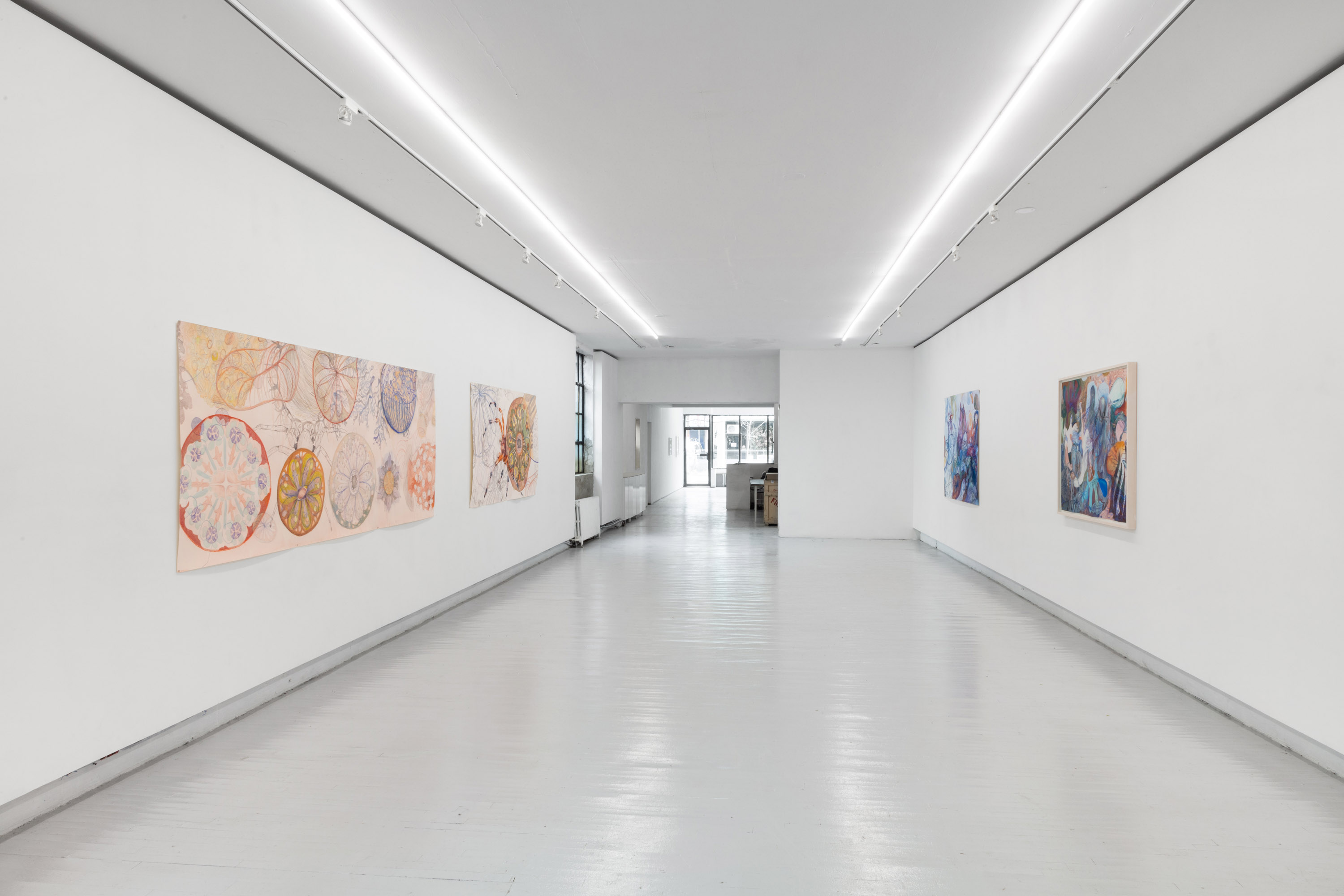
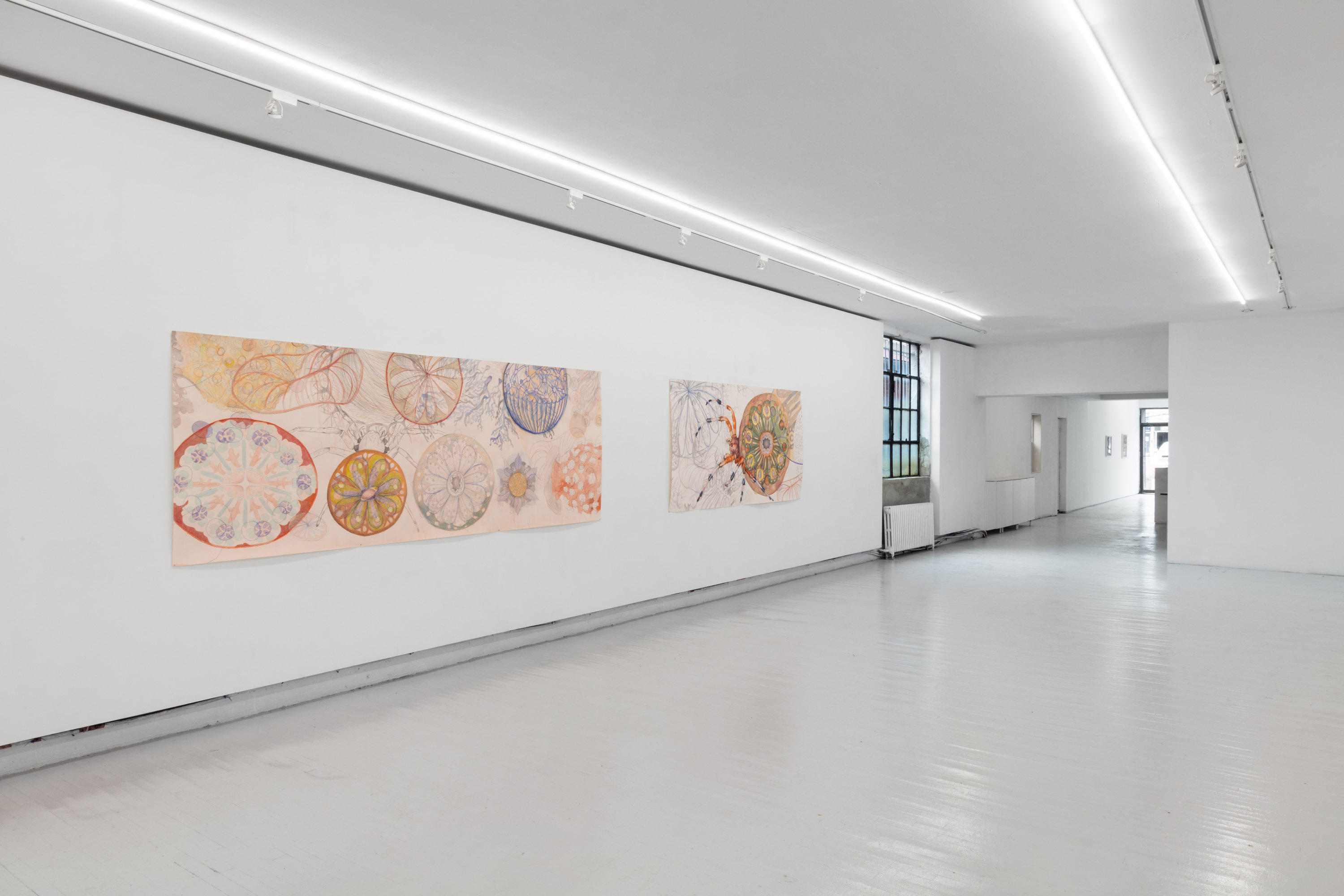
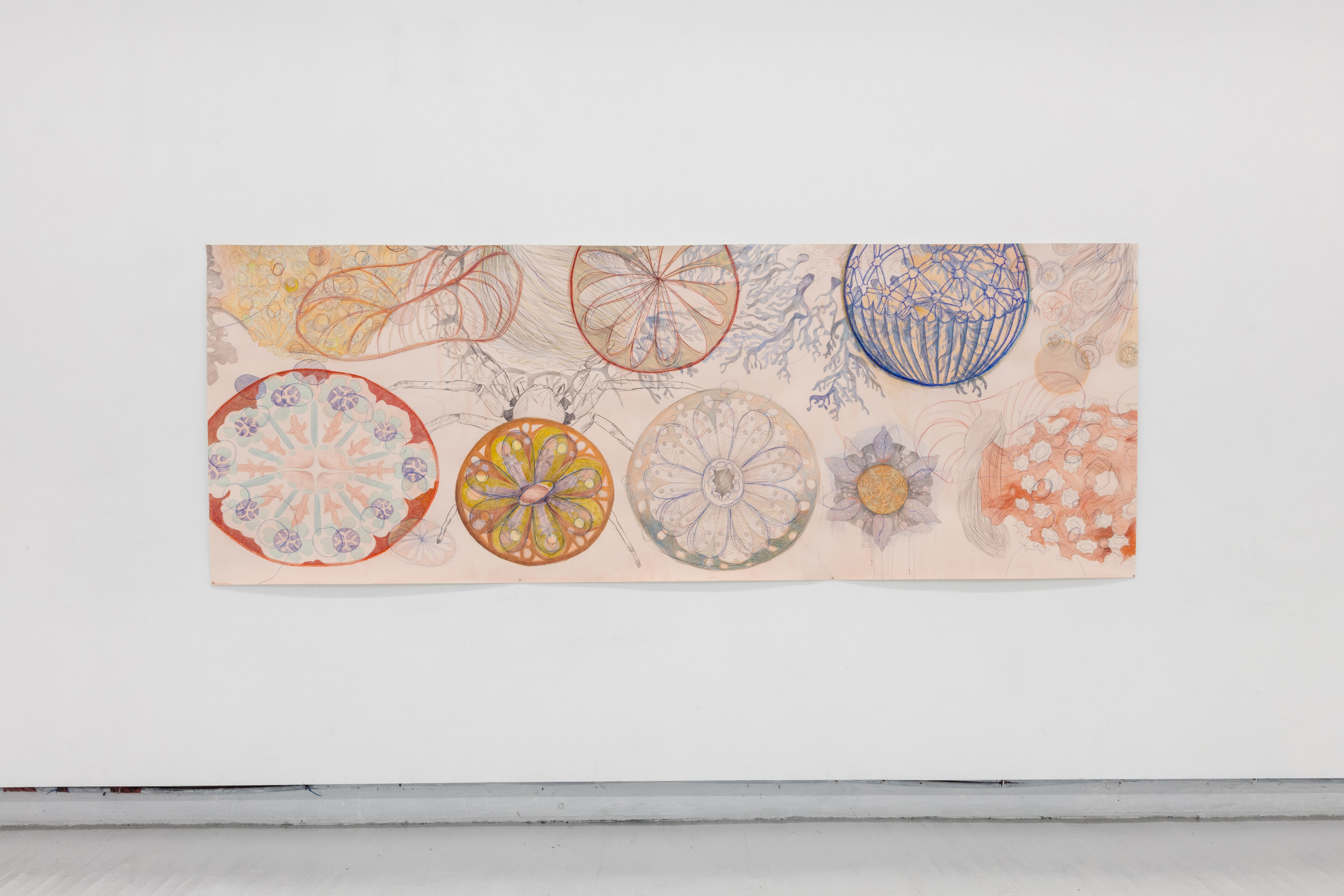
Seems Ascidian, watercolour, pastel, pencil and pencil crayon on paper, 122 x 44 in, 2019
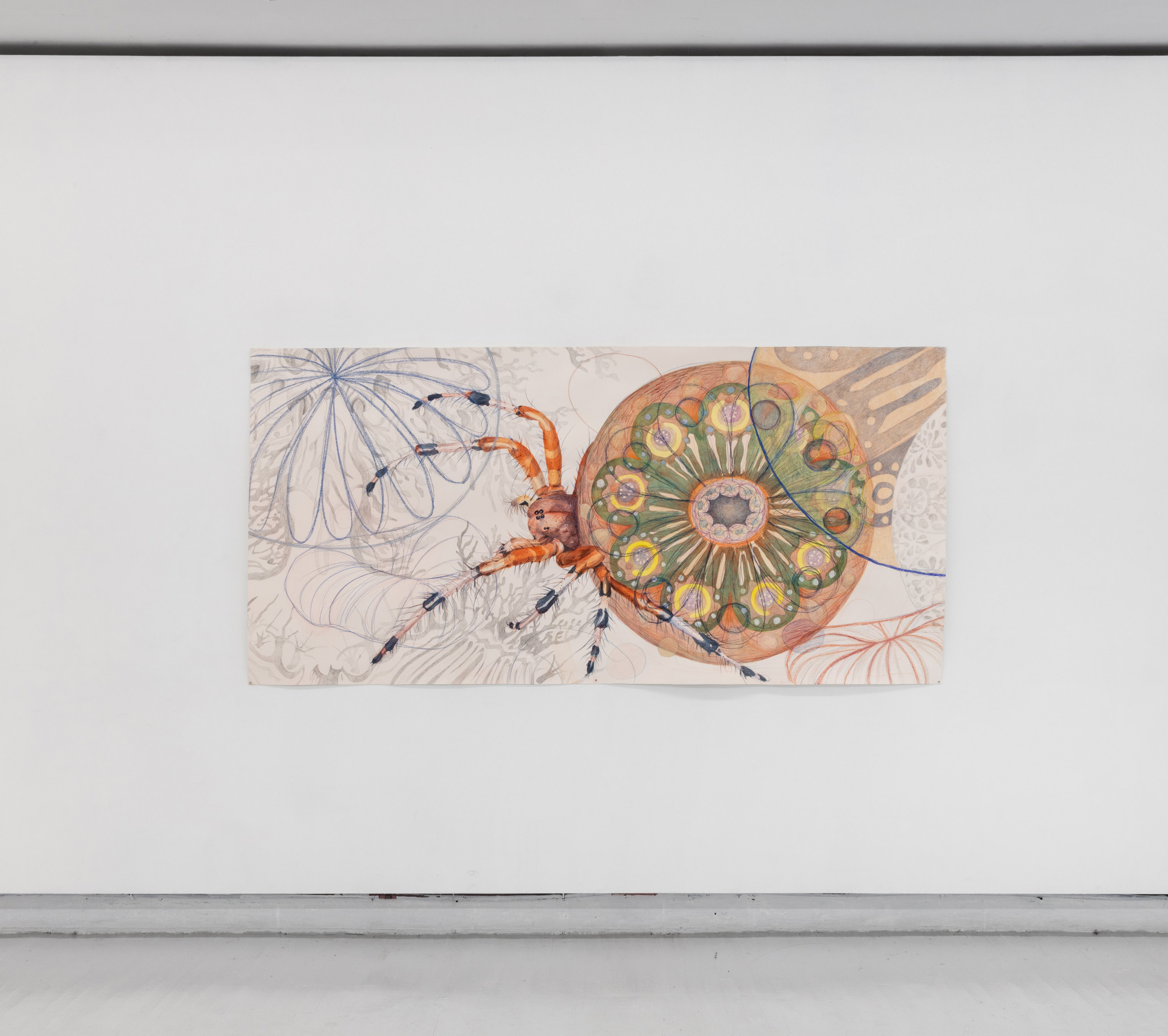
Web Weaver, watercolour, pastel, pencil and pencil crayon on paper, 90 x 44 in, 2019
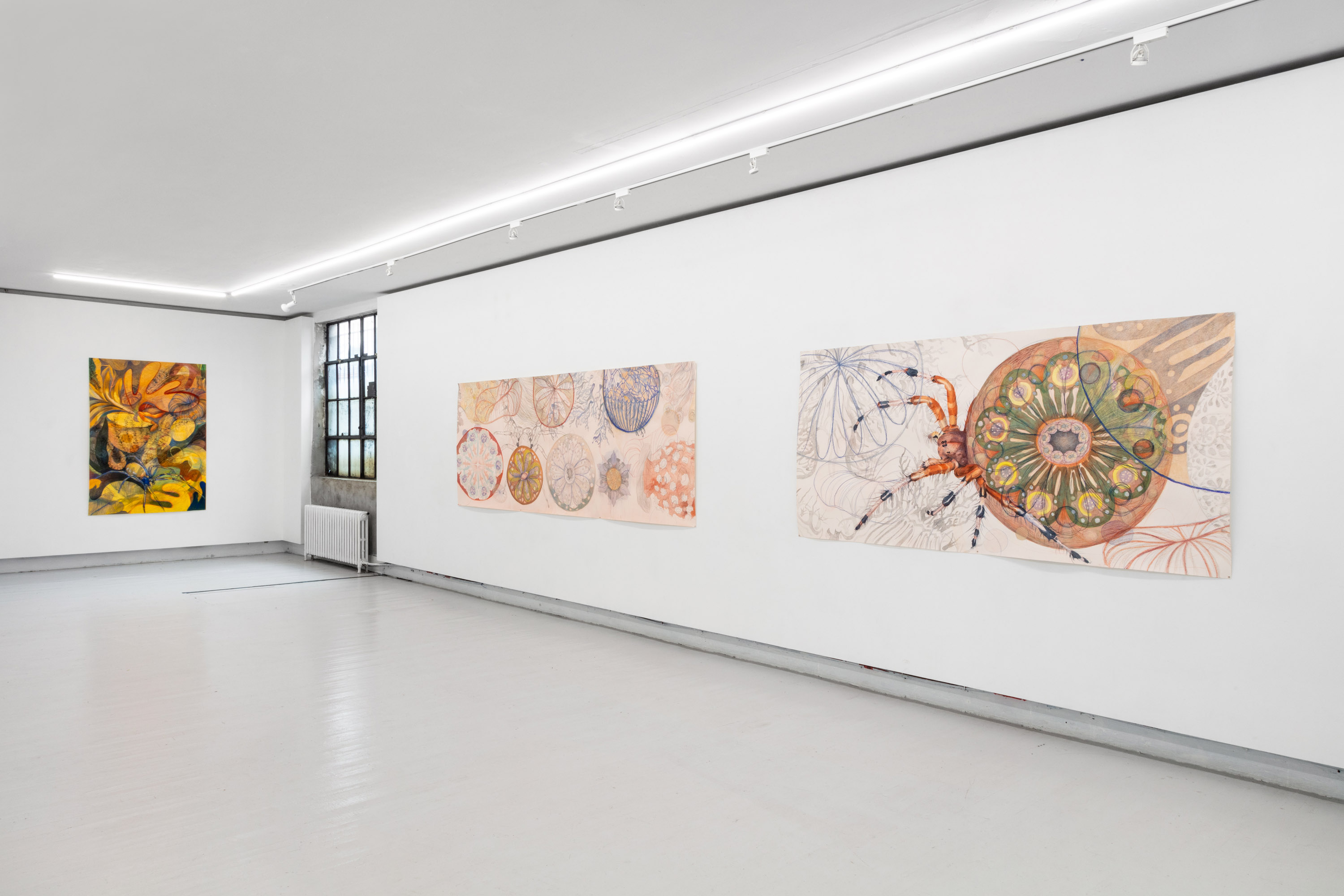
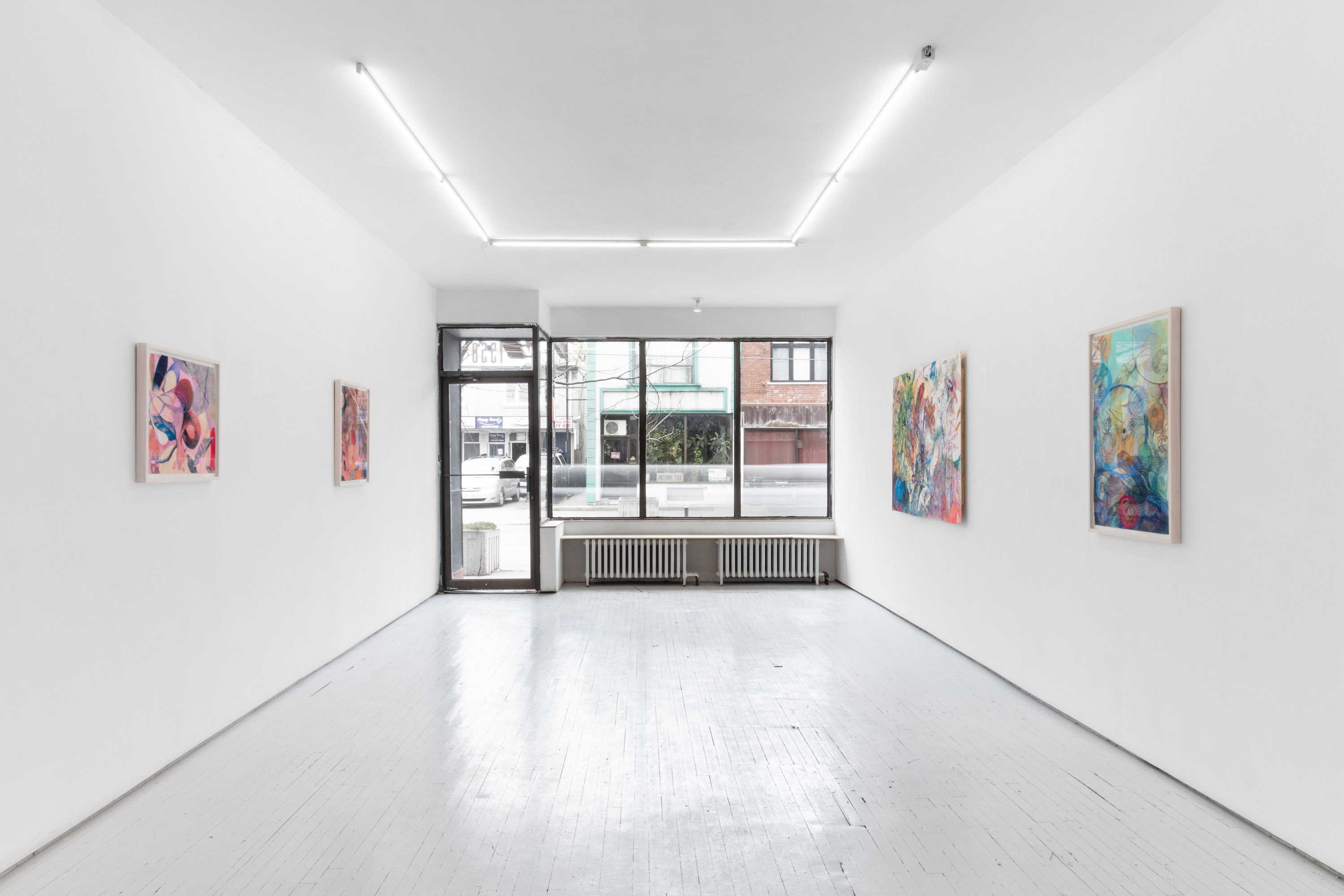
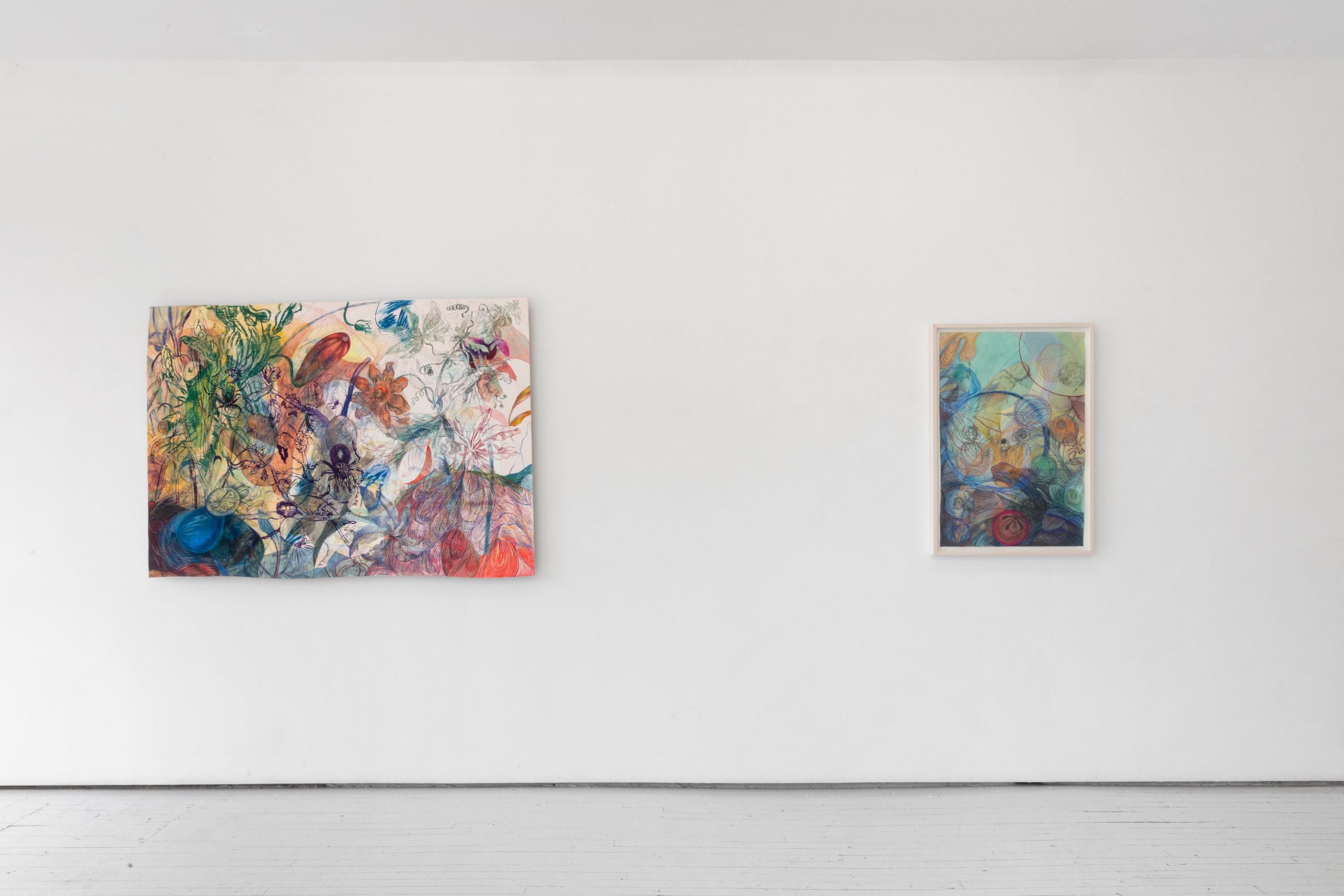
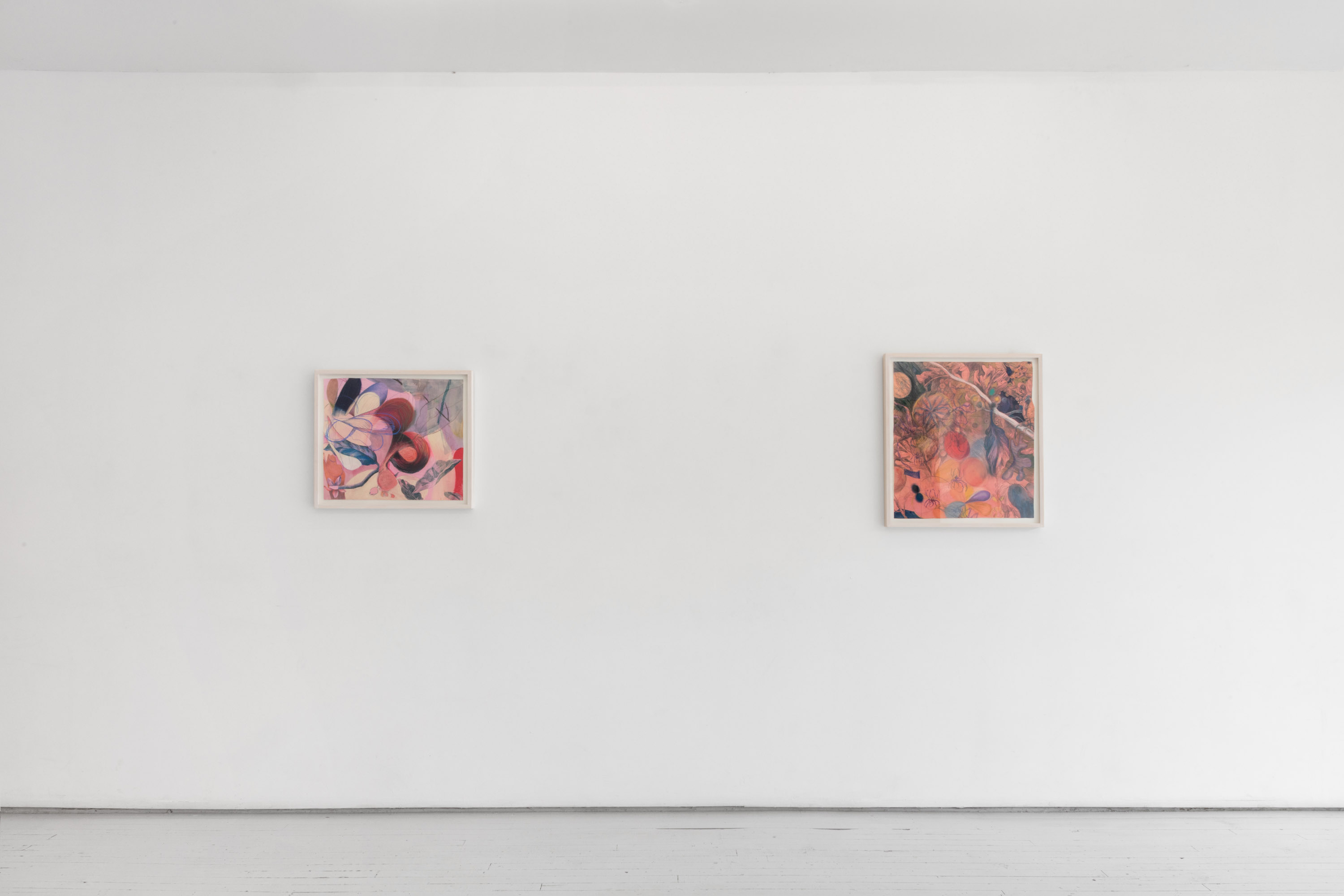
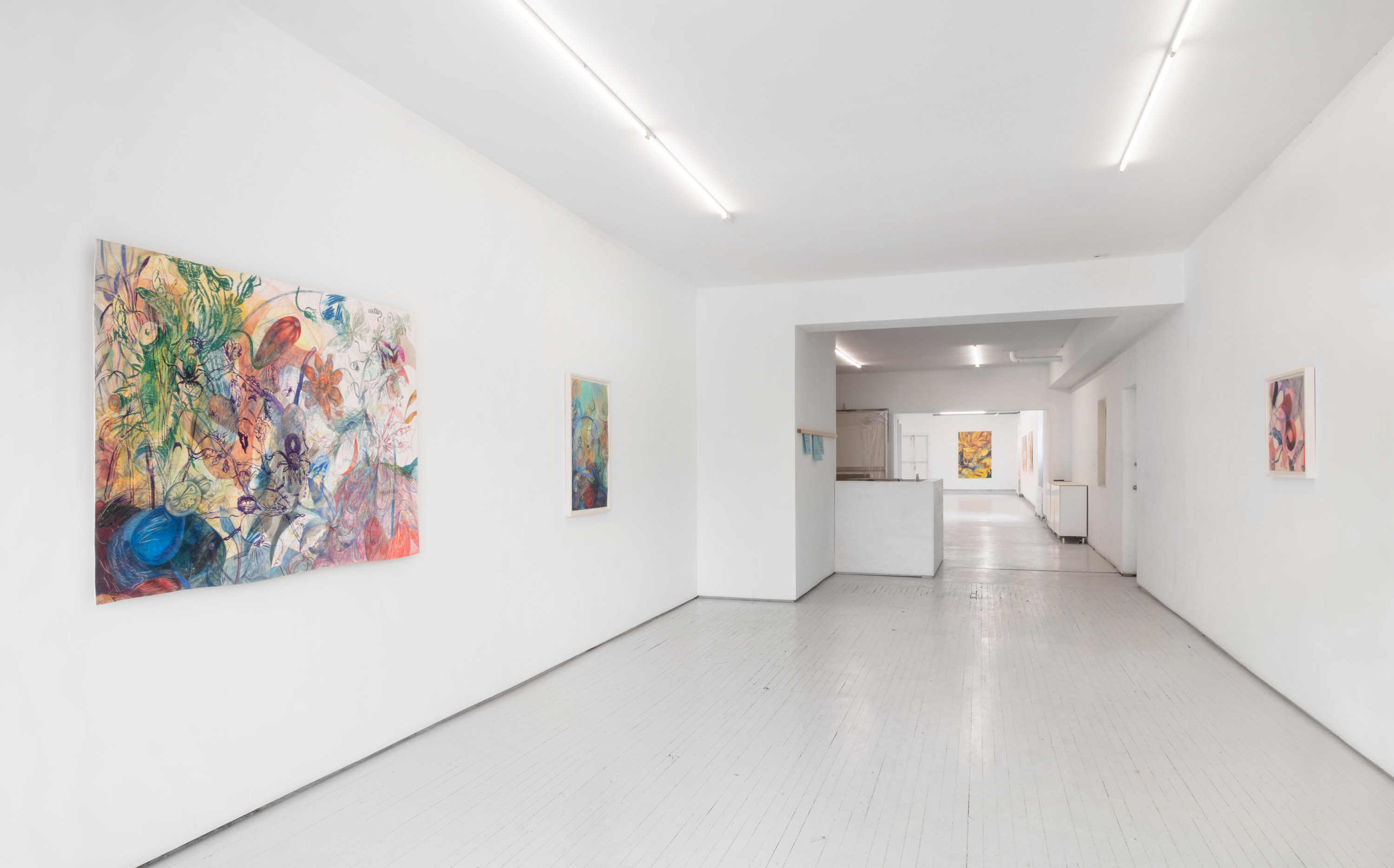
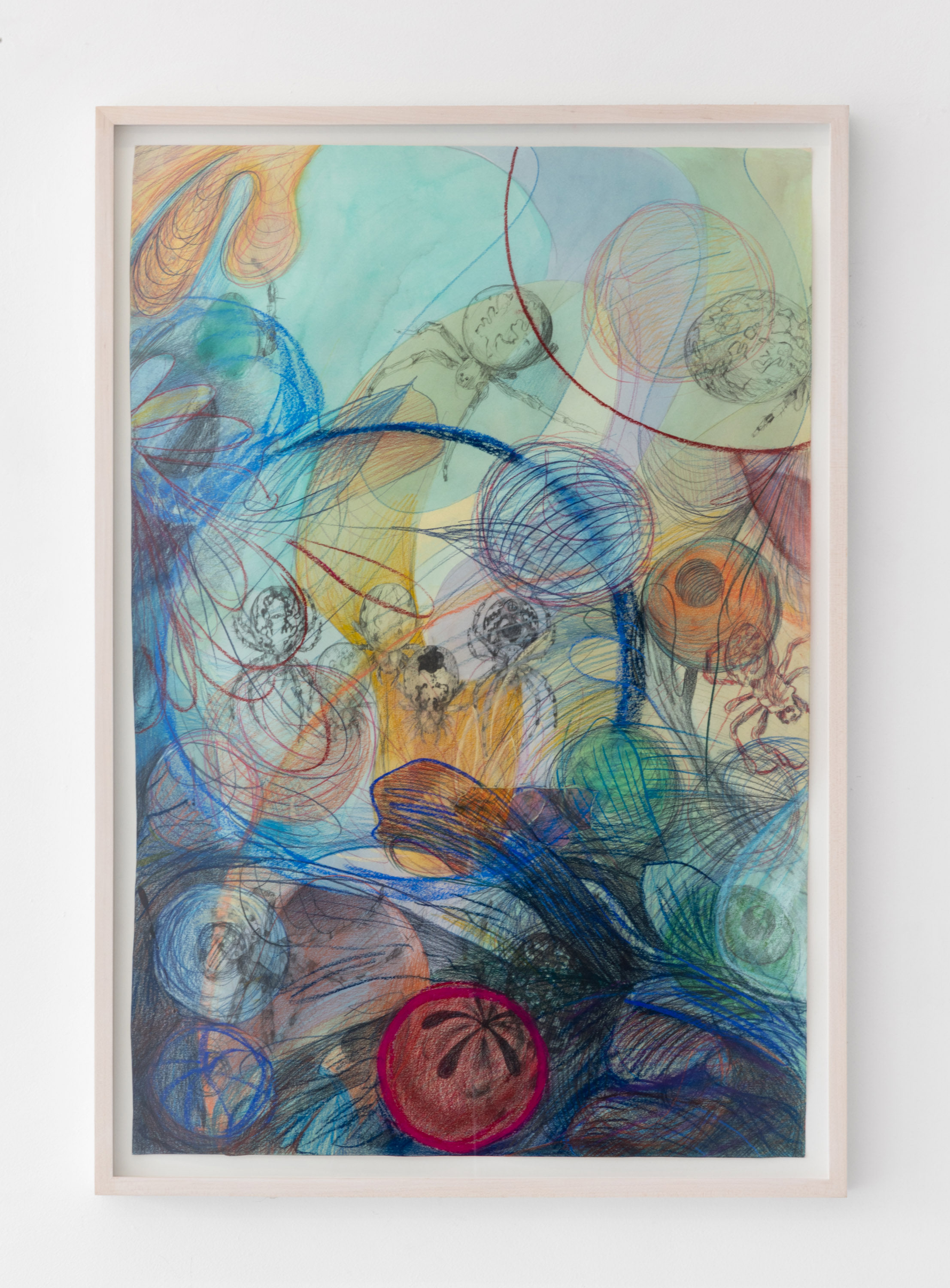
Lens Critters, ink, watercolour, pastel, pencil and pencil crayon on paper, 23 x 34 in, 2019
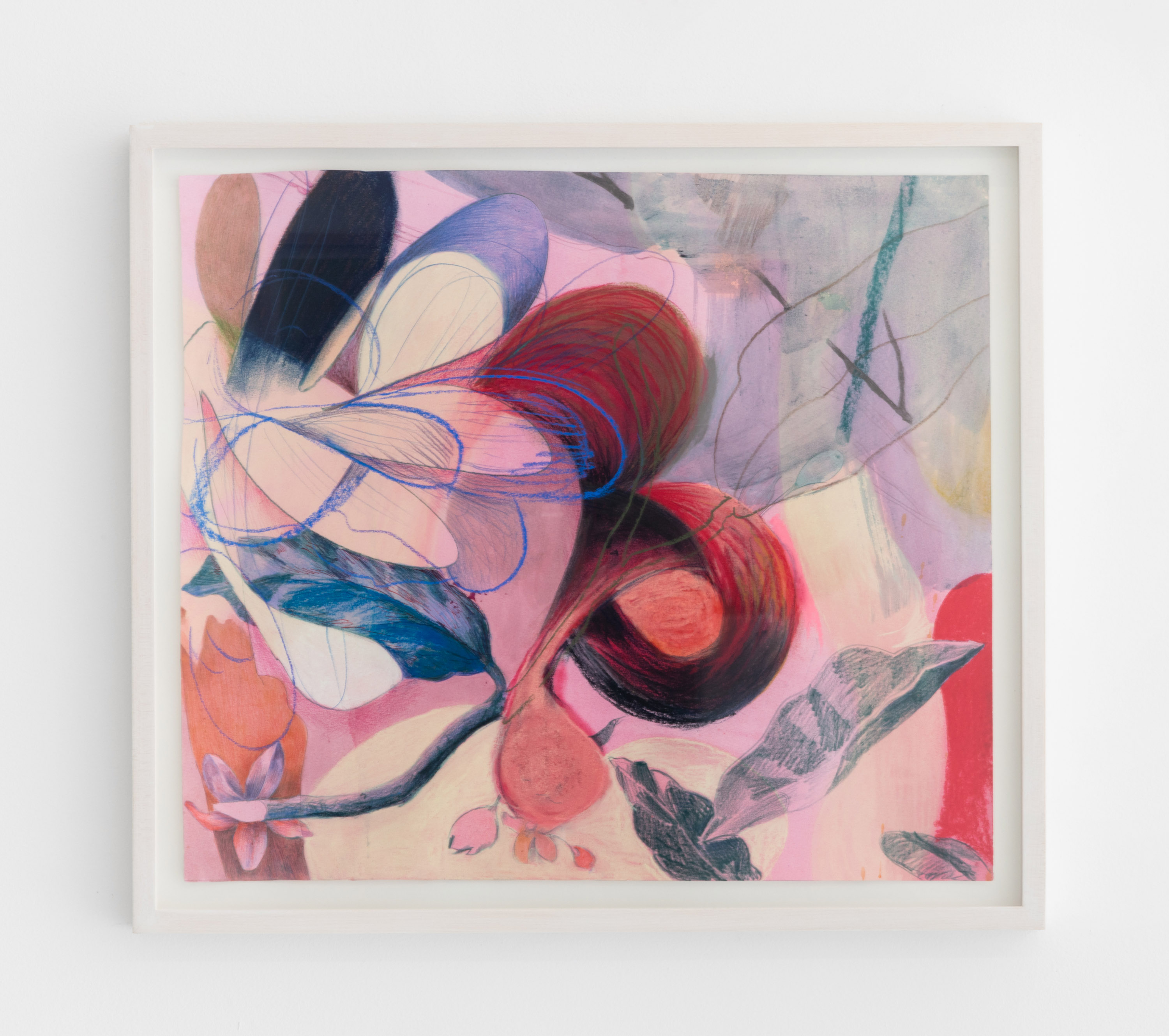
Orb Flower, watercolour, ink, pastel, pencil and pencil crayon on paper, 22 x 19 in, 2019
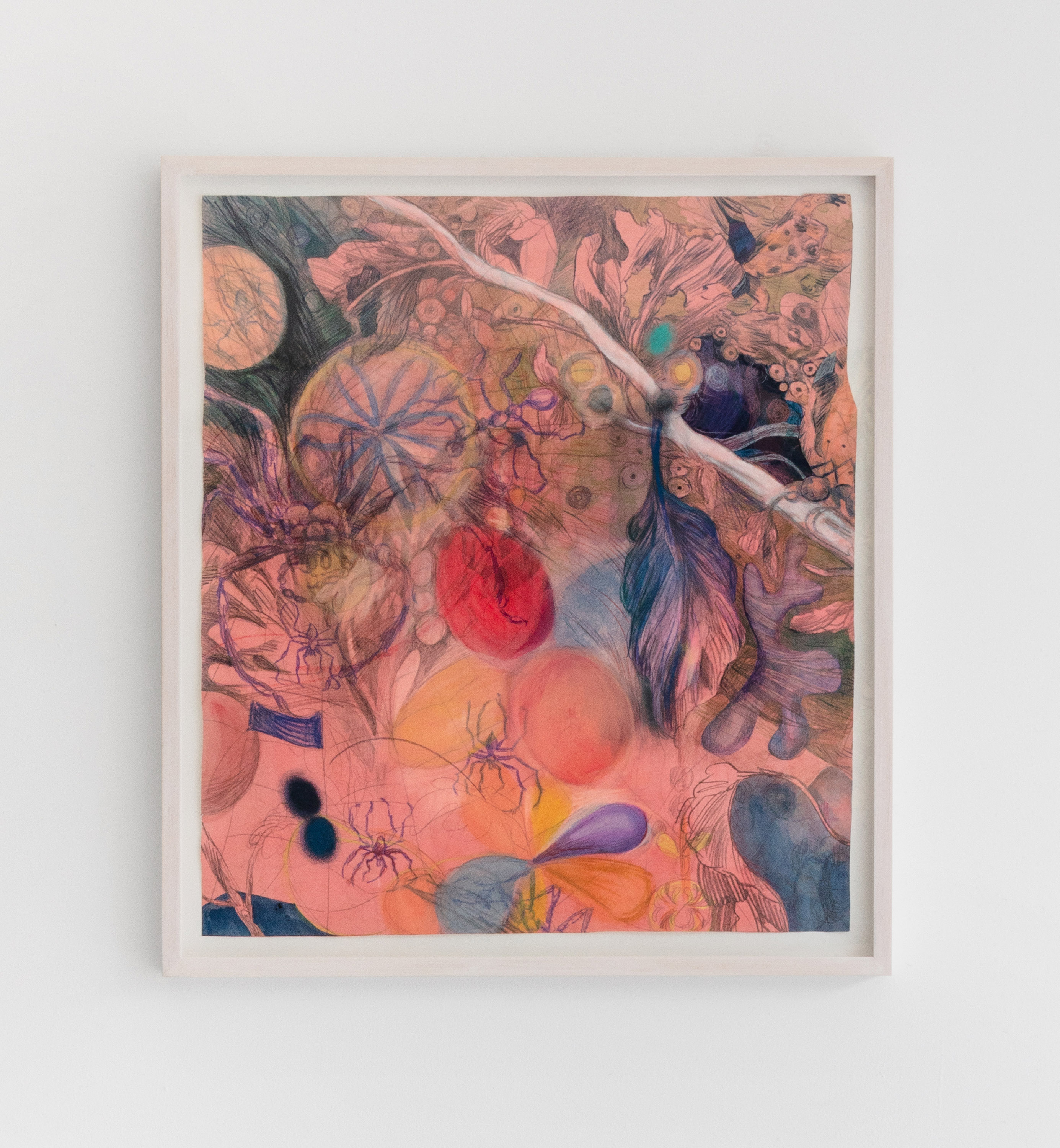
Leggy Confusion, watercolour, ink, pastel, flashe, pencil and pencil crayon on paper, 22 x 25 in, 2019
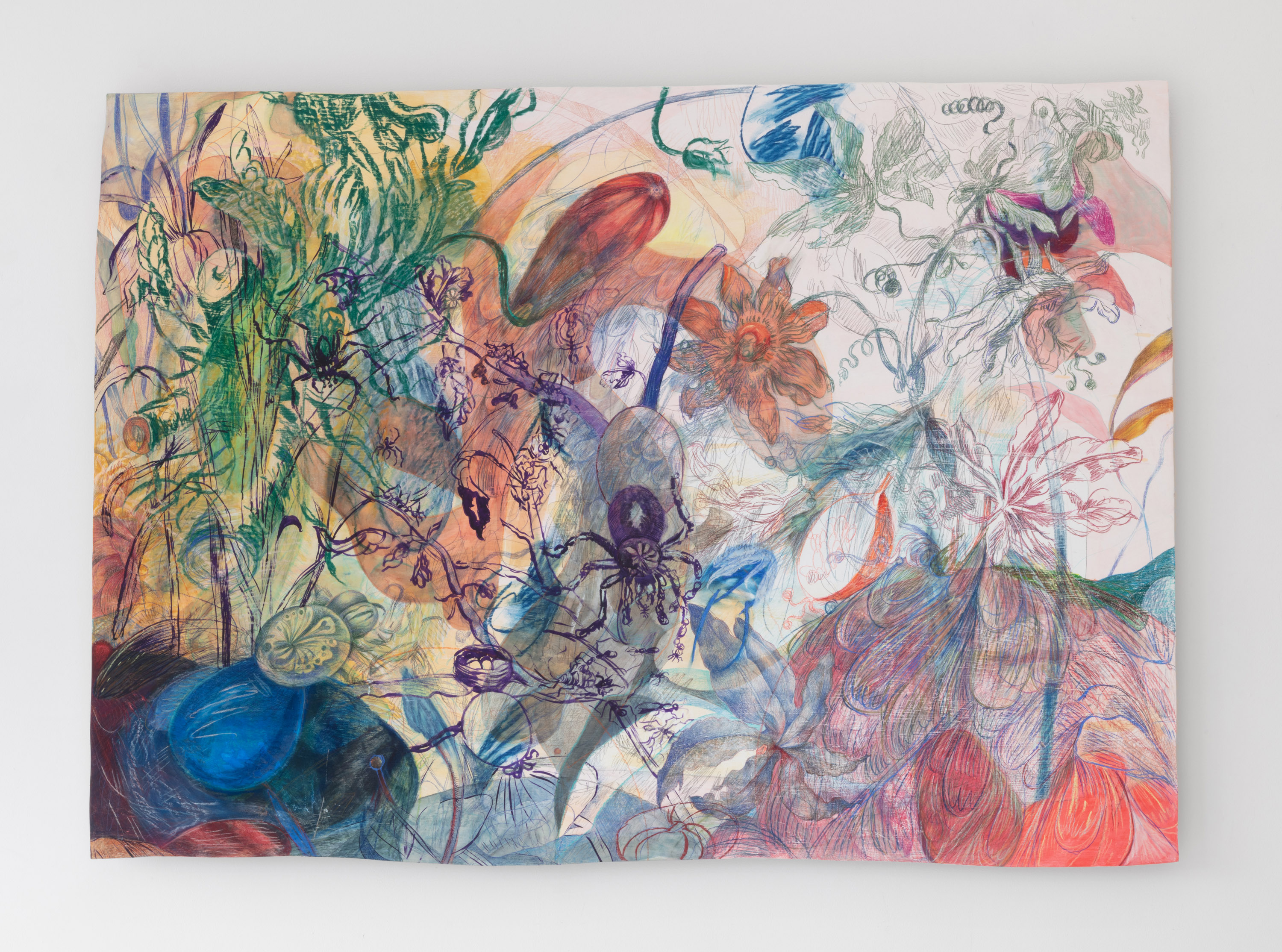
Spiderplant, watercolour, ink, pastel and pencil crayon on panel, 45 x 60 in, 2018
"Tentacularity is about life lived along lines — and such a wealth of lines — not at points, not in spheres”
(Donna Haraway, ‘Tentacular Thinking: Anthropocene, Capitalocene, Chthulucene’)
Who can claim to see, from a body or a place, anything besides a tangled thicket? Among trees, shifting wind and light diffract into patterns, which reveal new dimensions of moss and critter, colour and texture. In 'The Secret Life of Forms', a mesh of pigments and lines reframe the 'natural', casting light on Sarah Davidson's various references. Sinuous lines link to Hilma af Klint, Maria Sibylla Merian, or Ernst Haeckel - through a sieve of observation and projection. Weaving of this kind is not the disembodied view of a transcendentalist; the dizzying effect of roaming perspective is a spidery thought. Sticky webs fold and cling as spiders weave meanings in the changing light and the wind between branches.